Chapter Five
THE MODERN PORTRAIT
in Photography and
Impressionist Painting
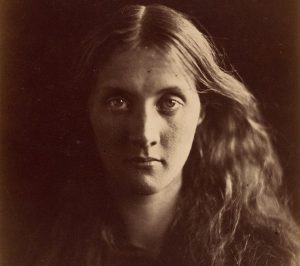
CONTENTS
Introduction
5.1
5.2
Early Photographic Portraiture
5.3
Portrait Photography, Art, and Aesthetics
5.4
Félix Nadar: Beyond the Documentary Portrait
5.5
Julia Margaret Cameron: Art Photography and Pictorialism
5.6
Modern Impressionist Portrait Paintings and the Impact of Photographic Techniques
5.7
Edgar Degas and the Influence of Photography
5.8
Impressionist Portraits of Colleagues and Friends
5.9
5.10
Auguste-Pierre Renoir and the Group Portrait
5.11
INTRODUCTION
The invention of photography significantly impacted avant-garde painters who were interested in representing contemporary life. The immediacy and objectivity of the medium attracted Impressionists whose interest was in capturing the ever-changing, everyday experiences of the modern world. The advent of photography radically altered how visual art was both conceived and perceived.
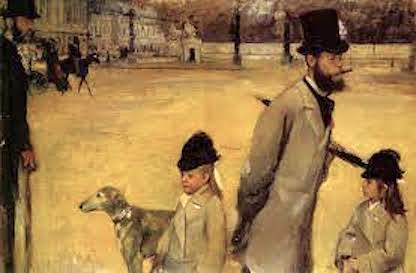
Freed from the burden of mimetic representation, artists shifted their attention to the portrayal of the fleeting and fragmentary events of life. Painters slowly began to appropriate the techno-formal aspects of the still photograph—the shaping power of light, the use of altered perspective, an interest in cropped spaces, and the exploration of increased spatial ambiguities that echoed the moving continuum of lived experience—to paint their images of a world in flux. Initially, paintings that strayed too far from objective representation were deemed unfinished, but in time their arbitrariness became accepted as an aspect of modern art.
The relationship between photography and painting was reciprocal. The photographic portrait did not remain static but evolved as well, moving from a mechanistic recording of likeness with the one-of-a-kind invention of the daguerreotype to the popular multiples of the carte-de-visite to more sophisticated and nuanced studio photography and finally to pictorialism, which engaged with broader art forms as art photography and secured its legitimate place as fine art.
This chapter will consider Impressionist portraiture within its historical context and its relationship to the parallel evolution of photographic images. The work of artists associated with the French avant-garde, such as Degas, Bazille, and Renoir, will be considered in terms of the innovations they implemented within the context of the portrait genre and how their ambitions for painting people in a modern world advanced the conceptualization and creation of late nineteenth-century portraiture.
5.1
| The Invention of Photography
In 1837, Louis Daguerre, a painter, printmaker and proprietor of the Parisian Diorama, invented the daguerreotype camera. It was the first commercially available method of mechanical image reproduction. Each daguerreotype was a finely detailed and permanent unique image recorded on a silvered copper plate. The process involved treating the silver-plated sheets with iodine to make them light sensitive, then developing them in a camera with mercury vapour.
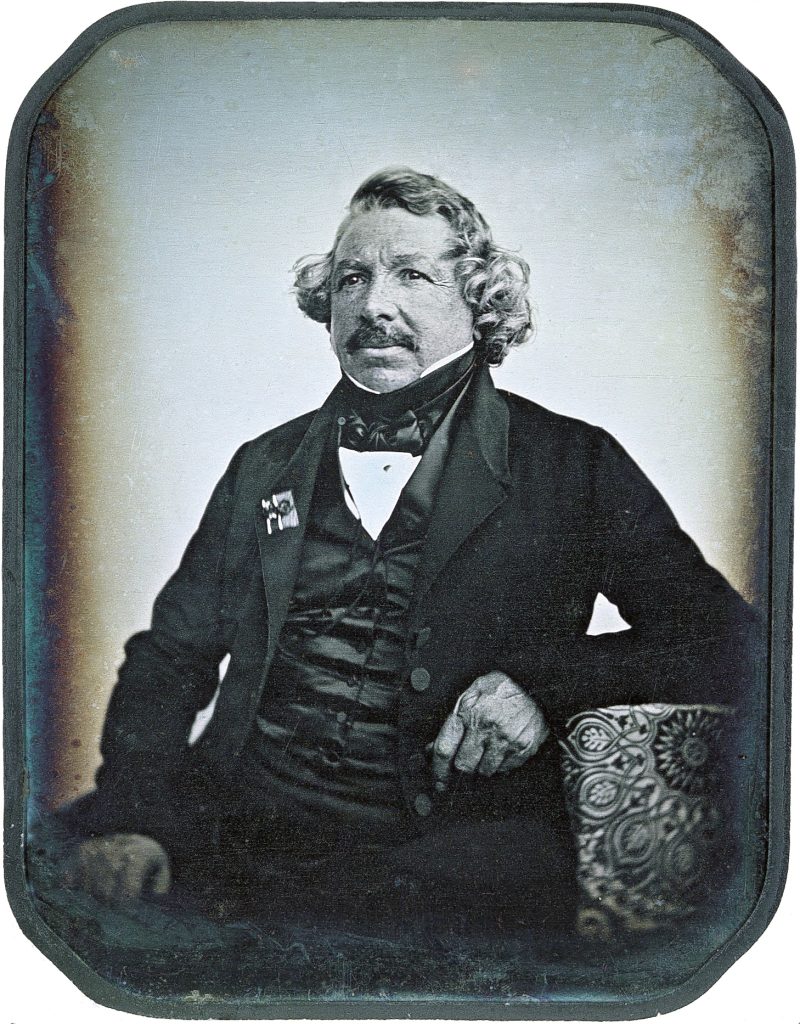
The invention of photography in the early nineteenth century revolutionized the nature and possibilities of visual representation.
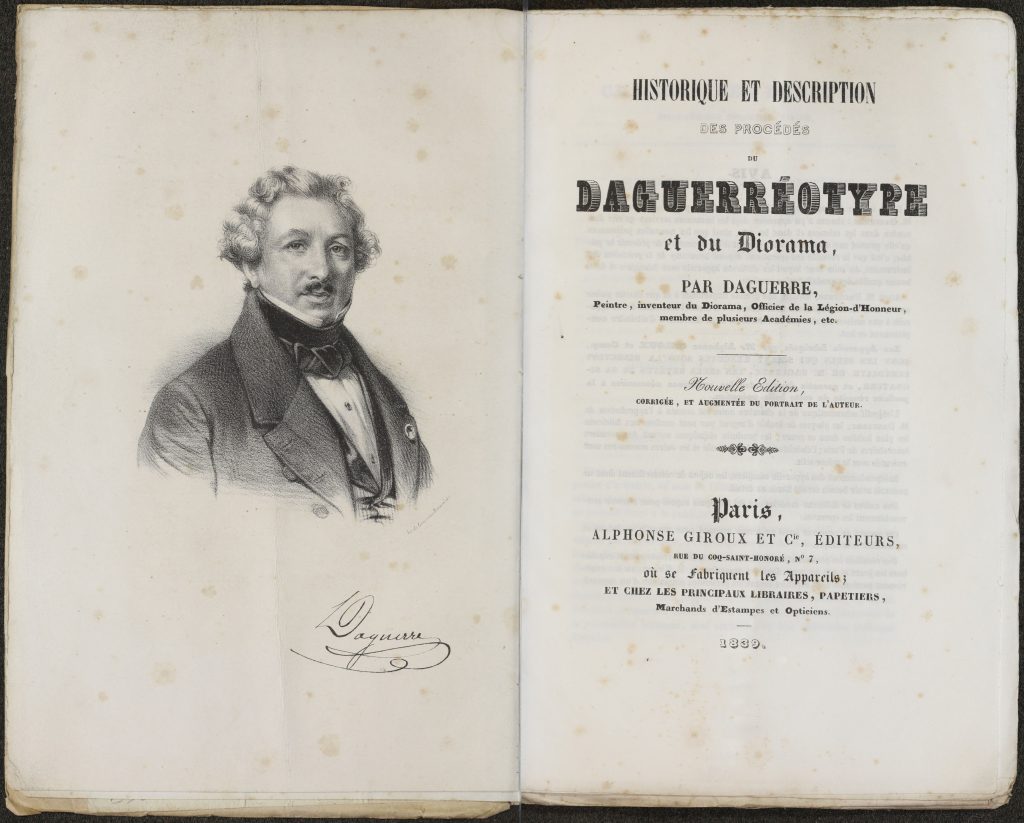
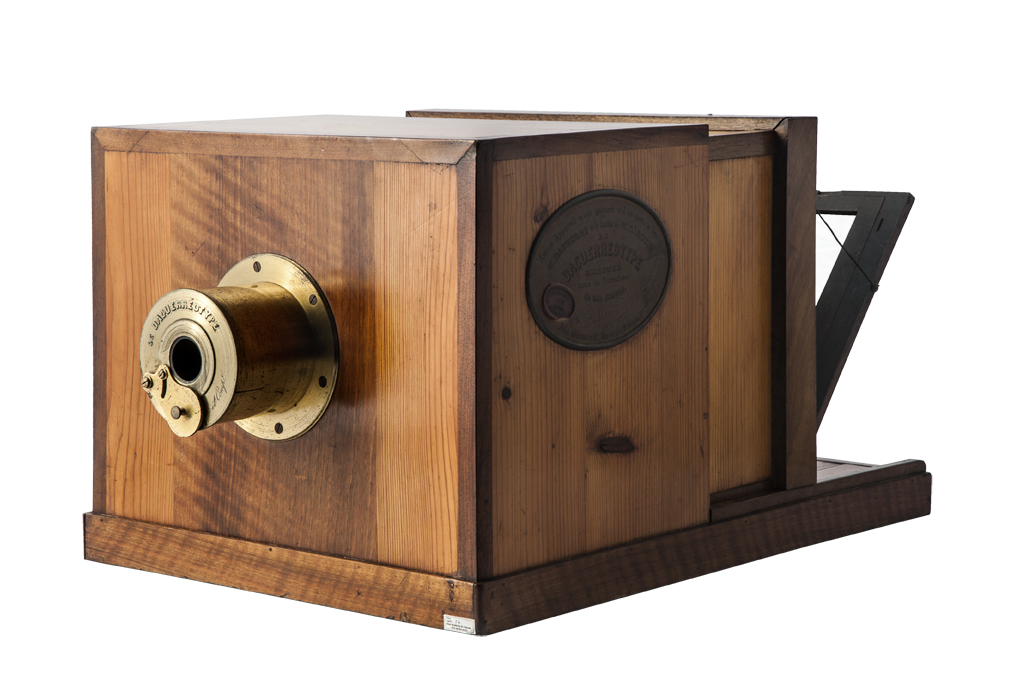
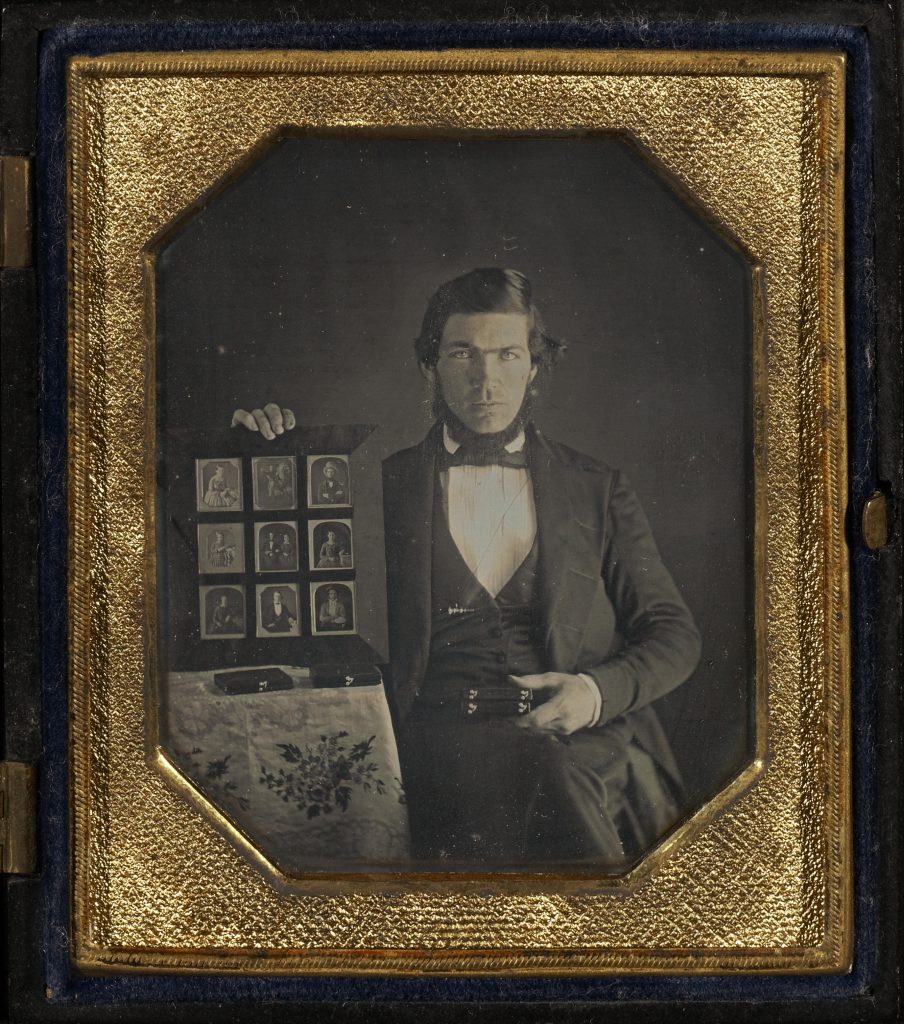
Daguerre introduced his product to the French Académie des Sciences in January 1839, and to the public in late summer of that year. He followed up by patenting his product, demonstrating the process at the Conservatoire des Arts et Métiers, and publishing an informational handbook. He also actively promoted his invention in Berlin, New York, and London.
Daguerreotypes initially required long exposure lengths due to the low light sensitivity of the plates. By 1841, better plates combined with Joseph Petzval’s development of a new lens in Vienna (the Petzel lens) shortened exposure times sufficiently to open the door to large-scale portrait photography.
Before the invention of photography, a painted portrait was an unaffordable luxury for the average person. Even in its infancy as a relatively precious commodity, the daguerreotype made a photo portrait accessible and highly desirable. As the technology improved, so did the cost, boosting popularity and demand. In 1849 alone, approximately 100,000 photographic portrait pictures were recorded in Paris, adversely affecting miniature portraitists and negatively impacting larger portrait commissions.
Daguerreotypes were positive, inverted images that could not be produced as multiples. Images could, however, be reproduced through “redaguerreotyping” the original plate. As a technique, it required a subject to sit still for a light-dependent period of time, anywhere from three to thirty minutes.
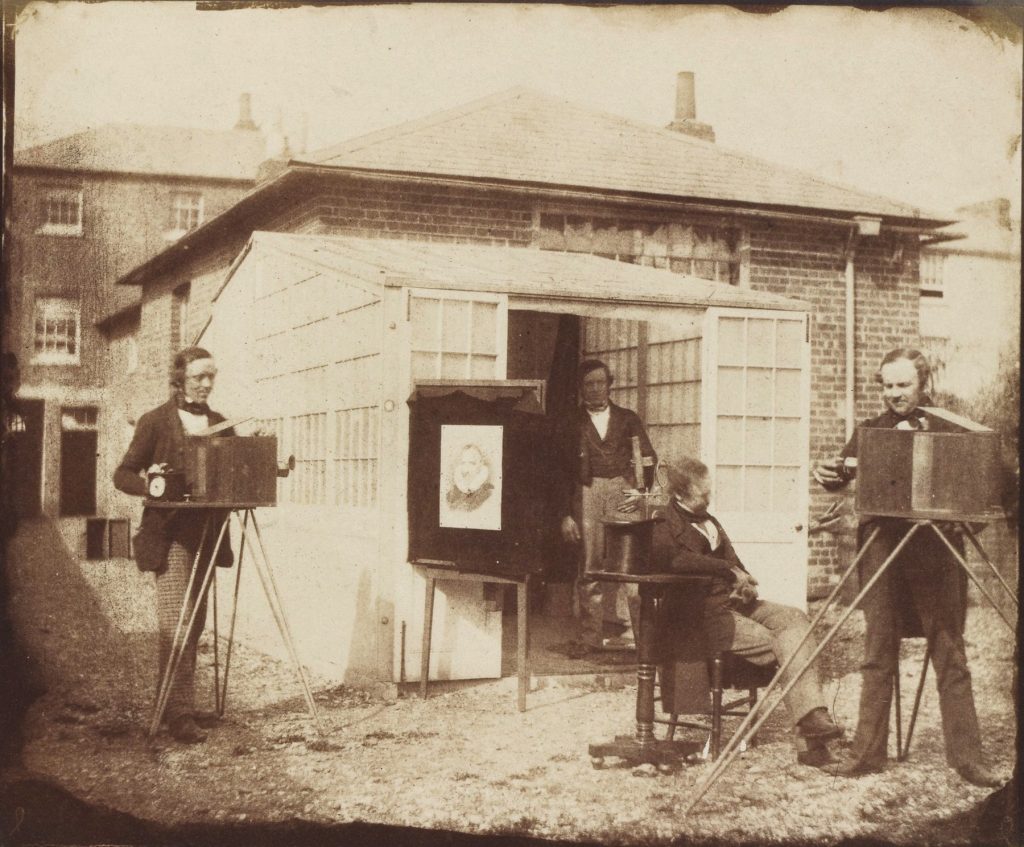
The innovations made by Fox Talbot, who invented the negative-positive photographic process, and the physicist Louis Fizeau, who developed Gilding, a gold-toned image, made it possible to produce photographs more resistant to deterioration and cheaper to make.
5.2
| Early Photographic Portraiture
From its early beginnings, photography presented as a double-edged medium, both a scientific device and a means of aesthetic expression. The first generation of portrait photographers struggled with this duality even as they experimented with new techniques, debating whether photography should appropriate the aesthetic concerns and characteristics of portrait painting, the expressive significance of poses and background props, and issues of composition, lighting and how to render tone and texture monochromatically.

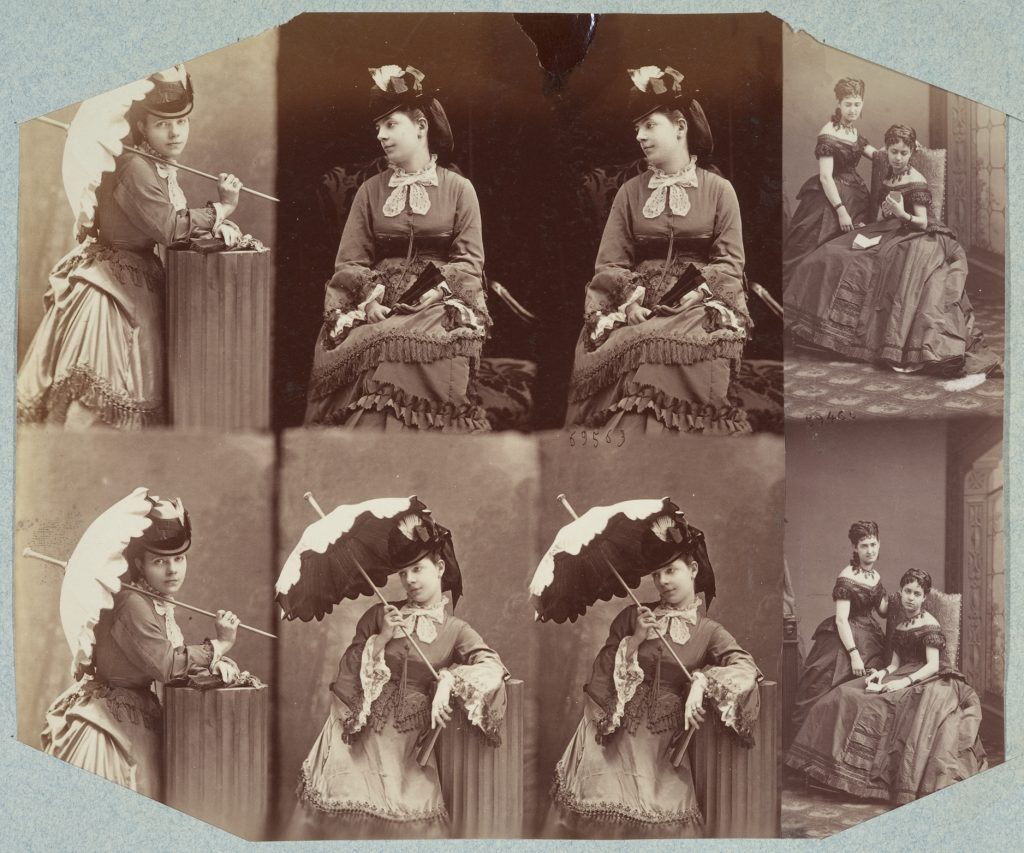
Malcolm Daniel provides an overview of photographers’ challenges in “The Industrialization of French Photography after 1860” (Heilbrunn Timeline of Art History. New York: The Metropolitan Museum of Art, October 2004. (http://www.metmuseum.org/toah/hd/infp/hd_infp.htm)
The decade of the 1850s was a “golden age” in the art of photography. Artists of great vision and skill took up a fully mature medium, tackled ambitious subjects, and lavished care in producing large, richly toned, and colorful prints for a select group of fellow artists or wealthy patrons. By the 1860s, times were changing, and the medium became increasingly industrialized. Instead of mixing chemicals according to personal recipes and hand coating their papers, photographers could buy commercially prepared albumen papers and other supplies. Increasingly, the marketplace pressured photographers to produce a greater quantity of cheaper prints for a less discerning audience. In marketing to a middle class, aesthetic factors such as careful composition, optimal lighting conditions, and exquisite printing became less important than the recognizable rendering of a familiar sight or famous person.
With the industrialization of the photographic medium in the 1860s, pressure turned to production. In 1854, A.A-E. Disdéri had discovered how to produce multiple exposures on a single glass-plate negative which he printed and divided into separate pictures measuring nine-by-six centimetres. The negative could be printed a dozen times cheaply, and just like that, the carte-de-visite (calling card) was born.
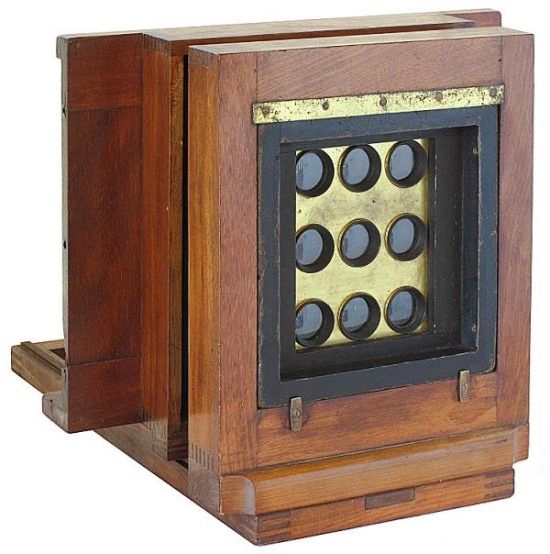
Cartes-de-visite (abbreviated CdV) were postcard-size portraits made by a new multiple-lens camera with consecutively releasable shutters. The camera furnished six or eight exposures on a single plate. These multiple images became extremely popular; they were pasted on mounts and distributed to friends and business associates as visiting cards. The CdV craze necessitated hiring teams of new employees (1855 records indicate Disdéri’s business hired as many as 77 assistants), and sales volumes soared.
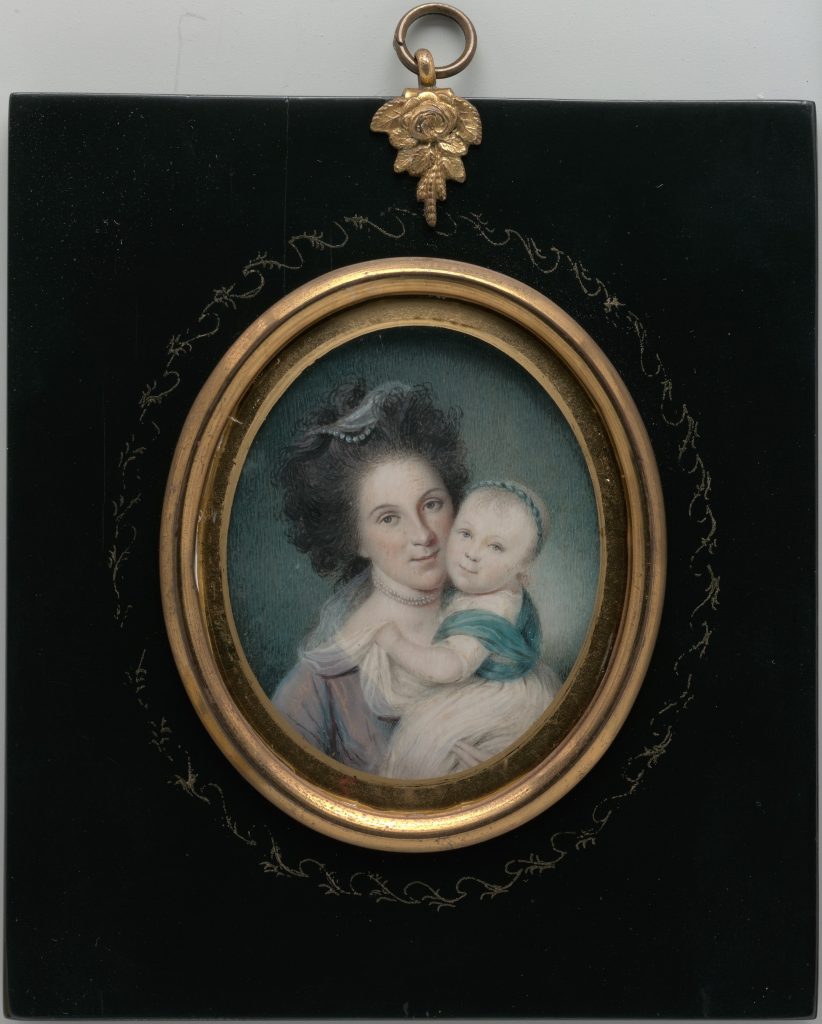
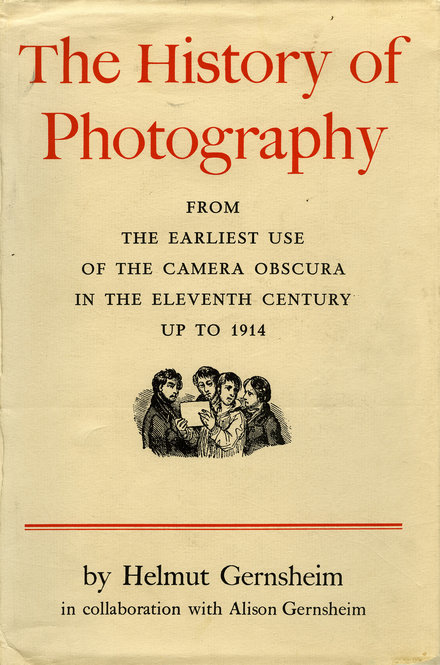
Early photography precipitated the downfall of miniature painting and presented portrait painters with serious competition. “In the summer of 1861,” according to Helmut and Alison Gernsheim in The History of Photography from the Earliest Use of the Camera Obscura in the Eleventh Century up to 1914 (London: Oxford University Press, 1955), “33,000 people made their living from the production of photographs and photographic materials in Paris alone.”
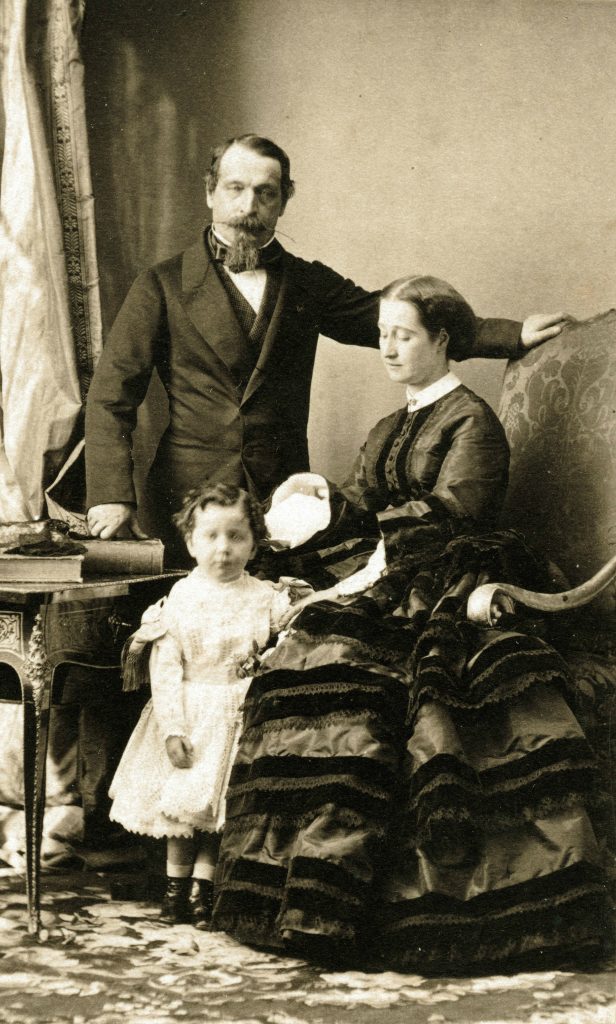
As Max Kozloff describes in “Nadar and the Republic of the Mind” (Artforum 15 no. 1 (September 1976): 28-39), Disdéri was appointed the first official court photographer:
The royals had found a novel way of coining their images and of putting to use a new technology whose economic success originated in the cachet of their patronage… At the same time, it became clear that an intimate form of social exchange and personal talisman had had a public impetus and played a propaganda role. Ruling families could mime the domestic virtues in cheap, easily distributed images. Bourgeois could have themselves portrayed by means of an aristocratic emblem.
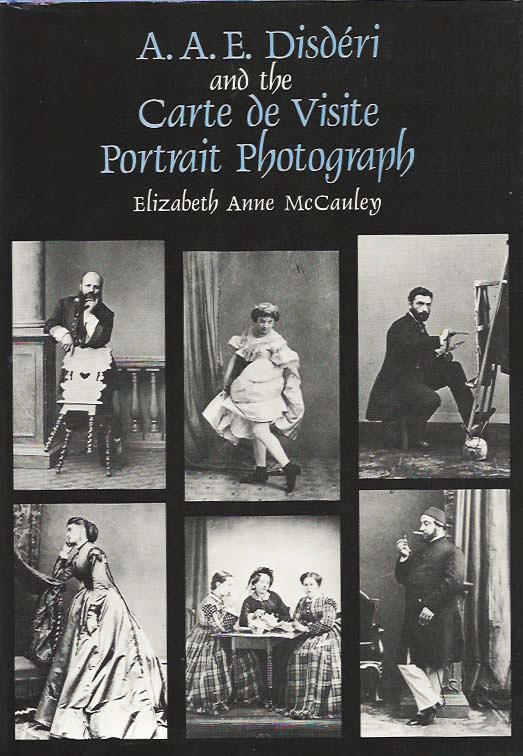
CdV’s were available to everyone, from the wealthy elite to the filles de joie of the Second Empire’s demimonde. They anticipated the democratization of photography with the medium’s second wave of technological innovation with the American George Eastman’s Kodak camera in the 1880s.
Elizabeth Anne McCauley, in A. A. E. Disdéri and the Carte de Visite Portrait Photograph (Yale University Press, 1985), in her analysis of several technical manuals published by Disdéri, describes the criteria he recommended for creating an aesthetic portrait. He advised putting subjects at ease and paying attention to the personality behind the features. “One must be able to deduce who the subject is,” he wrote, “to deduce spontaneously his character, his intimate life, his habits; the photographer must do more than photographe, he must biographe.“
In discussing the origins of the CdV’s mass appeal, McCauley suggests that it occurred after the aristocracy’s first portraits were made, catching on with the general public, who then imitated upper-class dress and demeanour.
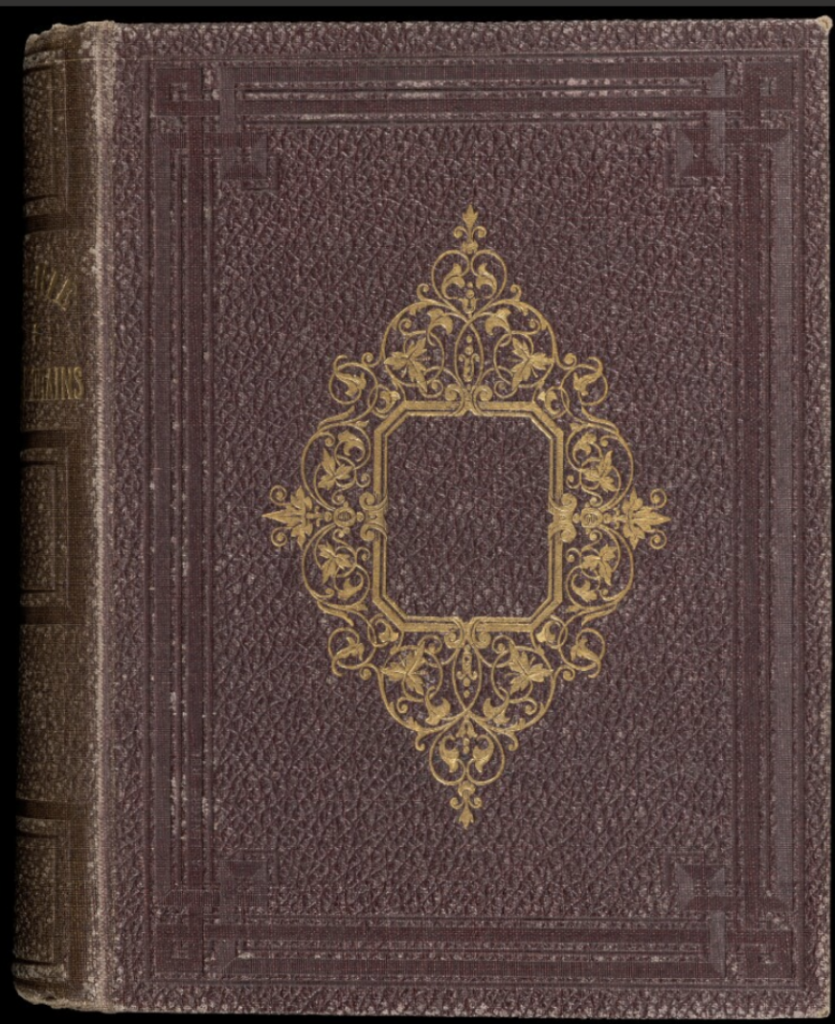
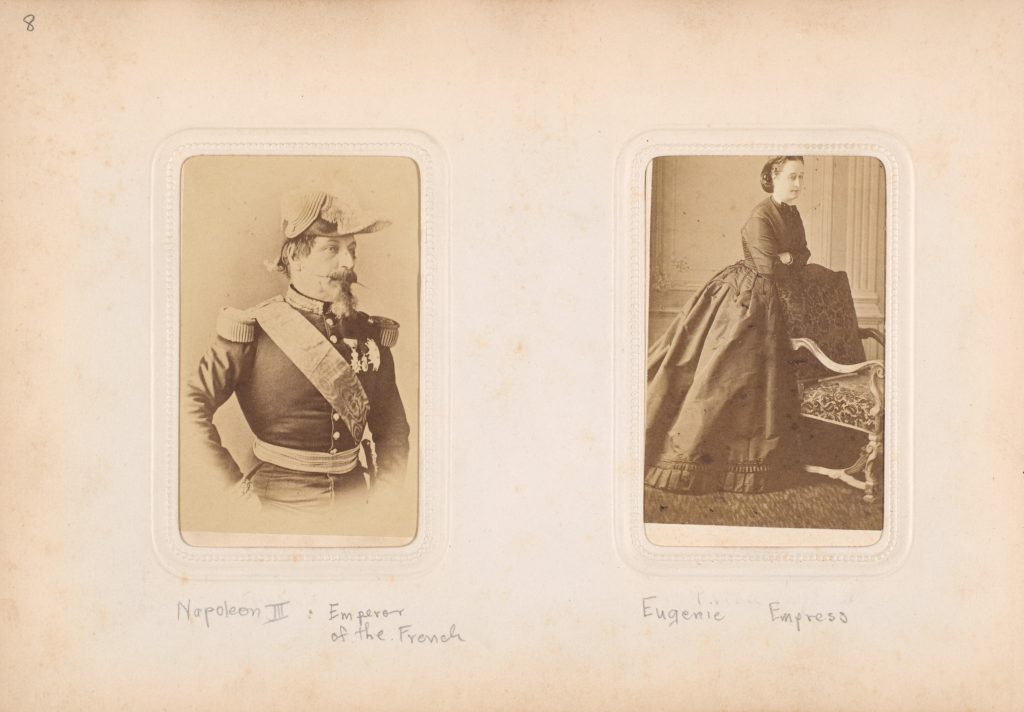
As the infatuation with photographs increased, elegant albums were introduced as picture-keepers. This was a fashion that McCauley calls the “elevation of the photographic album to the status of an icon.”
McCauley emphasizes the correlation between the carte-de-visite and the period’s “insidious transformation of the individual into a malleable commodity.” The demand for calling cards was an “early step toward the simplification of complex personalities into immediately graspable and choreographed performers whose faces rather than actions win elections and whose makeup rather than morals gains public approbation.”
The consensus outside the ranks of professional photographers was that photography was not a bonafide art form. In his “The Salon of 1859: The Modern Public and Photography,” Charles Baudelaire decried the rise of the photographic industry and its assumed similarity to art:
During this lamentable period a new industry arose which contributed not a little to confirm stupidity in its faith and to ruin whatever might remain of the divine in the French mind….The idolatrous mob demanded an ideal worthy of itself and appropriate to its nature- that is perfecting understood….Thus an industry that could give us a result identical to Nature would be the absolute of art. A revengeful God has given ear to the prayers of the multitude. Daguerre was his Messiah. And now the faithful says to himself: Since Photography gives us every guarantee of exactitude that we could desire (they really believe that, the mad fools!), then Photography and Art are the same thing.
Despite widespread criticism, photographers increasingly asserted their claim to artistic status, not least of which as a bid to increase their social standing.
The overwhelming popularity and restrictions of early portrait images led to standardized studio poses and the inclusion of steadying, sometimes overly theatrical, props.
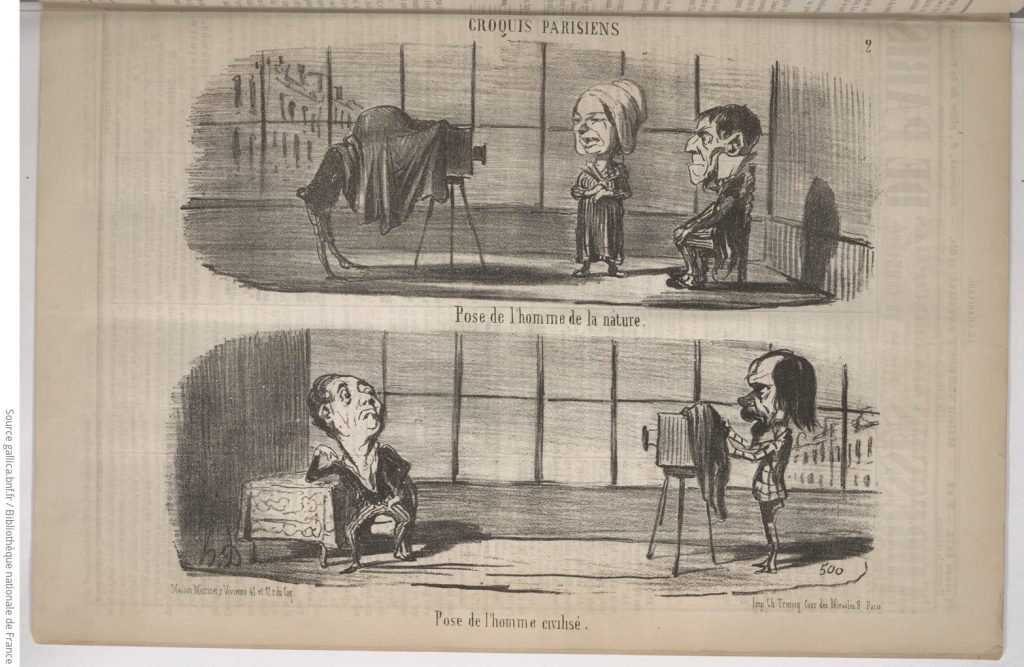
Daumier’s Croquis Parisiens mocked the most typical poses of sitters: the basic frontal rigid orientation of figures looking directly at the camera as if hypnotized, and the artistic photographs characterized by mannered posturing. Daumier labelled them the “pose of the natural man” and the “pose of the civilized man.”
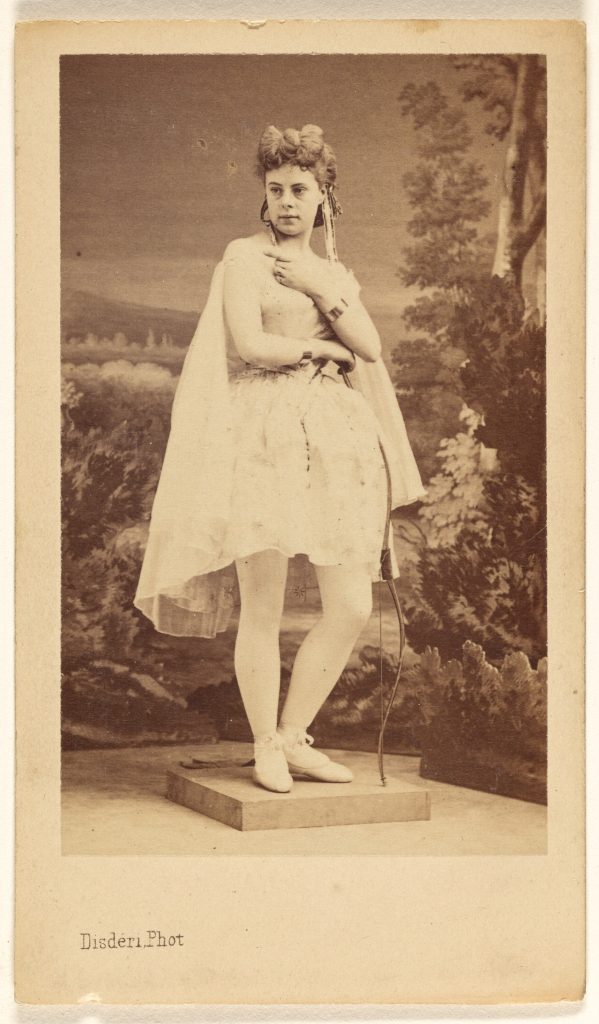

Disdéri’s background in theatrical acting allowed him to pose his subjects more convincingly. His portrait photographs of actors and dancers considerably increased his reputation as an artist.
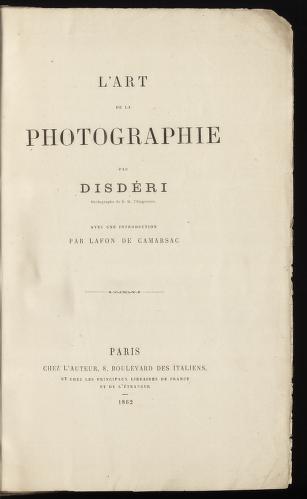
Disdéri’s treatise L’Art de la photographie, published in 1862, offered a wealth of advice on posing the subject. Rather than introducing new declarations about the medium, Disdéri wanted to show that photographic portraiture, like the well-accepted academic portraits shown at the Salon, strove for compositional integrity.
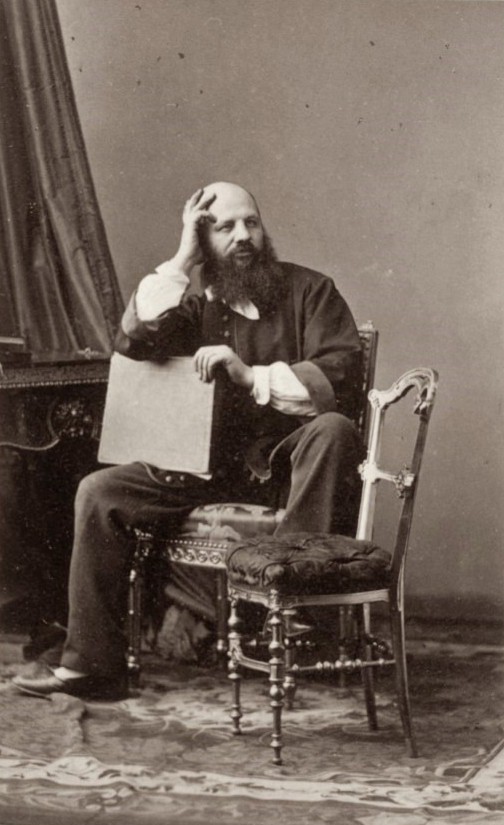
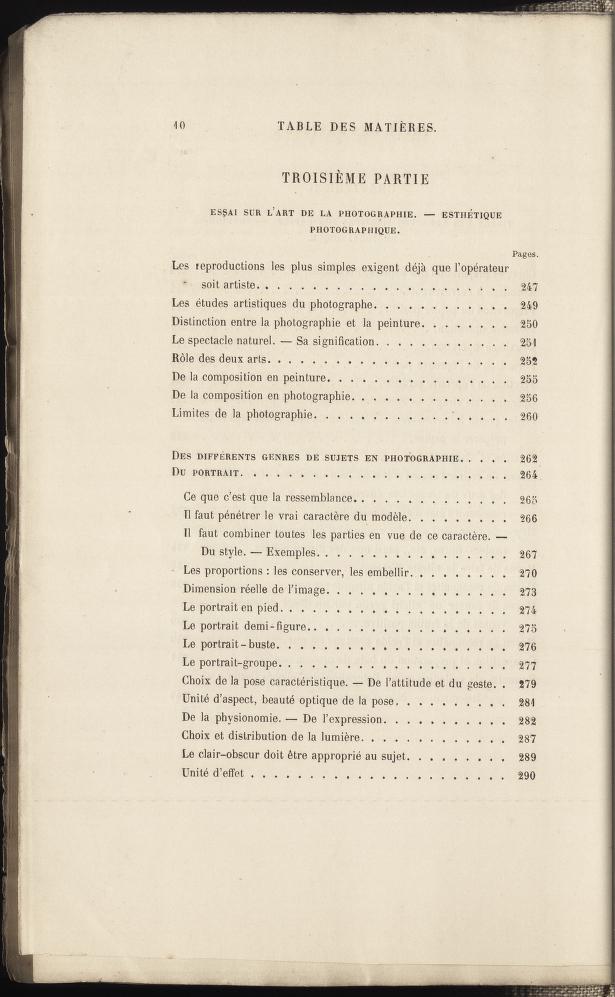
Disdéri insisted that his carte-de-visite photographs respect the formal specifications of the portrait genre, particularly the portrait artist’s ability to capture “a single dominant interest” and the well-defined character or expression of the sitter. He recognized that
a portrait ought to convey a sense of duration rather than the impression of a fragmented moment…It is appropriate to remember that one is trying to reproduce not a scene, but a portrait, and one must not abandon the search for intimate and profound resemblance in order to chase after some aspect that might present itself but that is not a fundamental part of the subject…What needs to be found is the characteristic pose, that which expresses not this or that moment but all moments, the complete individual. (English translation from the chapter titled “The Photograph Pose” in Dianne W. Pitman Bazille: Purity, Pose and Painting in the 1860s (Pennsylvania University Press, 1998), 108-9).
5.3
| Portrait Photography, Art, and Aesthetics
Gustave Le Gray was a central figure in French photography of the 1850s. Malcolm Daniel elaborates on the artist’s contributions to the field of photography in “Gustave Le Gray (1820–1884).” (Heilbrunn Timeline of Art History. New York: The Metropolitan Museum of Art, 2000–. http://www.metmuseum.org/toah/hd/gray/hd_gray.htm (October 2004)
Born the only child of a haberdasher in 1820 in the outskirts of Paris, Le Gray studied painting in the studio of Paul Delaroche, and made his first daguerreotypes by at least 1847. His real contributions—artistically and technically—however, came in the realm of paper photography, in which he first experimented in 1848. The first of his four treatises, published in 1850, boldly, and correctly, asserted that “the entire future of photography is on paper.” In that volume, Le Gray outlined a variation of William Henry Fox Talbot’s process calling for the paper negatives to be waxed prior to sensitization, thereby yielding a crisper image.
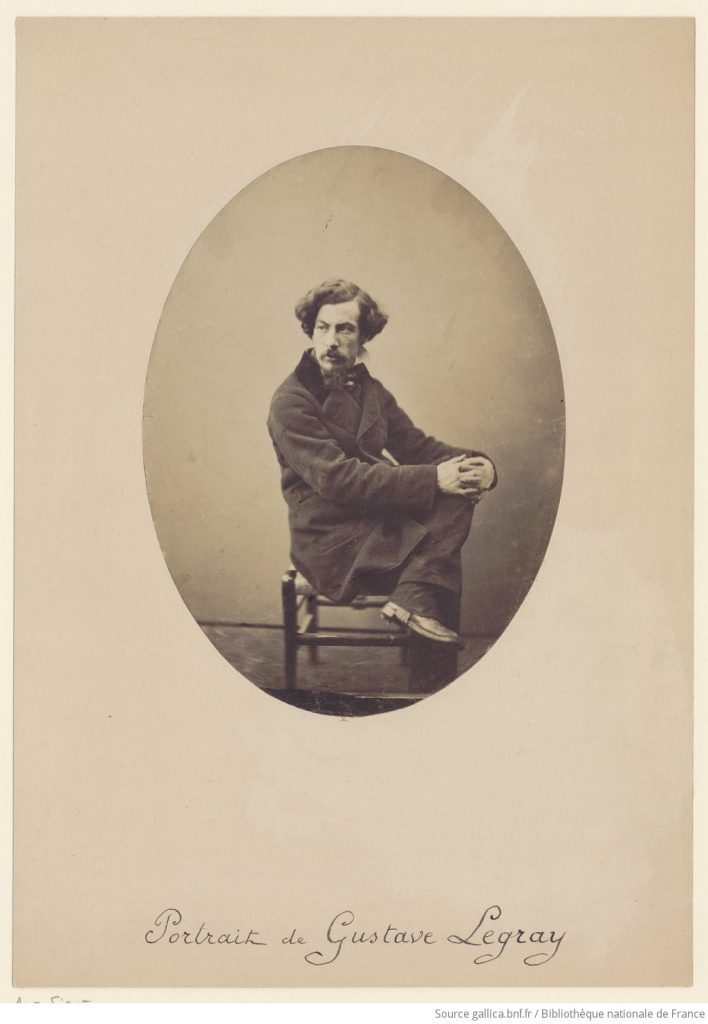
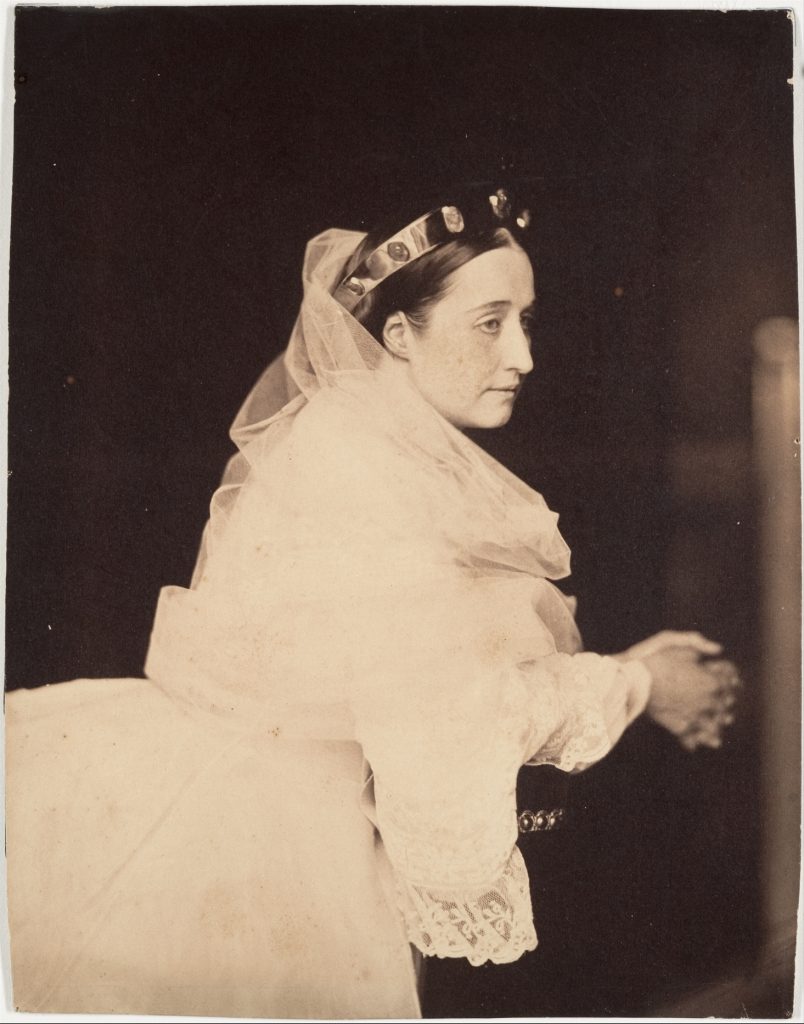
By the time Le Gray was assigned a Mission Héliographique by the French government in 1851, he had already established his reputation with portraits,
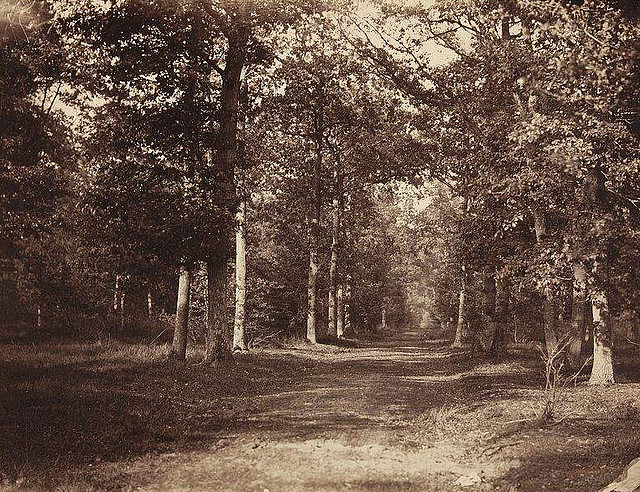
views of Fontainebleau Forest,
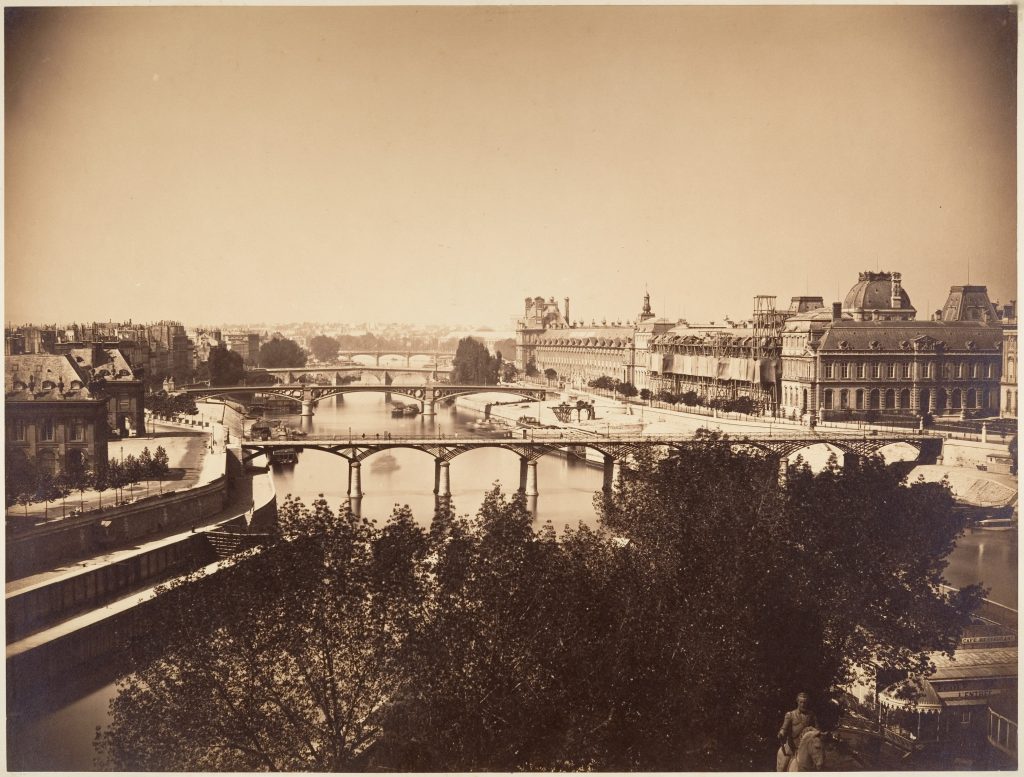
and Paris scenes.
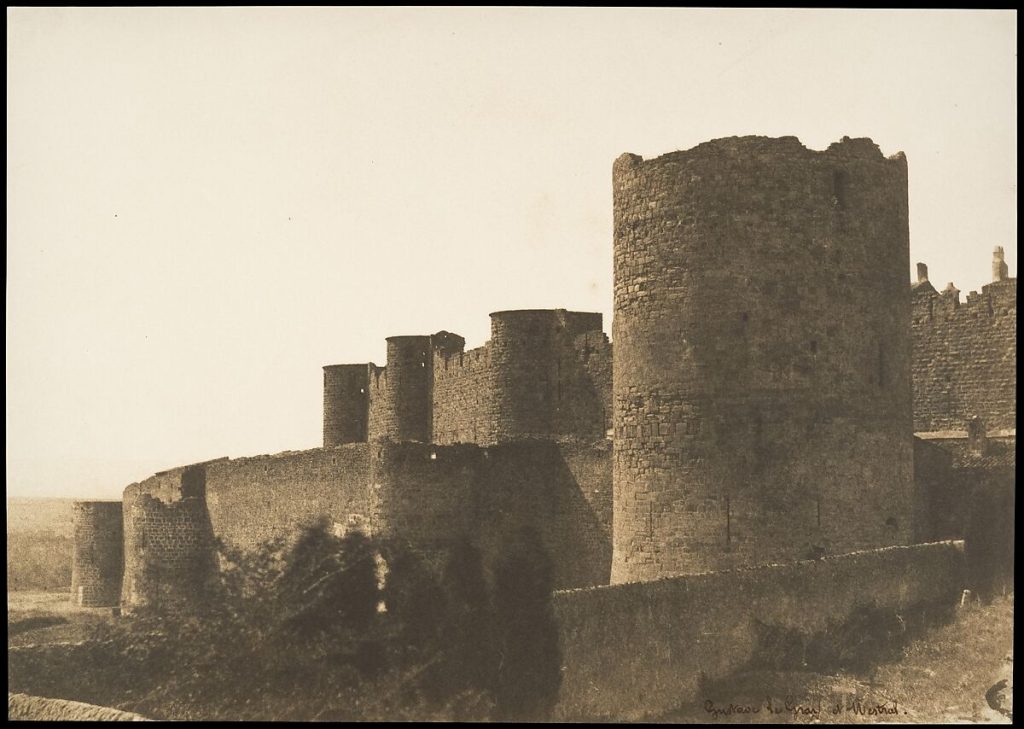
Le Gray’s mission took him to the southwest of France, beginning with the châteaux of the Loire Valley, continuing with churches on the pilgrimage route to Santiago de Compostela and eventually to the medieval city of Carcassonne just prior to “restoration” of its thirteenth-century fortifications by Viollet-le-Duc.
In the 1852 edition of his treatise, Le Gray wrote: “It is my deepest wish that photography, instead of falling within the domain of industry, of commerce, will be included among the arts. That is its sole, true place, and it is in that direction that I shall always endeavor to guide it. It is up to the men devoted to its advancement to set this idea firmly in their minds.” To that end, he established a studio, gave instruction in photography (fifty of Le Gray’s students are known, including major figures such as Charles Nègre, Henri Le Secq, Émile Pécarrère, Olympe Aguado, Nadar, Adrien Tournachon, and Maxime Du Camp), and provided printing services for negatives by other photographers.
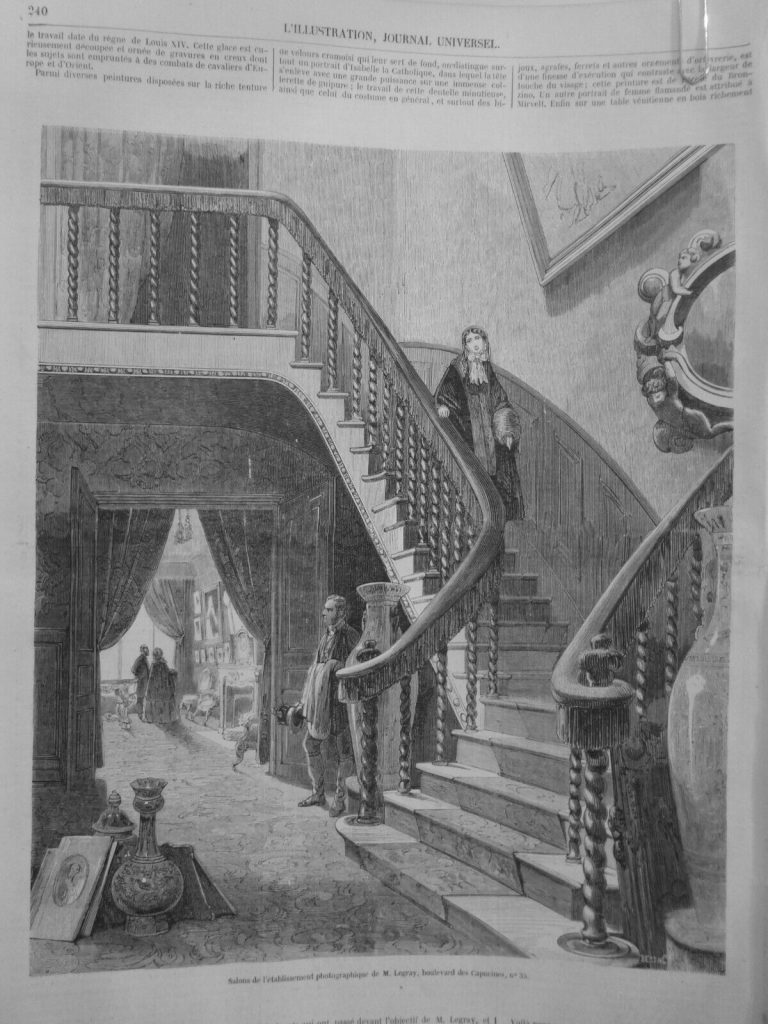
Opening of Gustave Le Gray’s Studio, 35 Blvd des Capucines, Paris, 1856. L’Illustration, Journal Universel, 27, no 685 (April 12, 1856): 240
Flush with success and armed with 100,000 francs capital from the marquis de Briges, he established “Gustave Le Gray et Cie” in the fall of 1855 and opened a lavishly furnished portrait studio at 35 boulevard des Capucines (a site that would later become the studio of Nadar and the location of the first Impressionist exhibition). L’Illustration, in April 1856, described the opulence intended to match the tastes and aspirations of Le Gray’s clientele: “From the center of the foyer, whose walls are lined with Cordoba leather … rises a double staircase with spiral balusters, draped with red velvet and fringe, leading to the glassed-in studio and a chemistry laboratory. In the salon, lighted by a large bay window overlooking the boulevard, is a carved oak armoire in the Louis XIII style … Opposite over the mantelpiece, is a Louis-XIV-style mirror … [and] various paintings arranged on the rich crimson velvet hanging that serves as backdrop … Lastly on a Venetian table of richly carved and gilded wood, in mingled confusion with Flemish plates of embossed copper and Chinese vases, are highly successful test proofs of the eminent personages who have passed before M. Le Gray’s lens…However, the principal merit of the establishment is the incomparable skill of the artist…Despite a steady stream of wealthy clients, the construction and lavish furnishing of his studio ran up huge debts…On February 1, 1860, Gustave Le Gray et Cie was dissolved.
5.4
| Felix Nadar:
Beyond the Documentary Portrait
Before taking up photography in 1854, Nadar worked as a novelist, journalist, editor, and caricaturist for the Parisian press. The year he took up photography, he self-published his first lithograph entitled the Panthéon Nadar, a set of two large lithographs that comprised caricatures of prominent Parisians. He first created photographic portraits of the persons he went on to caricature.
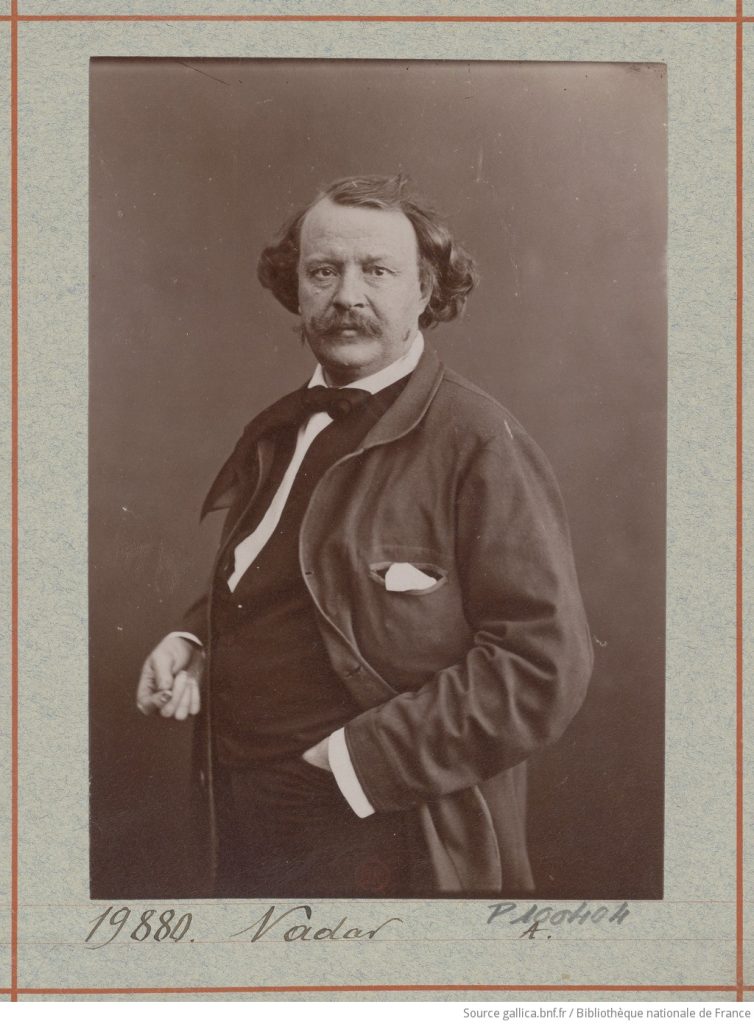
Nadar (Gaspard-Félix Tournachon), the flamboyant French portrait photographer caricaturist, writer, and aerial photographer, was Gustave Le Gray’s student. The name Nadar derives from his political caricature-related moniker, tourne a dard which means “biting sting.”
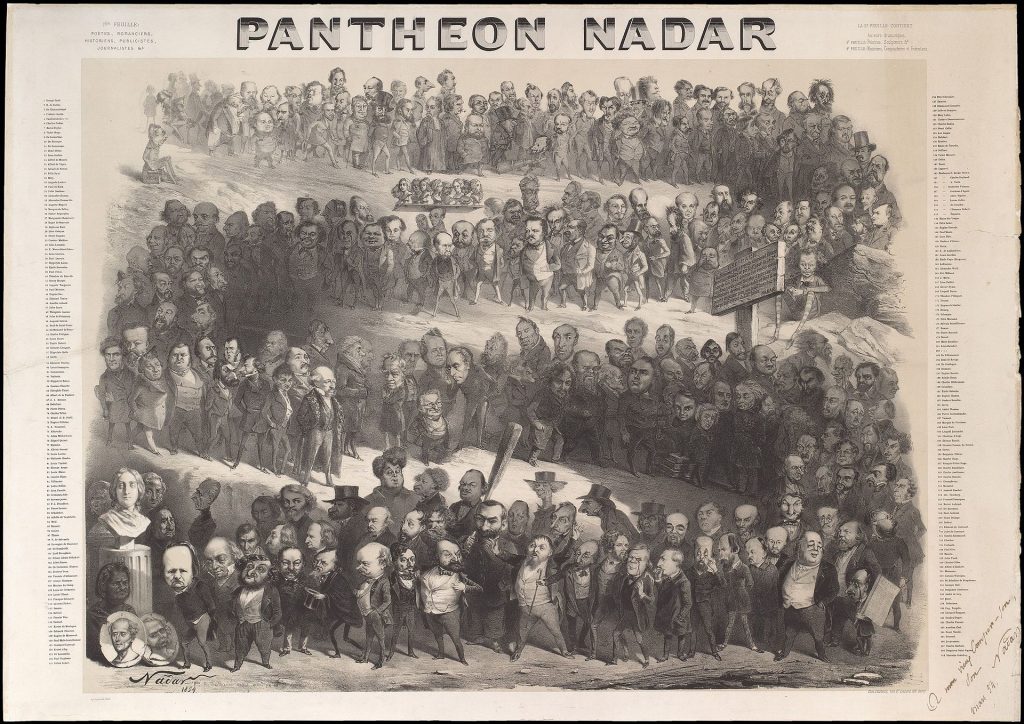
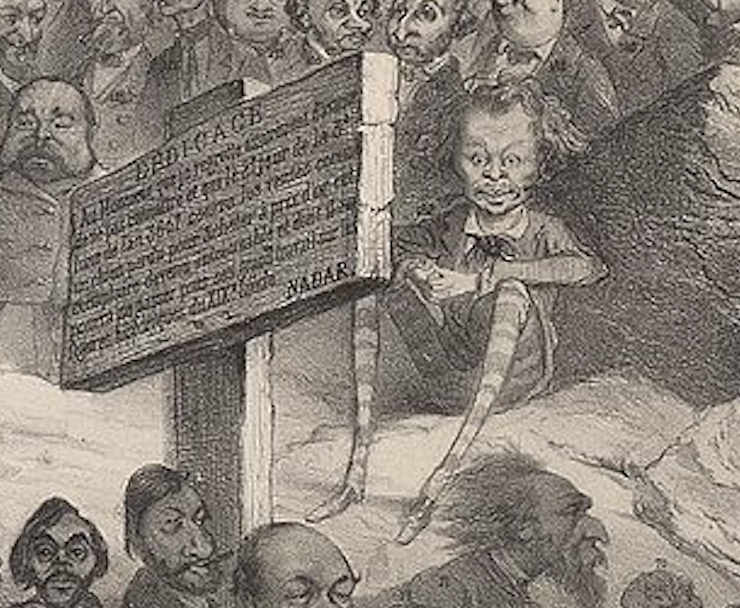
Nadar included himself among the two hundred prominent Parisians, each carefully articulated with identifying characteristics and idiosyncrasies. These lithographs reflect the elements that remained consistently important to Nadar: first, the carefully observed likenesses that captured his subjects’ qualities and accomplishments and second, the celebrity status bestowed on his work and himself, by virtue of the individuals represented.
Jullian Lerner has devoted considerable attention to Nadar’s self-portraits as “performative specimens” deployed for social purposes. He writes in Experimental Self-Portraits in Early French Photography (Routledge, 2021): “Nadar seems to have understood his likeness and his life story as signatures too—distinctive flourishes that could be amplified and redrawn to produce an identifiable pattern. He made an astounding number of self-portraits. There were literary and graphic self-portraits in the comic press, on party invitations, and in works of art criticism. Each charged portrait underscored the same peculiar Nadarian traits.”
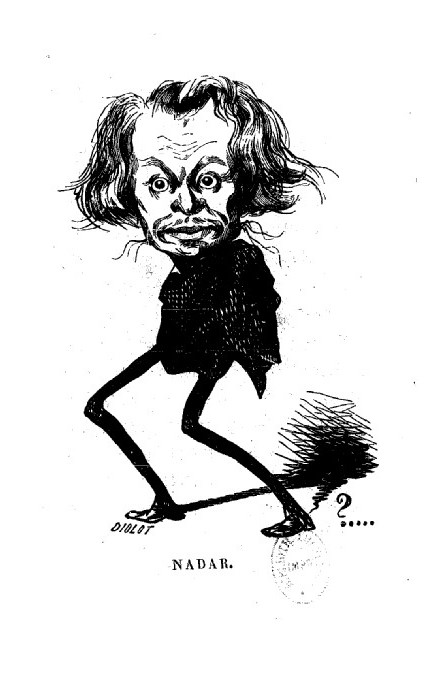
The traits he made sure he captured in his self-image included his spindly appearance, messy red hair that was as unruly as his opinions, and his lively eyes.
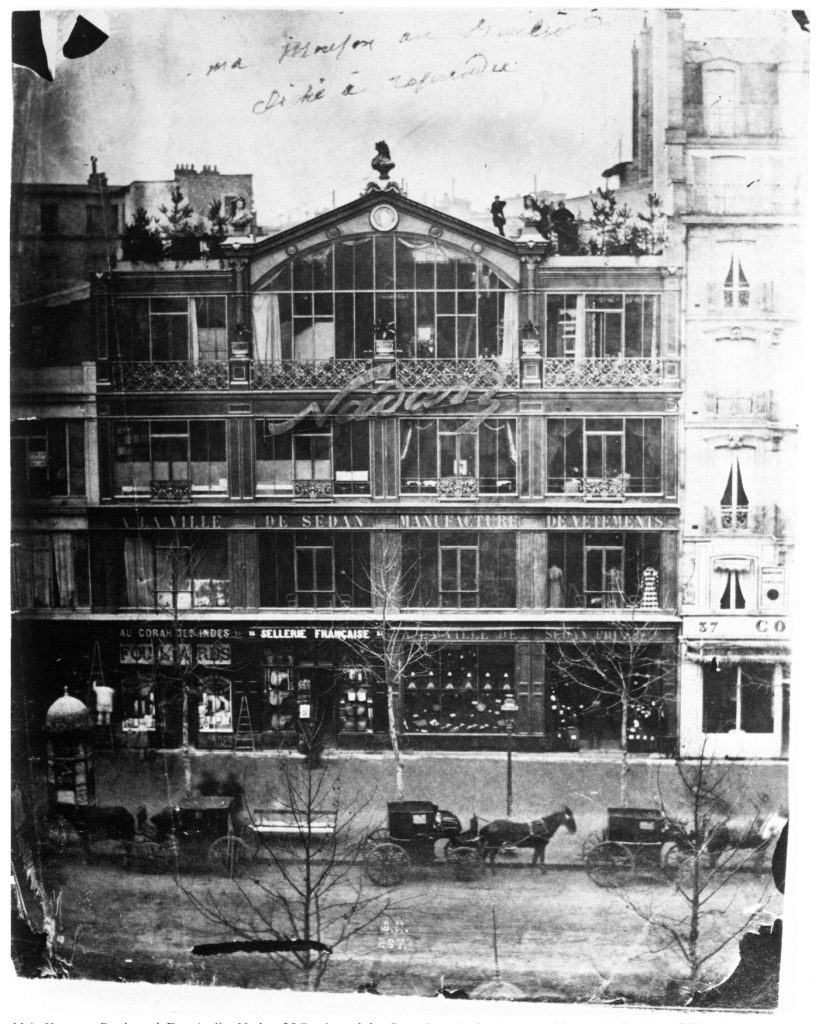
By 1858, three years after opening his first studio Nadar was one of Europe’s most celebrated portrait photographers. In 1860 he moved to lavish new studios on the Boulevard des Capucines.
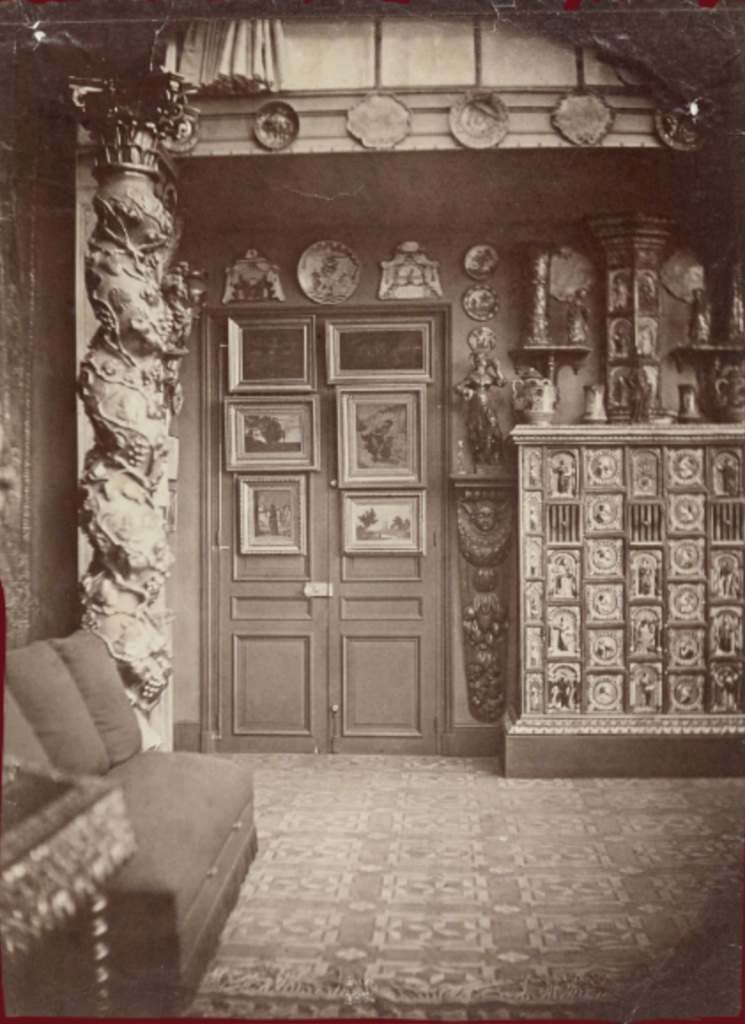
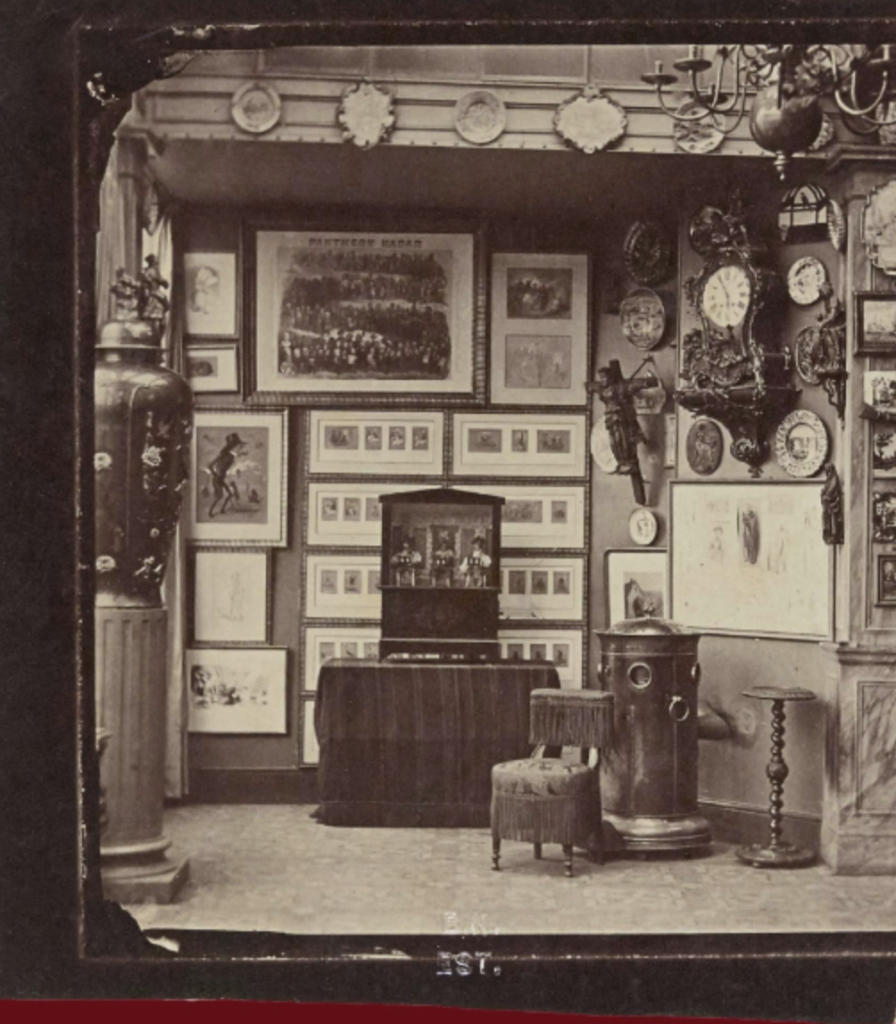
His atelier attracted the elite society of the boulevard, the intelligentsia of Paris, and the leading bohemian lights of the era, including artists, actors, and writers.
There was not just one, but several Nadars. Along with Félix, his brother Adrien and son Paul also abandoned their last name and adopted the pseudonym that Félix had come up with. And yet, there is just one Nadar, more precisely a brand, a collective singular that refers not only to a family, but also to a firm that employed a great many collaborators. In the 19th century, Nadar was a brand with a powerful cultural aura. (“The Nadars: A Photographic Legend” http://expositions.bnf.fr/les-nadar/en/the-art-of-the-portrait.html)
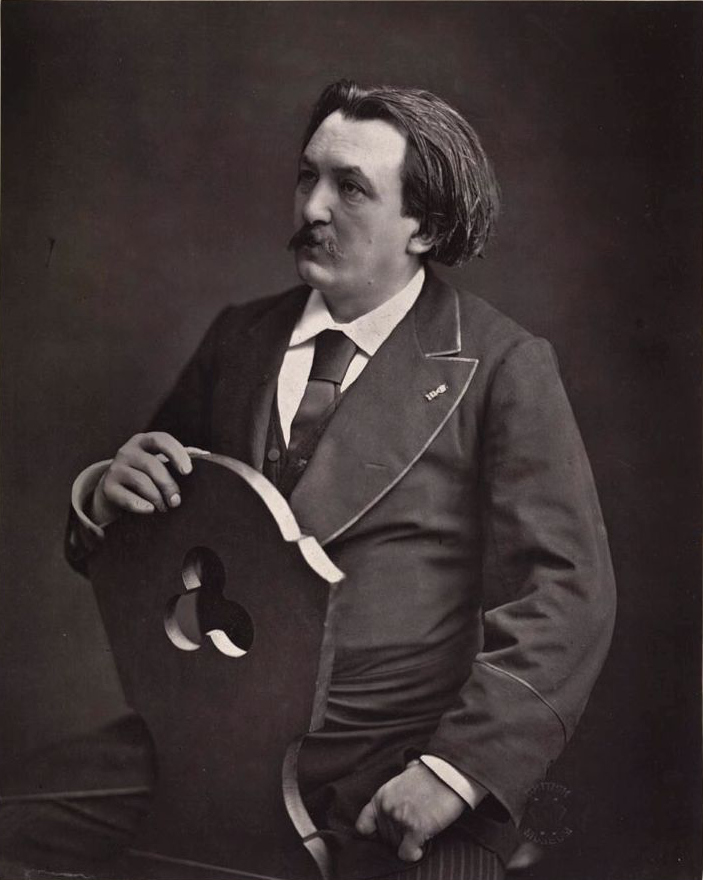
In contrast to his rivals, Nadar equated his work with art rather than industry or science, his portraits aspiring to aesthetic significance and commercial success. He added value to his photographic images by exploring the psychological dimension of his sitters, aiming to reveal their personalities, not just produce attractive photos. His subjects were directly and naturally posed, in contrast to his contemporaries’ stiff formality and prop use.
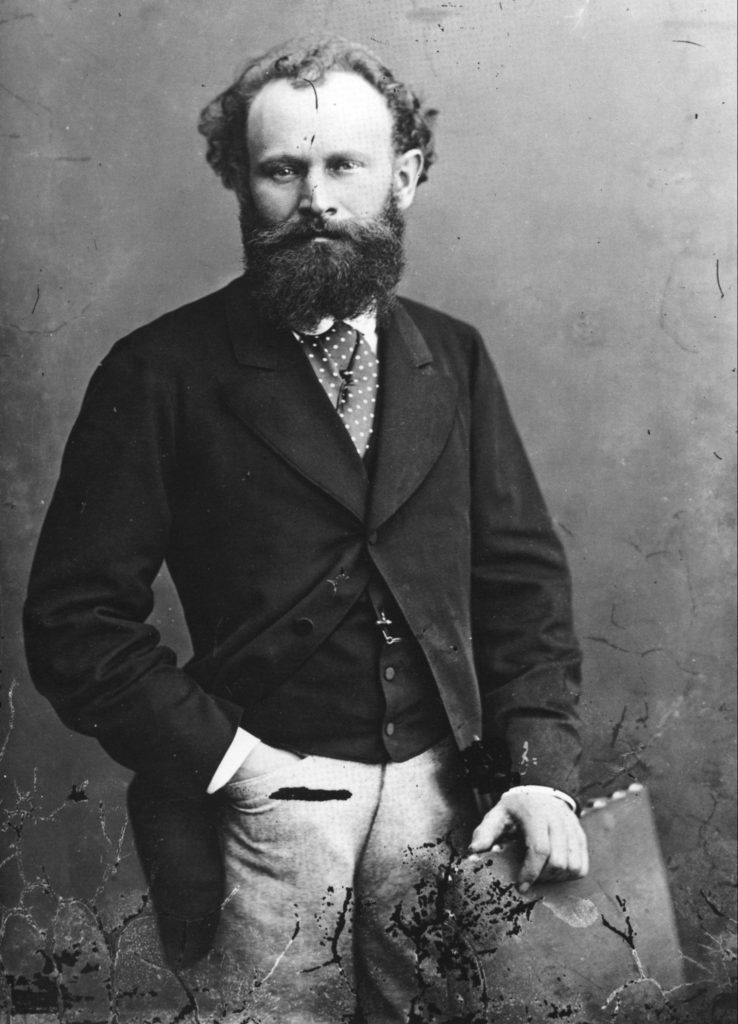
The space of trusting exchange Nadar developed with his clients enhanced the descriptive potential of his portraits. Max Kozloff writes in “Nadar and the Republic of the Mind” (Artforum 15 no. 1 (September 1976): 28-39): “With the latitude now permitted, or that welled up amiably in the ‘contract’ between photographer and sitter, facial mobility came into its own.”
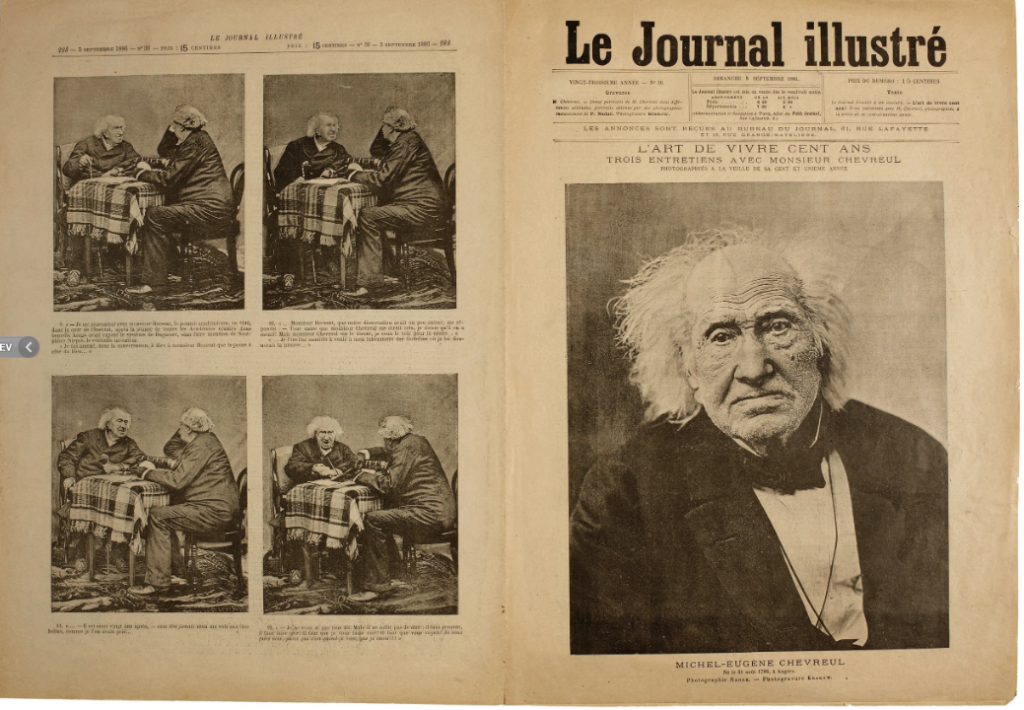
Kozloff continues,
For proof, one has only to look at the first published interview in the history of photography, in Le Journal Illustré, August 1886, for which Paul Nadar took innumerable shots of his father conversing with Chevreul, the famous chemist and color theoretician. Not only was this technically advanced, made possible through a fast shutter (1/133 of a second), but it epitomized the ongoing candor that suffuses Nadar’s portraits.
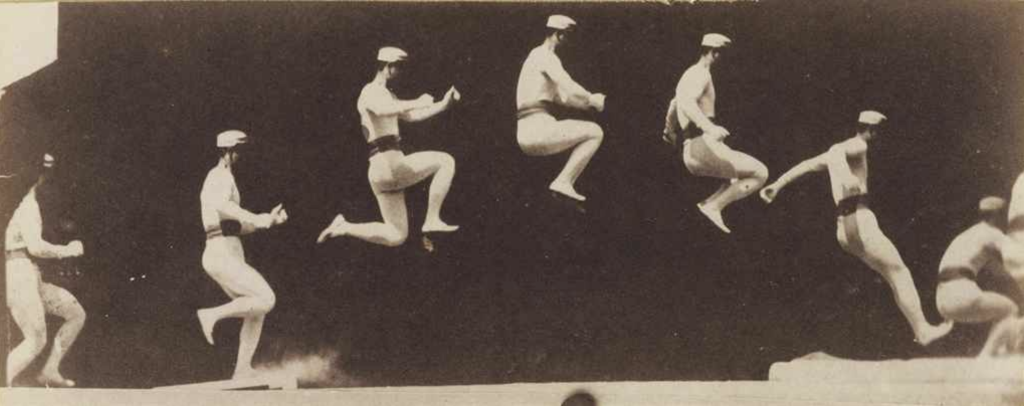
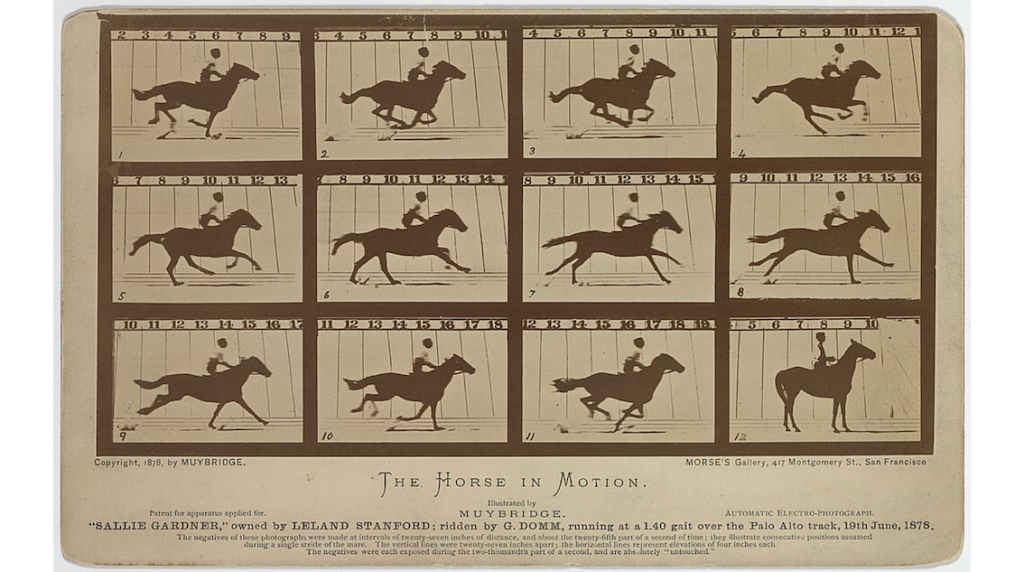
Perhaps even further, he might have wanted to demonstrate how to overcome the fragmentary aspect of the still photograph by multiplying stills through a short time span. In this he could be said to have hinted, in portraiture, at what Marey, whom he admired, and Muybridge, whose work he surely knew, were accomplishing in the representation of human and animal movement.
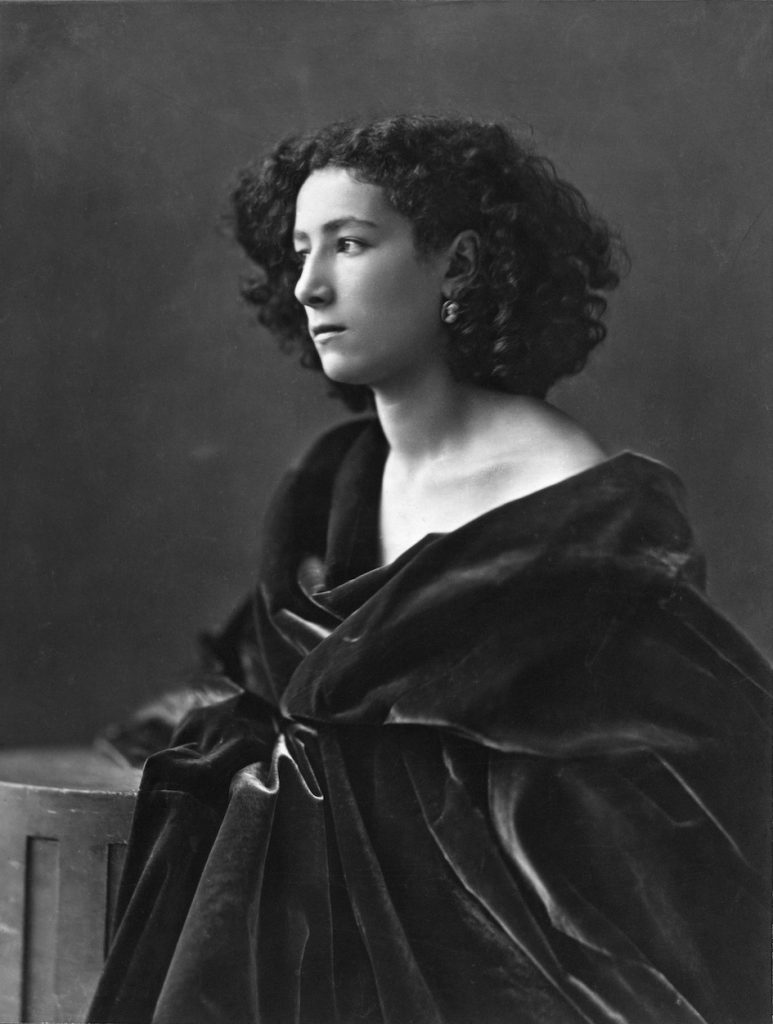
During the 19th century, photographers’ clientele could help them achieve recognition and fame. Nadar cultivated his reputation as a celebrity photographer, and his growing notoriety reciprocally gave prestige to those able to commission a portrait by him.
Jullian Lerner explains Nadar’s unique approach in Experimental Self-Portraits in Early French Photography (London: Routledge, 2021). Nadar’s portraiture “… was rarified and spiritual, the resemblance intimate and earnest, and the framing austere. Reducing the noise of backdrops, furnishings, and fashionable attire that cluttered the full-figure poses of rival studios, Nadar zoomed in on his sitters’ faces. And because his premium full-plate prints (25 × 19 cm) were “life-size, they staged an intense tête-à-tête between the sitter and the viewer.”
Nadar eschewed the montage format because it disrupted the intimacy he sought, his “quest for photographic purity and a truth of the face.” His austere approach to portraiture complimented his famous sitters’ intellectual, bohemian, and anti-materialist disposition. These friends were his preferred clientele early on, privy to discounted prices for prints while allowing him to keep the negatives for future dissemination. Lerner continues:
Thus Nadar accumulated a photographic “image bank” of Contemporary Figures that he could exploit in a number of ways. He sold portraits to publishers, for use as the basis of illustrations in journals and books (reproduced for print publication in wood engraving). After 1861, he also sold celebrity portraits to anonymous buyers off the street, in the commercially optimized form of cartes de visite. At first reluctant to embrace this small, cheap, mass-producible format invented by his rival Andre-Adolphe-Eugène Disdéri, Nadar eventually decided to cash in on the public’s mania for celebrity cartes, which all manner of citizens avidly collected and arranged in albums alongside portraits of relatives and friends.
Nadar, the businessman, astutely cultivated a niche market and carefully catered to it. He rejected Napoleon’s Republicanism to appeal to Bohemian independence and opposition. As such, he was an outlier. Others who aspired to succeed believed that achieving recognition required casting a wide net and adherence to academic criteria. For mainstream photographers, as Lerner explains, “pinning their hopes on a marginal avant-garde whose own status was far from secure would be imprudent.”
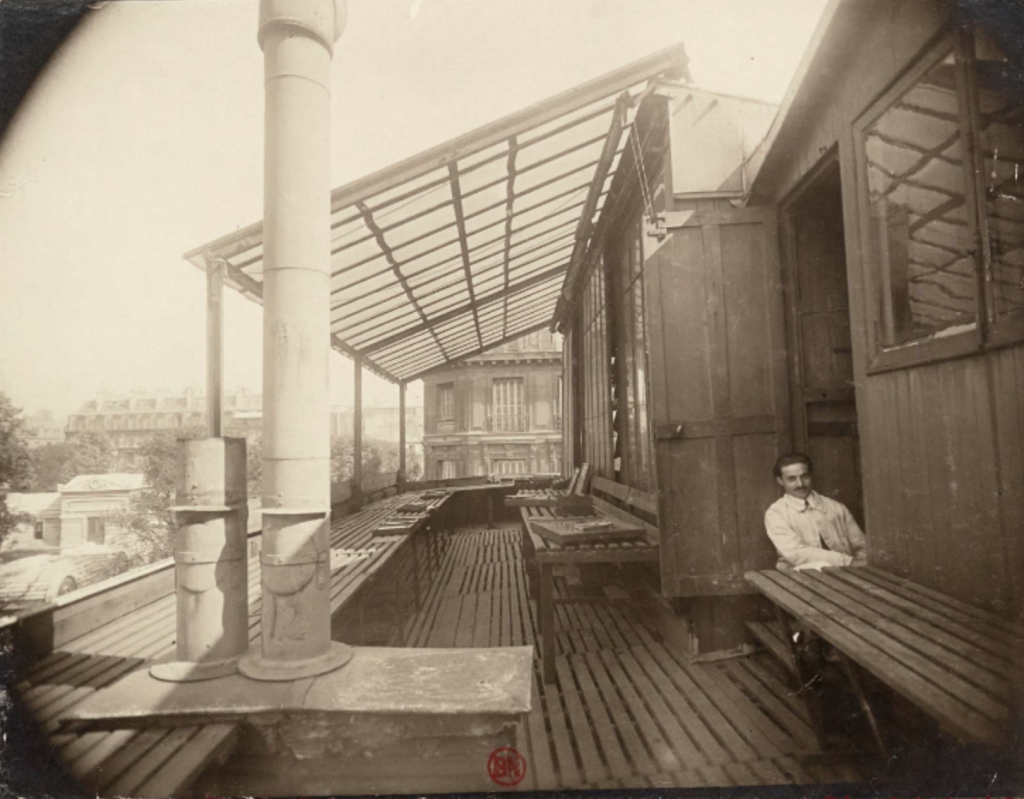
When the studio on Boulevard des Capucines declared bankruptcy due to over-expenditures, the Nadar firm moved to a more affordable site on Rue d’Anjou. They gave up studios that boasted a rooftop terrace, a ground floor with a garden, a glass-roofed atrium, and enormous windows on the upper floors. Still, the Rue d’Anjou studio had huge windows on the upper floors. Before the advent of artificial light and more sensitive processes, natural light was indispensable for taking and developing photographs. “…natural light was indispensable for taking and developing photographs… The photographers could create a range of variations and effects thanks to filtering blinds, and with reflectors and screens.”(http://expositions.bnf.fr/les-nadar/en/the-art-of-the-portrait.html#the-studios)
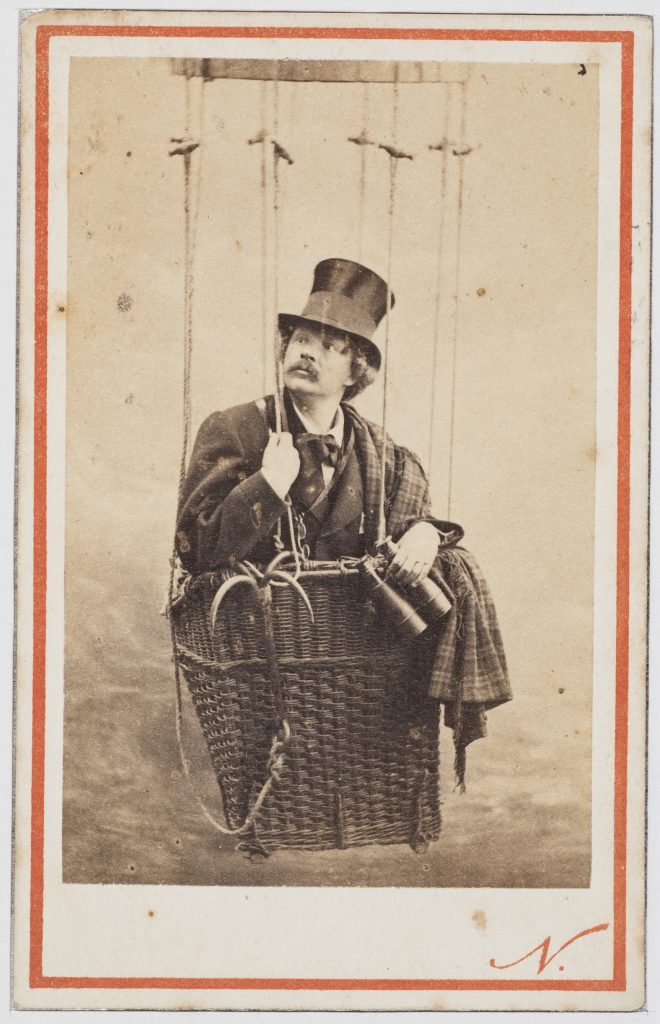
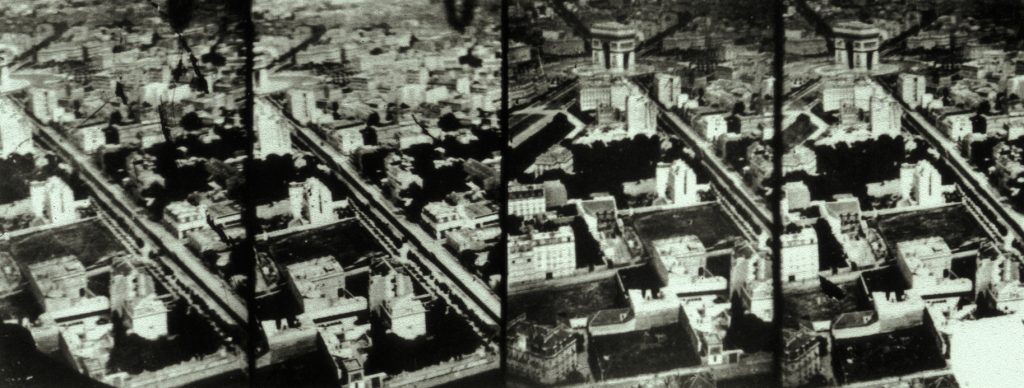
Nadar was a personality that thrived on adventure. His interests extended well beyond photography, as Philip McCouat writes in “Photography, Ballooning, Invention and the Impressionists.” (https://www.artinsociety.com/the-adventures-of-nadar-photography-ballooning-invention–the-Impressionists.html):
Photography, while absorbing, was by no means Nadar’s only interest. Along with several of his friends, including Jules Verne and Victor Hugo, he was fascinated by the idea of human flight. Accordingly, during the 1850s, Nadar enthusiastically began hot-air ballooning.
Ballooning offered an escape from the cares of the world. He described the sensation of ascending as a ”free, calm, levitating into the silent immensity of welcoming and beneficent space,” which presented “an admirable spectacle…. an immense carpet without borders… what purity of lines, what extraordinary clarity of sight… with the exquisite impression of a marvellous, ravishing cleanliness!”
For Nadar, the sublime views obtained from an aerial balloon floating above the city were a compelling “invitation to the lens.” They spurred his
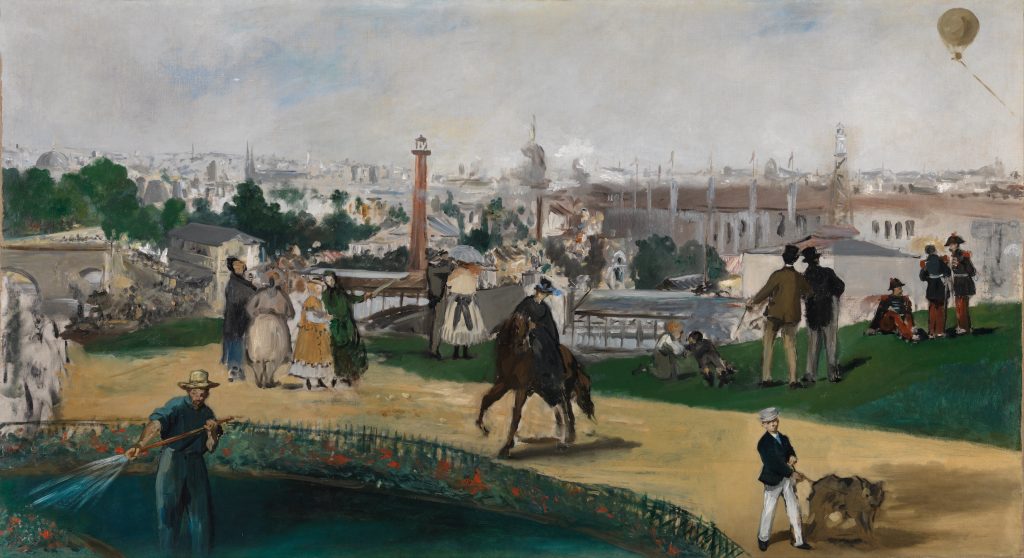
Manet’s View of the 1867 Exposition Universelle would not have been as complete a view of modern Paris without the inclusion of Nadar hovering over the city in an air balloon, as seen at the top right of the composition.
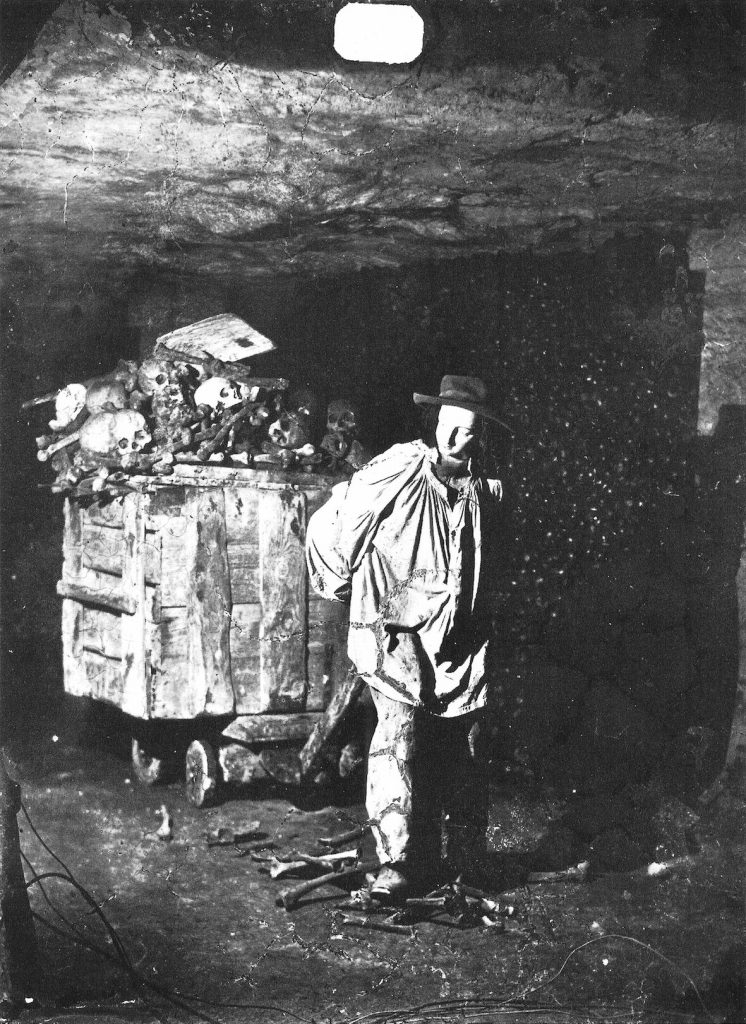
McCouat continues:
Not content with photographing from the air, Nadar had also begun on a novel project to photograph underground, using only electric light. This would pose some considerable challenges. Photography had always been associated with light, its very name means “a drawing of light,” and here was Nadar saying that he could take photographs without any natural light at all.
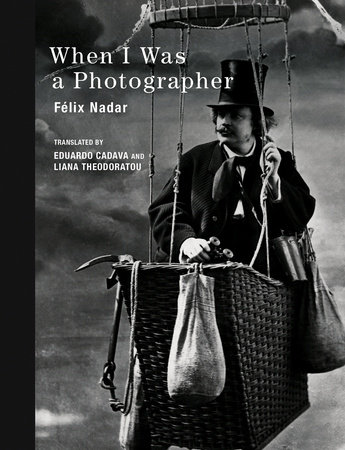
In 1900, towards the end of his life, Nadar published Quand j’étais photographe, translated into English and published by MIT Press in 2015. The book offers a collection of anecdotal vignettes, numerous portraits and character sketches, and meditations on his photographic history.
Nadar’s explorations into the bust-length portrait remained his primary source of livelihood. Along with the full-length carte-de-visite developed by Disdéri, these two modes of portrait photography dominated the field from around 1855 until 1870.
Their differences may seem minute, but they are significant. The commercial carte was inexpensive and readily available. The bust-length portrait, considered of greater aesthetic value, was the province of the elite. The carte’s attention to pose, clothing, accessories and setting reflected a sitter’s status, whereas faces and personalities could not be easily discerned. Nadar’s three-quarter view, on the other hand, with its focus on facial expression and attention to aesthetic conventions, could render more unique portrayals.
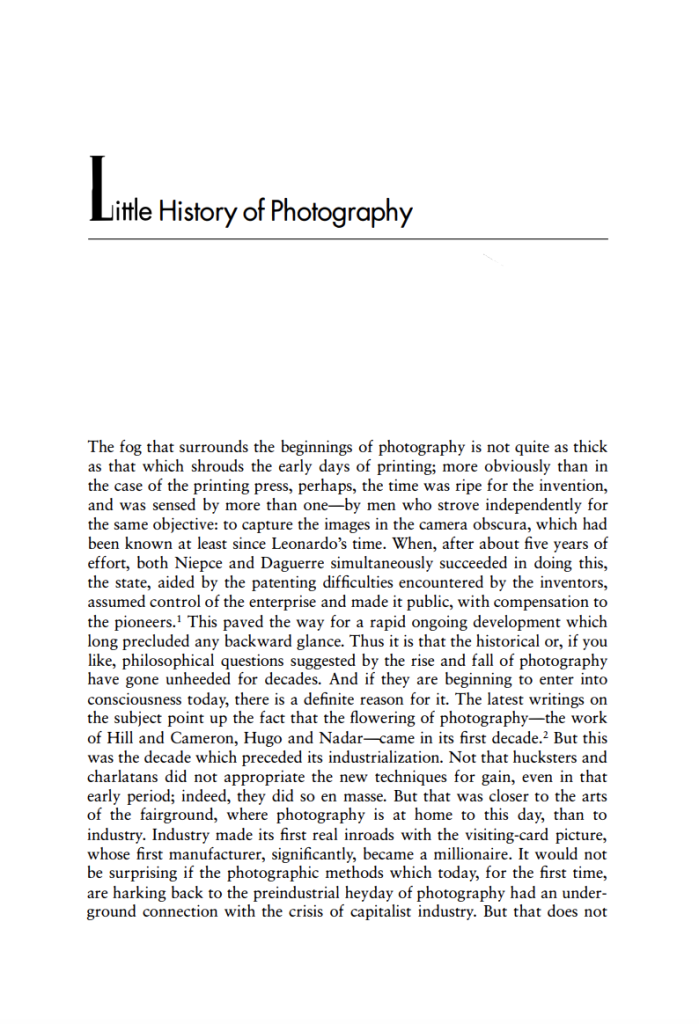
Walter Benjamin writes:
These images were taken in rooms where every customer came to the photographer as a technician of the newest school. The photographer, however, came to every customer as a member of a rising class and enclosed him in an aura which extended even to the folds of his coat or the turn of his bow tie. For that aura is not simply the product of a primitive camera. At that early stage, object and technique corresponded to each other as decisively as they diverged from one another in the immediately subsequent period of decline. Soon, improved optics commanded instruments which completely conquered darkness and distinguished appearances as sharply as a mirror.
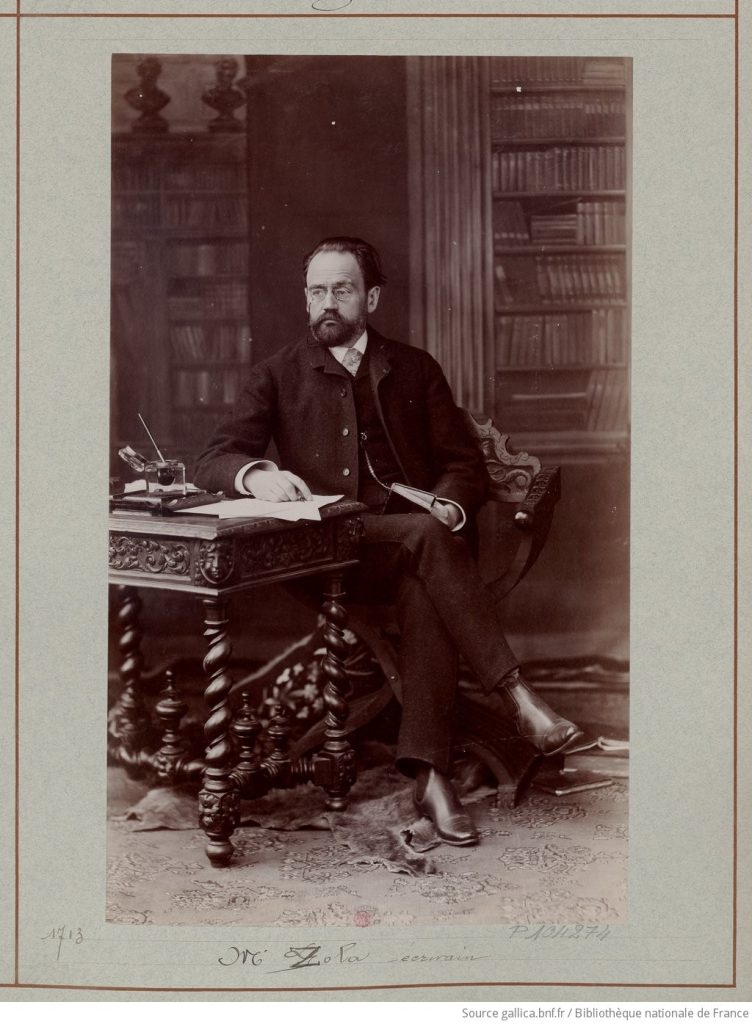
However, Benjamin overlooked the evolvement of portrait photographic experimentation in Paris.
The photographer Paul Cardon, known as Dornac, specialized in photographic portraits of famous men in their homes or at work. Active from the late 1880s, his images were published in Nos contemporains chez eux. His innovative process relied on the fact that dry plates could be prepared in advance and developed long after exposure, eliminating the need for a portable darkroom.
Elizabeth Emery, in “‘Dornac’s at Home’ Photographs, Relics of French History” (Proceedings of the Western Society for French History 36 (2008): 209–224), writes about Dornac’s ‘at home’ photographs and their implications for the fin-de-siècle cult of celebrity:
As the camera began to chronicle the private life of public figures and as editors published these images in the flourishing periodical industry, viewers became aware of the milieu surrounding famous figures. No longer mysterious and untouchable, grands hommes (“great men,” though well-known women were also occasionally included under this rubric) began to be treated like scientific specimens on display in their native “habitats.” Photography was thus partly responsible for facilitating a shift from interest in grands hommes as revered national heroes, worthy of public monuments, to more intimate and obsessive celebrity cults housed in private rooms, apartments, and museums.
…
Gaston Tissandier, renowned pioneer of hot air balloons, editor of the journal, the author of books about photography, and himself a figure in the Nos Contemporains series, paired the photographs with accompanying texts in which he qualified Dornac’s goals as eminently ‘scientific.’The influence of Dornac’s endeavour spilled over into the commercial studios of photographers such as Félix Nadar, Pierre Petit, and Étienne Carjat. They appropriated his ideas by creating staged settings that recreated domestic backgrounds. This is visible, for example, in Zola by Nadar, where one can see the canvas roll of the backdrop visible on the floor. The table is equally a prop, reappearing elsewhere in Nadar’s works, such as in the portrait of Edmond de Goncourt.
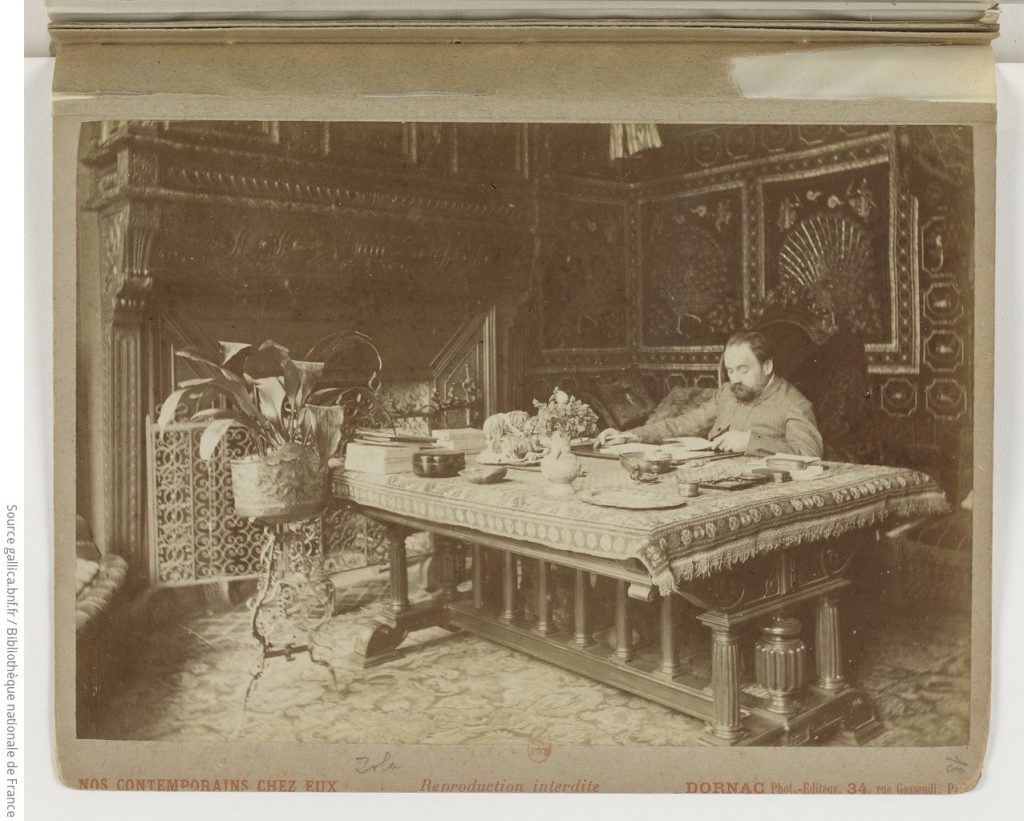
In contrast, the authenticity of Dornac’s photographs remained constant. He captured minute details that were, according to Tissandier, “witnesses of their thoughts and works…” He believed that Dornac’s use of photography, his emphasis on what was there as opposed to what was imagined, made “the most precious auxiliary of the exact sciences…”
Emery:
The early nineteenth-century ideal of a ‘monument in stone,’ an authorized image of the ‘great man’ erected in a public space to commemorate his cultural importance, thus gave way, as we have seen, to much more fragmented and complex images, often disseminated by photographs, by which the public sought to understand famous figures more fully… Dornac’s ‘at home’ photographs went a step further, creating the illusion of even greater intimacy by providing access to the environment in which grands hommes lived and worked. By shifting emphasis from physical appearance to milieu, his series allowed viewers to vest the objects surrounding his famous subjects with near-magical powers: as ‘relics,’ they seemed to retain some of the spirit of those who had touched them.
Such evolutionary advances in photography as a medium of visual communication and expression testify to its permeating influence in society within short decades of its birth. As Malcolm Daniel has asserted, “The medium’s most profound and lasting expressions, however, were no longer the work of its leading professionals, but rather of those who consciously set themselves apart from the accepted rules of commercial practice and took photography into new arenas of technique, subject, and expression.”
5.5
| Julia Margaret Cameron: Art Photography and Pictorialism
The British artist Julia Margaret Cameron was among the early photographers who did take the medium into what Daniel describes as “new arenas of technique, subject, and expression.”Perhaps one of the most painterly portraitist photographers of the nineteenth century, Cameron’s pursuit of the artistic potential of photography challenged the medium’s status as the most accurate replicator of reality. This dimension of photographic portraiture most closely reflected the concerns of a younger generation of artists more interested in evoking truthful images through atmosphere and ambiguity. In her cultivation of ambiguity and manipulation of the photographic process, she was an important pioneer of Pictorialism and the idea of photography as a contemporary art form.

Cameron may have entered the field as an amateur female photographer, but she approached her work professionally. She deliberately marketed and exhibited her photographs but made clear that her interests were not in pursuing commercial portrait photography. Cameron considered herself an artist and described her aspirations “to ennoble photography and to secure it for the character and uses of high art” to her mentor, the scientist Sir John Herschel.
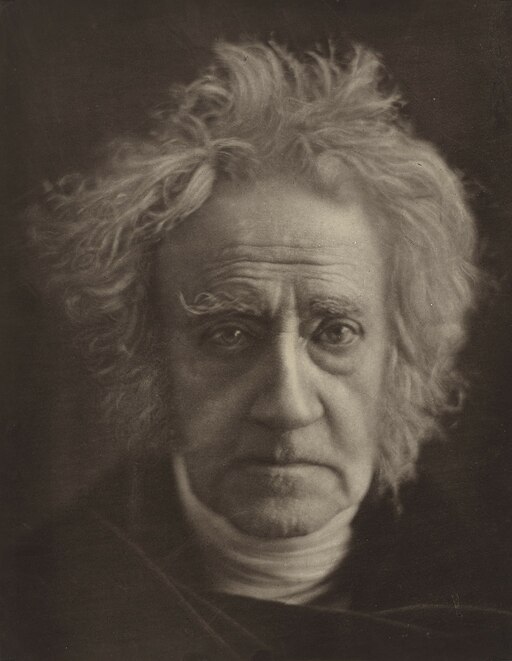
Cameron’s stylistic manipulations are in evidence in this portrait of Herschel, a scientist and experimental photographer. The MOMA entry for the work describes it as follows:
No commercial portrait photographer of the period would have portrayed Herschel as Cameron did here, devoid of classical columns, weighty tomes, scientific attributes, and academic poses—the standard vehicles for conveying the high stature and classical learning that one’s sitter possessed (or pretended to possess)… she had him wash and tousle his hair to catch the light, draped him in black, brought her camera close to his face, and photographed him emerging from the darkness like a vision of an Old Testament prophet.
Cameron employed wet collodion on glass negatives and albumen prints to apply the aesthetic principles of painting to portrait photographs. She was among the first to combine close cropping with softly focused imagery, moving her work beyond objective representation. Determined to capture the essence and character of her subjects, Cameron engaged the ethereal and dreamlike impressions created by the combination of diffused focus, manipulated lighting, veiling shadows, and expressive posture.
Julia Margaret Cameron was 48 years old in 1863 when she received her first camera as a birthday present from her daughter and son-in-law. The gift, meant to be a fun distraction, inspired the career of one of the finest Victorian-era portrait photographers.
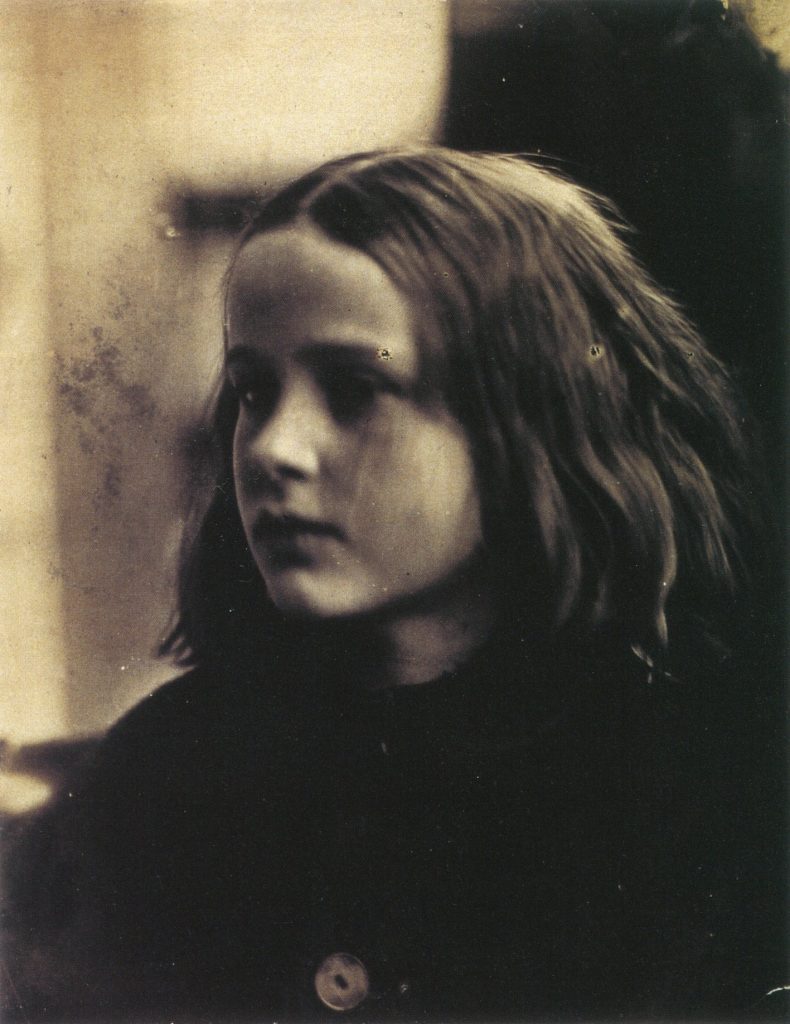
Liz Jobey describes the portrait of Annie Philpot, which Cameron called her “first success,” in First Light, her review of the exhibition Julia Margaret Cameron: 19th-Century Photographer of Genius held at the National Portrait Gallery in London in 2003.
(https://www.theguardian.com/artanddesign/2003/jan/18/photography.artsfeatures):
At 1pm on January 29, 1864, a little girl with cherubic features and scraggy, shoulder-length hair was buttoned into her winter coat, waiting patiently for her photograph to be taken. In front of her, a short, stocky, middle-aged woman fitted another glass plate into the back of her huge camera and begged the child to keep still. She was probably counting, too; it could take up to five minutes for the image to be fully exposed. If the girl was bored, she didn’t show it. Her face, turned in half-profile to catch the light, was composed but alive, its curves heightened by the contrast between shadow and light. It was a happy result – we know, because the photographer wrote to the girl’s father later that day: “My first perfect success in the complete Photograph owing greatly to the docility & sweetness of my best and fairest little sitter. This Photograph was taken by me at 1pm Friday Jan 29th Printed Toned – fixed and framed all by me & given as it now is by 8pm this same day Jan 29th 1864. Julia Margaret Cameron.”
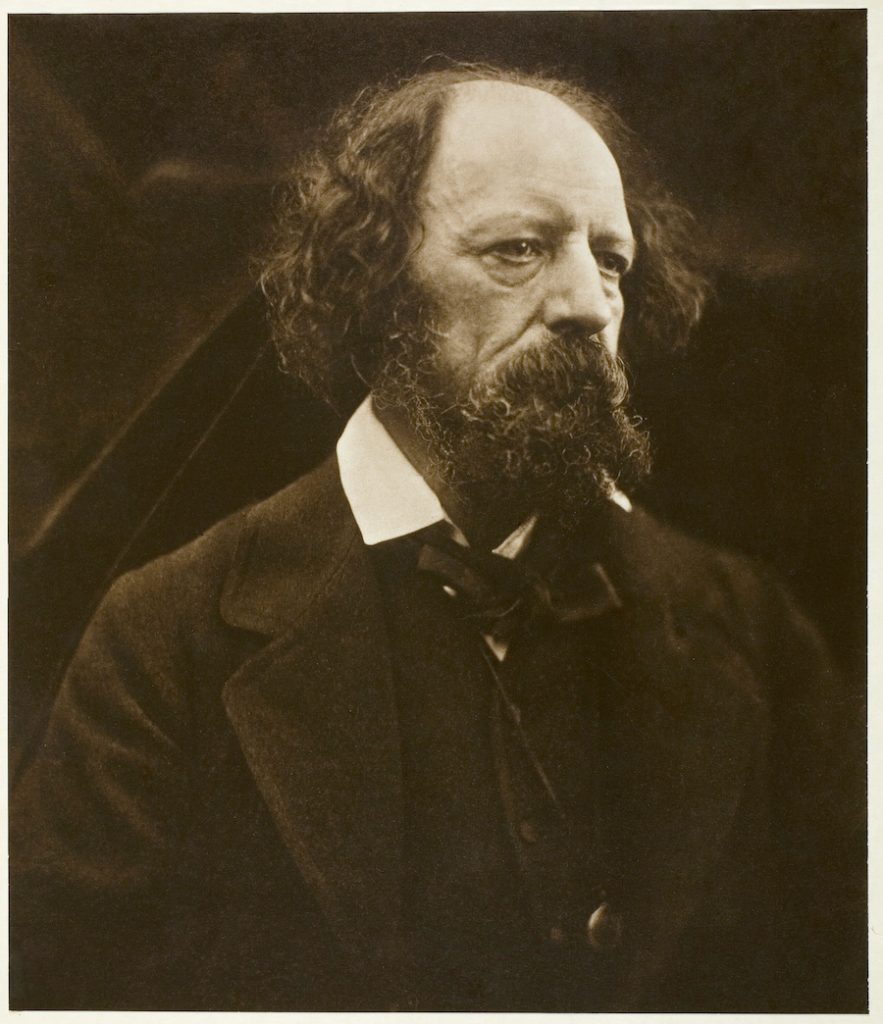
Cameron, of British descent but born in Calcutta, was a well-read, cultured woman with connections to literary, artistic, and scientific figures.Like Nadar, Cameron set out to capture the elite world of celebrities she frequented. She did so because she had ease of access to her subjects and strategically, knowing that portraits of Britain’s stars were more likely to attract sales and future clients. Cameron’s portraits, included the celebrated poet Alfred Lord Tennyson (a friend and neighbour at Freshwater),
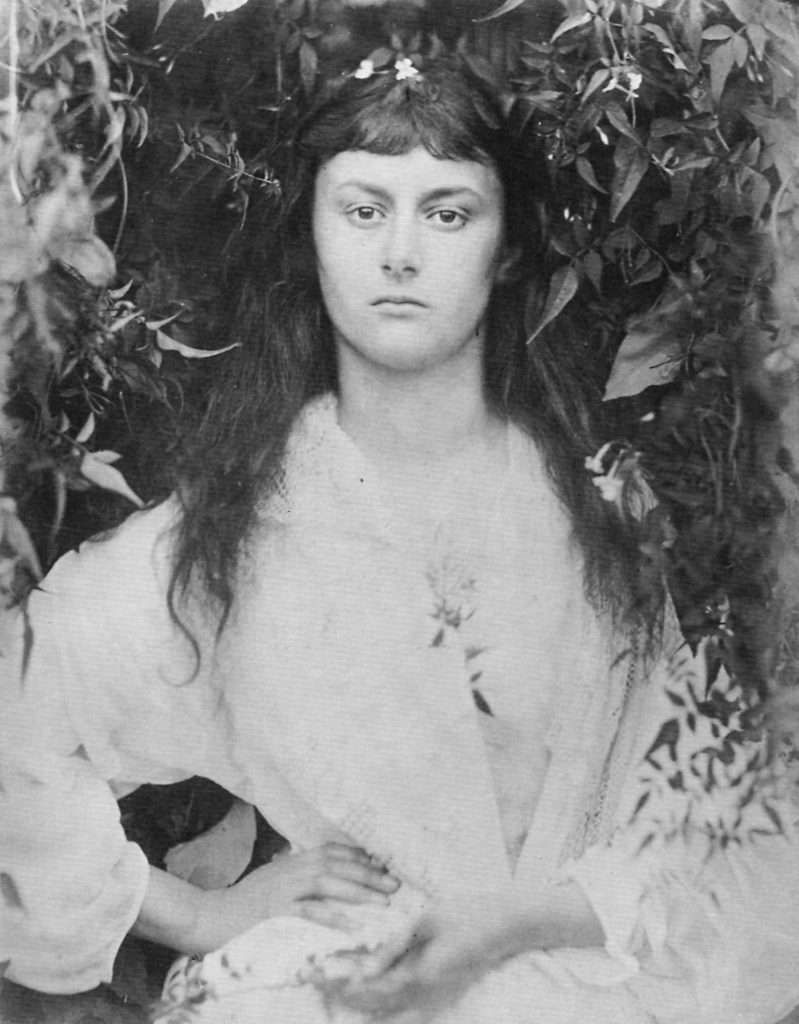
and Alice Liddell (who was also a photographic subject for Lewis Carroll as a child and inspired the 1865 children’s classic novel Alice’s Adventures in Wonderland),
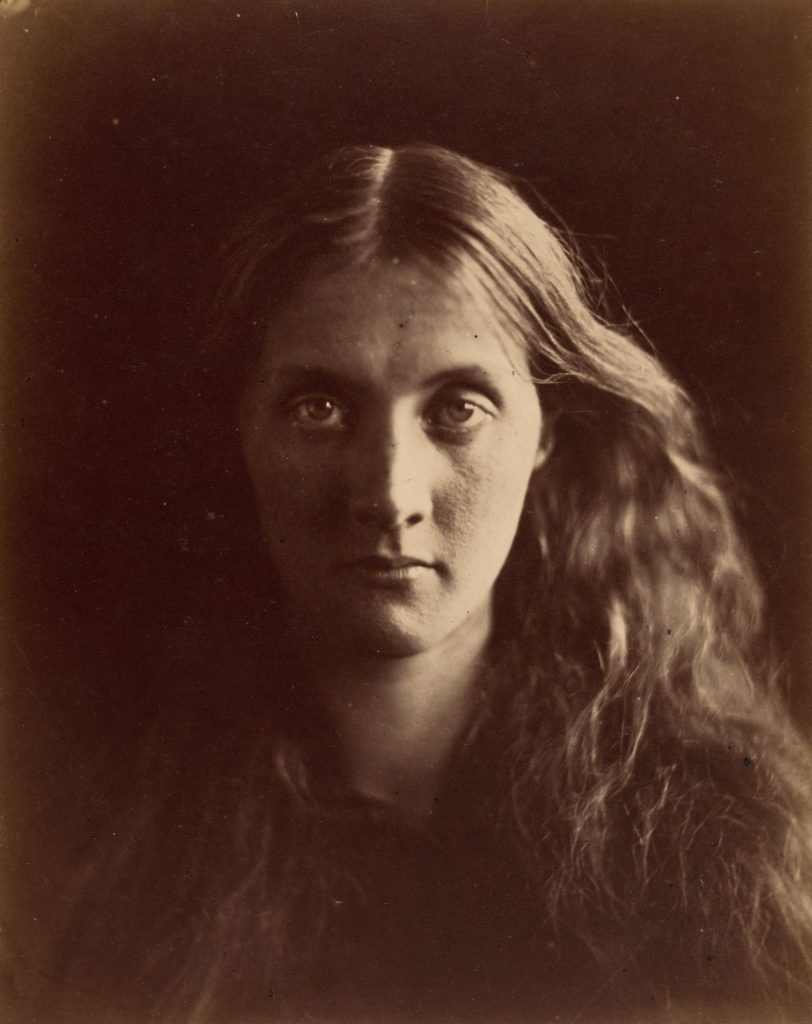
as well as her niece Julia Stephen, the mother of the author Virginia Woolf.
Cameron defied photography’s early conventions, “using dramatic lighting and forgoing sharp focus in favour of conscientiously artistic effects that appealed to viewers familiar with Rembrandt’s chiaroscuro and the traditions of Romanticism.” The photographic press severely criticized her for her bold disregard for sharp detail and seamless printing that ensured the “correct” replication of reality, to which she replied, “What is focus and who has the right to say what focus is the legitimate focus?” (Nineteenth Century Photography, https://arthistoryteachingresources.org/lessons/nineteenth-century-photography/)
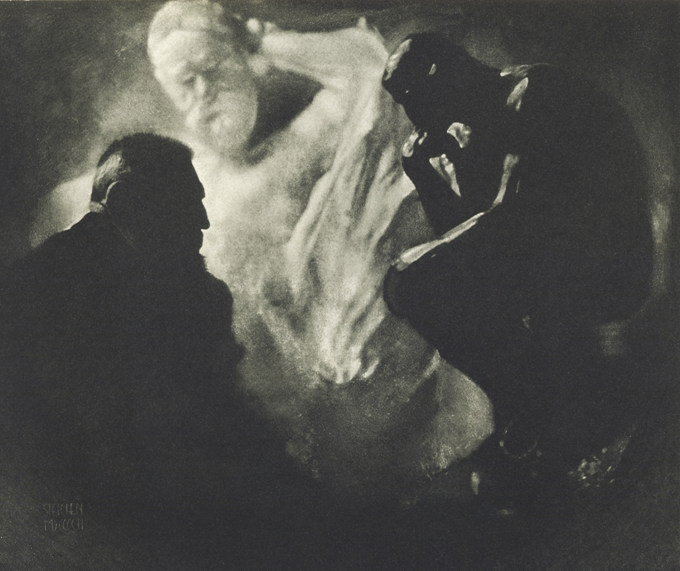
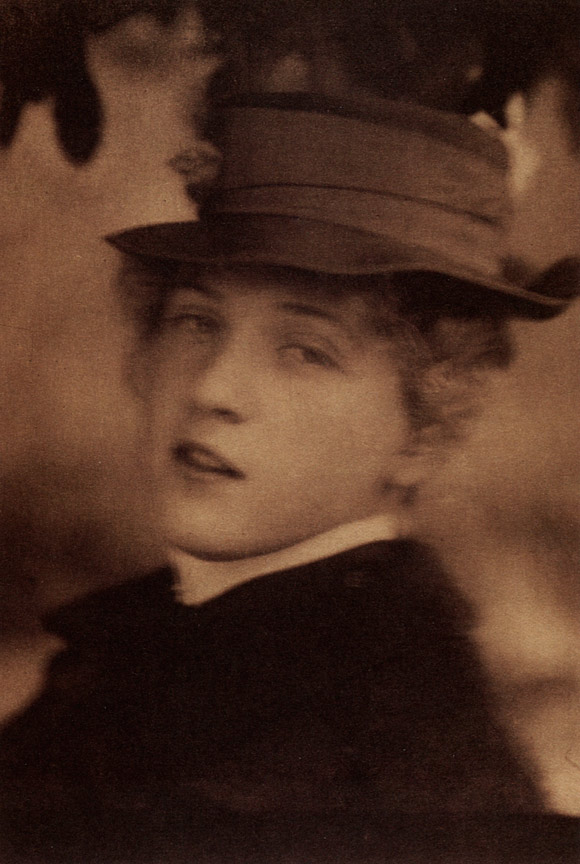
Her approach and aesthetic sensibilities would influence the future of the international Pictorialist movement, which insisted on personal expression and the recognition of the medium as fine art and was popularized by slightly later practitioners such as Edward Steichen and Alfred Stieglitz.
As Mina Markovic, in an introductory text on the artist for the National Gallery of Canada (https://www.gallery.ca/photo-blog/focus-on-the-collection-julia-margaret-cameron-1815-1879), concludes: “Following her death in 1879, Cameron’s influence on early art photography persisted…. Cameron is one of the few 19th-century women photographers consistently recognized for her contributions to the photo-historical canon.”
5.6
| Modern Impressionist Portrait Paintings and The Impact of Photographic Techniques
The prevalence of portrait photography during the latter 19th century influenced the practice and formal qualities of painted portraiture. Photography was now considered the gold standard in optical realism, which freed painters from the burden of realistic replication and inspired new compositional strategies and experimental pictorial techniques. In addition, the use of photographs as references was a labour-saving practice. It reduced the time and tedium of constant studio sittings and provided visual information no longer available to the artist after a studio visit.
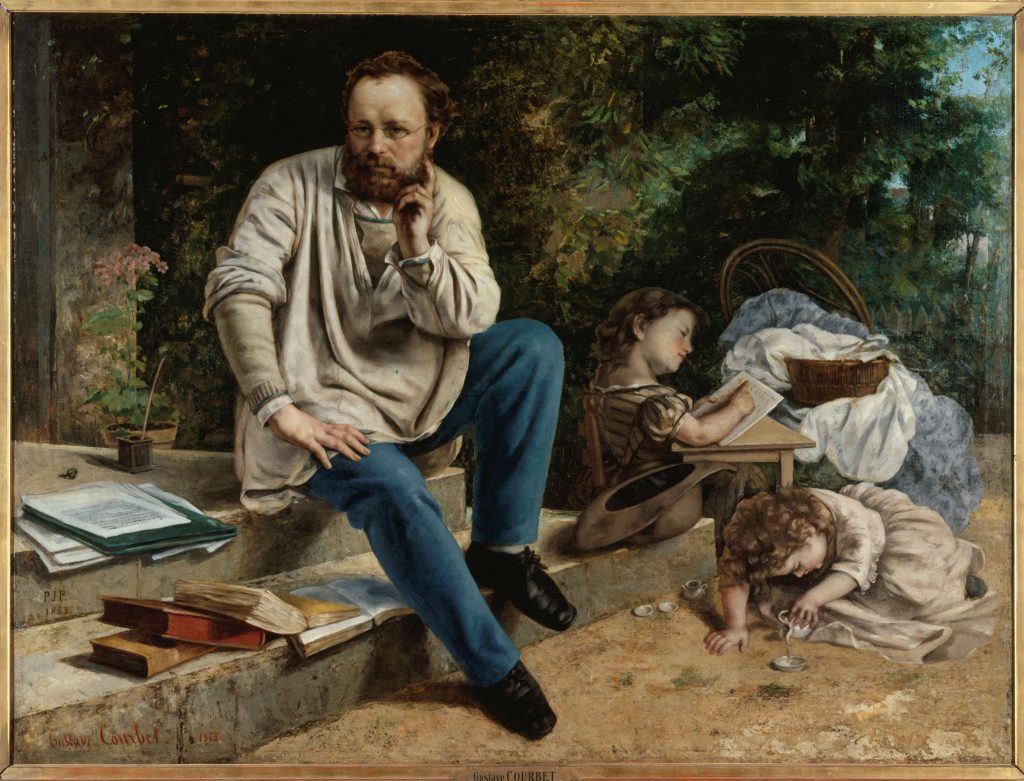
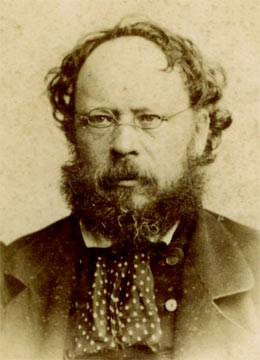
Courbet’s Proudhon and His Children, for example, painted posthumously from a photograph, does not lack in likeness or characterization for its source; rather it is enhanced by details captured as a visual record of a past moment in time
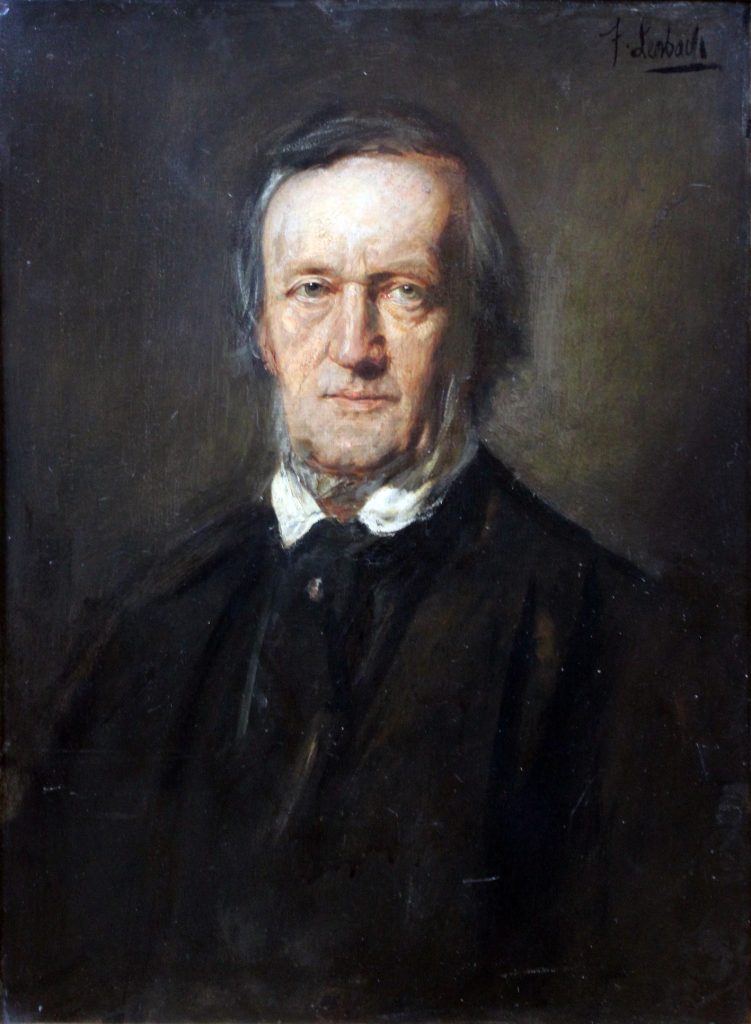
The German artist Franz von Lenbach advocated for the use of photographs as a basis for portraiture and was among the earliest painters to do so. His first portrait commissions date after 1881, when he was awarded a third-class medal for one of his portraits at the Grande Exposition in Paris.

Lenbach utilized a method invented by the Belgian photochemist and professional photographer Désiré van Monckhoven that projected a photographic image onto a canvas as an under-sketch, a technique called photo-sciagraphy. In 1863 van Monckhoven registered a patent for an optical apparatus that enlarged imagery by projection, for which he received a bronze medal at the Exposition Universelle of 1867. Soon after, he began manufacturing a device that could be built into a darkroom wall.
Lenbach’s process involved taking several photographs of a sitter in different poses, which he then enlarged on a canvas, outlined in paint, and added tone and colour. By the second time a sitter arrived, their portrait was nearly complete.
Carola Muysers explains Lenbach’s procedure in “Physiology and Photography: The Evolution of Franz von Lenbach’s Portraiture” (Nineteenth-Century Art Worldwide 1, no. 2 (Autumn 2002), http://www.19thc-artworldwide.org/autumn02/256-physiology-and-photography-the-evolution-of-franz-von-lenbachs-portraiture):
By the early 1880s the portraitist regularly hired professional photographers such as Friedrich Wendling, Adolf Baumann, and Karl Hahn to photograph his sitters, an effort made easier by the dry plates that had recently come on the market, and by the box camera.
Lenbach himself described his new method: “Once I have drawn the figure from life (and I always do that first) and I have had the movement photographed, it becomes a matter of fleshing it out with the help of photography and the imagination.” What distinguished Lenbach’s method was not the production of portraits with the aid of sketches and photographs but his use of photographs of movement and his decision to “flesh out” these photographs rather than slavishly copy them.
The following example illustrates Lenbach’s standard procedure. About 1895 the artist was commissioned to paint a portrait of the Egyptologist Georg Ebers. Ebers came to Lenbach’s studio in the company of his son Hermann, who left an account of what occurred there. The artist began by replacing Ebers’s uninspiring coat with a dark, fur-trimmed cape and the slouch hat of a scholar. Under the pretext of getting to “know the model by heart,” he first engaged the sitter in conversation, in the course of which Hermann heard clicking sounds behind some black curtains. It turned out that Karl Hahn was snapping photographs of the subject whenever Lenbach gave him a discreet hand signal.
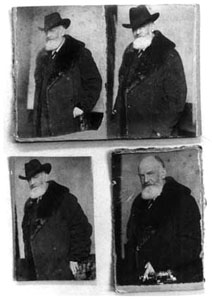
Four of the twenty photographs Hahn took during that session survive. All show Ebers before a white background and the differences between his poses are slight, yet the psychological effects are astonishingly varied. In one shot, Ebers tilts his head forward menacingly, his eyes hidden by the brim of the hat. A second shows him standing straight and looking up to the left with a fixed, hostile gaze. In the third, he looks directly at the viewer, and a slight twist of the head and body lends a sense of energetic movement to the whole. The fourth photograph captures a glowering Ebers holding the hat in his hand.
The Ebers series shows that Lenbach had two major concerns. One was that the sitter not be conscious of being photographed. The other was that the sitter respond naturally, rather than fall into an stereotypical yet uncharacteristic pose.
How did Lenbach “flesh out” his portraits? In other words, how did he move from the photographs of movement to the finished portrait? The artist would paste a series of snapshots on a piece of cardboard. (At first he used single shots, later contact prints.) Seeing these movements in sequence gave him a sense of the range of the sitter’s expressions and helped Lenbach select the most characteristic one for the portrait. Once the best parts of several photographs had been selected, the artist copied them onto his canvas. Beginning with such traditional aids as square grids, Lenbach proceeded to tracings and finally to photopeinture. In this last method he would enlarge and print a negative on a specially prepared canvas, placing washes on the barely visible positive that was ultimately covered with lights and shades. The painting was never an exact copy of a single photograph, however, as the artist often incorporated elements from several photographs and drawings.
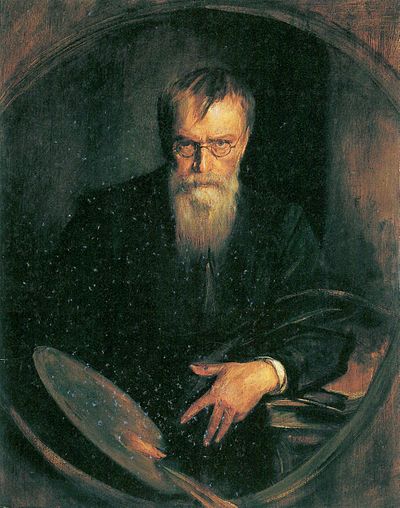
Lenbach used this technique to paint his self-image throughout his career. In this last one, executed a year before his death, he depicts himself standing face forward as he leans onto a console to his left. His direct gaze is penetrating, entirely focused on the viewer.
5.7
| Edgar Degas and the Influence of Photography
Impressionist artists painted portraits at a time when traditional portraiture, initially exclusive to the wealthy and powerful, had expanded to include the bourgeoisie. The democratization of the portrait, and the ensuing barrage of photographic images, spurred painters to innovate and reinvest portraiture with new value.
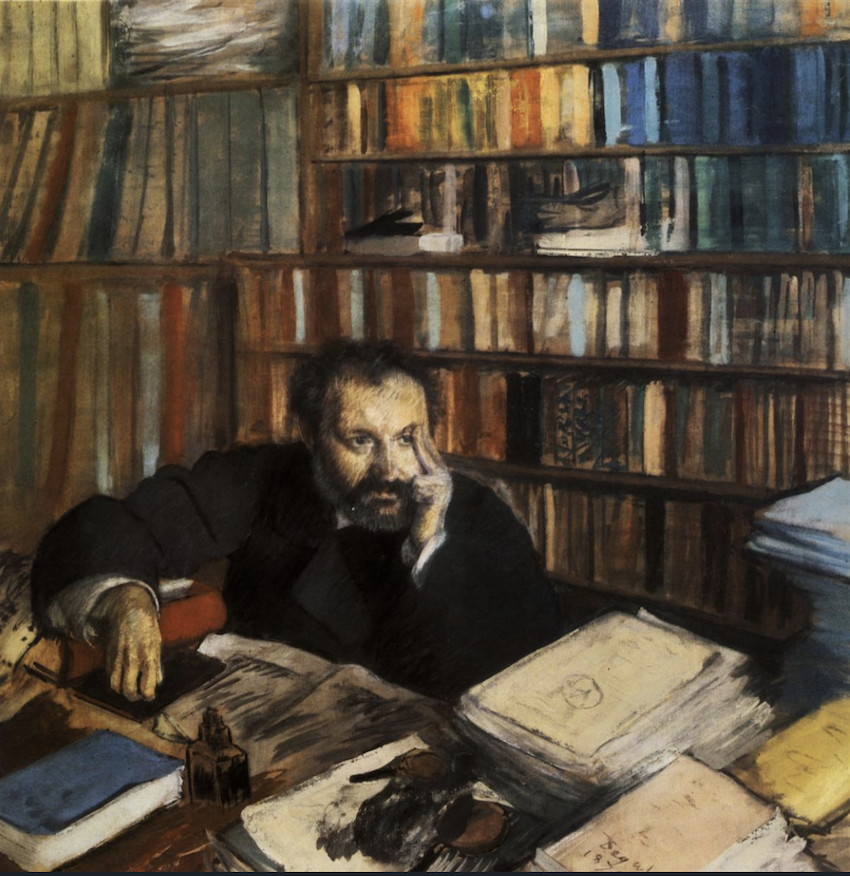
As Linda Nochlin reminds us in Making It Modern: Essays on the Art of the Now (New York: Thames and Hudson, 2022),
In a way, photography forced a certain innovativeness on ambitious artists. Today we cannot easily envision a world without the mass production and consumption of images – specifically, images of ourselves, our families, and our friends in the form of the snapshot, the wedding picture, or the class photograph – any more than we can envision a world without the mass production of clothing or other consumer products. The easy availability of images is so much a part of our experience that we cannot even imagine a situation in which a portrait might be a once-in-lifetime experience rather than an ongoing, multiple record of personal appearance and situation. The Impressionists lived in and reacted to a world in which the richness of individual and communal memory itself was being replaced by a plethora of cheap visual imagery.
Unlike photographers, Impressionist painters rarely took on commissions for portraits. Rather, they painted self-portraits, single and group portraits of friends and family, and pictures of colleagues and patrons. These portraits paid attention to the fragmented or absent context without losing sight of the individuality of the sitter. Contrary to Disdéri’s advice to photographers to select a pose that somehow represented the sitter’s typical attitude and expression, Impressionist portraits preferred postures and gestures that conveyed a spontaneous moment in time.
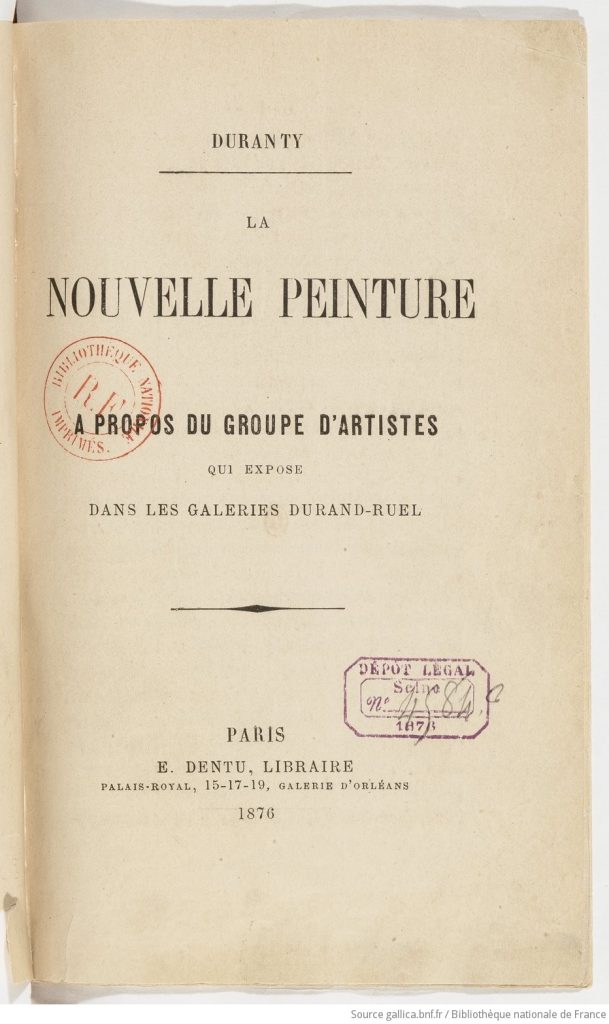
Duranty’s La Nouvelle peinture (The New Painting) of 1876, written on the occasion of the second Impressionist exhibition, echoed Degas’s outlook. He called for the study of “the relationship of a man to his home, or the particular influence of his profession on him as reflected in the gestures he makes” and “the scrutiny of the aspects of the environment in which he evolves and develops.”
Farewell to the human body treated like a vase with a decorative, swinging curve; farewell to the uniform monotony of the frame working … what we need is the particular note of the modern individual, in his clothing, in the midst of his social habits, at home or in the street …. By means of a back, we want a temperament, an age, a social condition to be revealed; through a pair of hands, we should be able to express a magistrate or a tradesman; by a gesture, a whole series of feelings.
Duranty argued that reality was perceived in flux and from varying perspectives. Unlike a camera, set up to capture a fixed view, a person’s view of a subject could alternate, it is “… sometimes very high, sometimes very low, missing the ceiling, getting at objects from their undersides, unexpectedly cutting off the furniture … He is not always seen as a whole: sometimes he appears cut off at mid-leg, half-length, or longitudinally. At other times, the eye takes him in from close-up, at full height, and throws all the rest of a crowd in the street or groups gathered in a public place back into the small scale of the distance.”
Duranty attempted to construct a vocabulary of “modern observation” based on analyzing physical, social, and racial characteristics. Degas himself wrote in his notebook: “Make of expressive heads (academic style) a study of modern feeling-it is Lavater, but a more relativistic Lavater so to speak, with symbols of today rather than the past.”
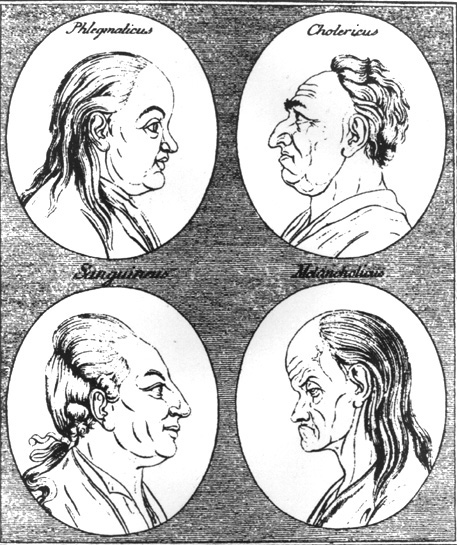
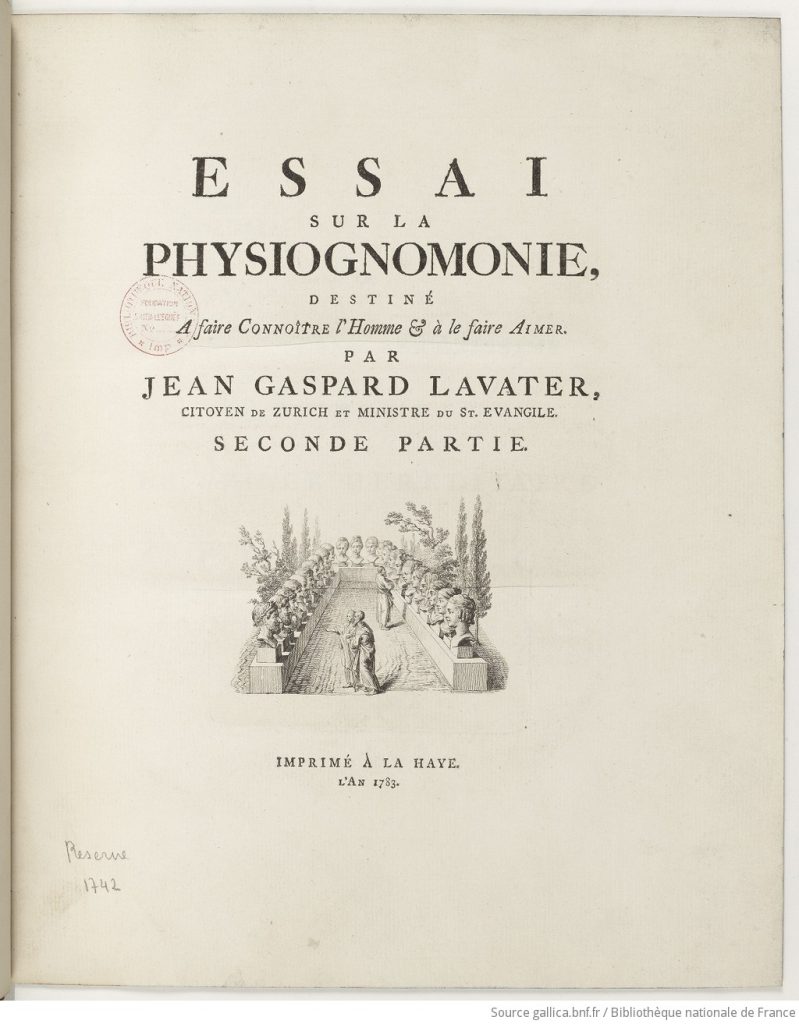
Johann Kaspar Lavater was a Swiss poet, writer, philosopher, physiognomist and theologian well-known in England, Germany, and France for his so-called scientific book, Fragmente zur Beförderung der Menschenkenntnis und Menschenliebe, which was originally published between 1775 and 1778. He believed that physiognomy related to specific character traits in people. He illustrated this theory through a series of profile portraits to demonstrate how moral character could be discerned through an analysis of “lines of countenance.”
Both Duranty and Degas had devised a response to theories of expression and character, including Lavater’s analysis of human countenance and how it expressed emotion. Degas’s musings on physiognomy explain the importance of his portraits of the person’s gestures, physiognomy, and individualized emotions.
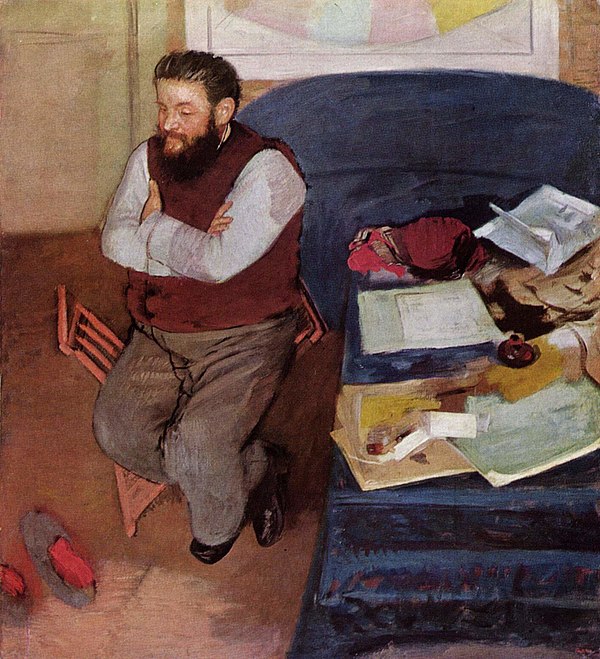
Degas rejected Lavater’s formulaic attempt at the assessment of moral character. His approach was more nuanced, a quest for truth in portraiture that rose above typological representation.
He looked for subtle but incisive deviances within physiognomic and social typologies, insisting that modern individualism was located within these aberrations. The result is exemplified in two portraits of novelists and critics; Edmond Duranty, a firm supporter of Realism and Impressionism in France, and Diego Martelli, one of the earliest advocates of Impressionism in Italy.
Degas’s portraits of Martelli and Duranty each portray a modern intellectual in situ, conveying their uniqueness through the keen manipulation of stylistic devices and attention to particularized elements within their overall settings.
The use of arbitrary vantage points and cropping images, was a direct influence of photography, allowing Degas to freeze frame a particularly interesting viewpoint which would otherwise be passed over. In Diego Martelli, the figure is portrayed from an elevated perspective. This vantage point, unusual in real life but appearing completely natural here, was calculated to emphasize Martelli’s squat stature and rounded contours. The pose and perspective, evoke a sense of comfortable informality. He is a typical “endomorph,” as defined by William Sheldon, correlating physiological and psychological characteristics in Atlas of Men: A Guide for Somatotyping the Adult Male at All Ages (1954). Sheldon, an American psychologist and physician, believed that the psychological makeup of humans had biological foundations. He classified people according to body types or somatotypes. The endomorph, he maintained, had a “viscerotonic” personality – composed, amiable and comfortable – which directly correlated with a rounded and soft body.
How Degas portrays Martelli suggests the man’s contemplative, unconfrontational nature. His arms are folded across his chest and supported by his ample belly, and his plump legs, crossed and tucked under his body, strain against the cloth of his trousers. His weight is emphasized by the artist’s over-view and the spindly appearance of the folding stool he sits on. Papers and paraphernalia lie haphazardly on the table in the foreground while a pair of red-lined carpet slippers flop by his feet. The sofa’s rounded back echoes the rounded contour of the image on the wall and the outlines of Martelli’s plump body.
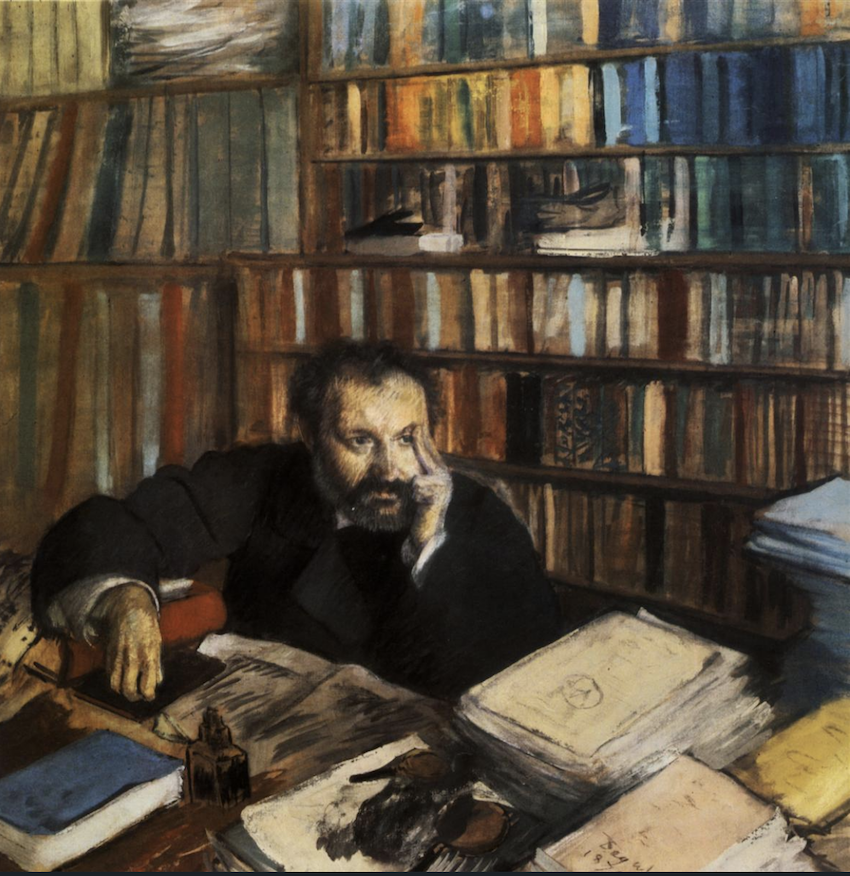
Degas’s portrait of Edmond Duranty is almost entirely comprised of books. They are laid out horizontally on crowded bookshelves and piled up in diagonals on the desk in the foreground. Duranty himself sits pensively in the centre of it all, his hand pressed against his eyelid in a gesture of pure concentration. The portrait is neither painstakingly descriptive nor idealizing, but it captures the author authentically in his own environment at a particular moment in time.
Duranty is observed from an elevated vantage point, which furthers the sense of his fusion with his surroundings. There is a dynamic quality to the delineation of the pictorial elements, which is echoed in the dry, elegant energy of the pastel and gouache mediums.
While both portraits date from the same period and both men share the same profession, they do not conform to a specific genre. On the contrary, their uniqueness and difference are given visual priority.
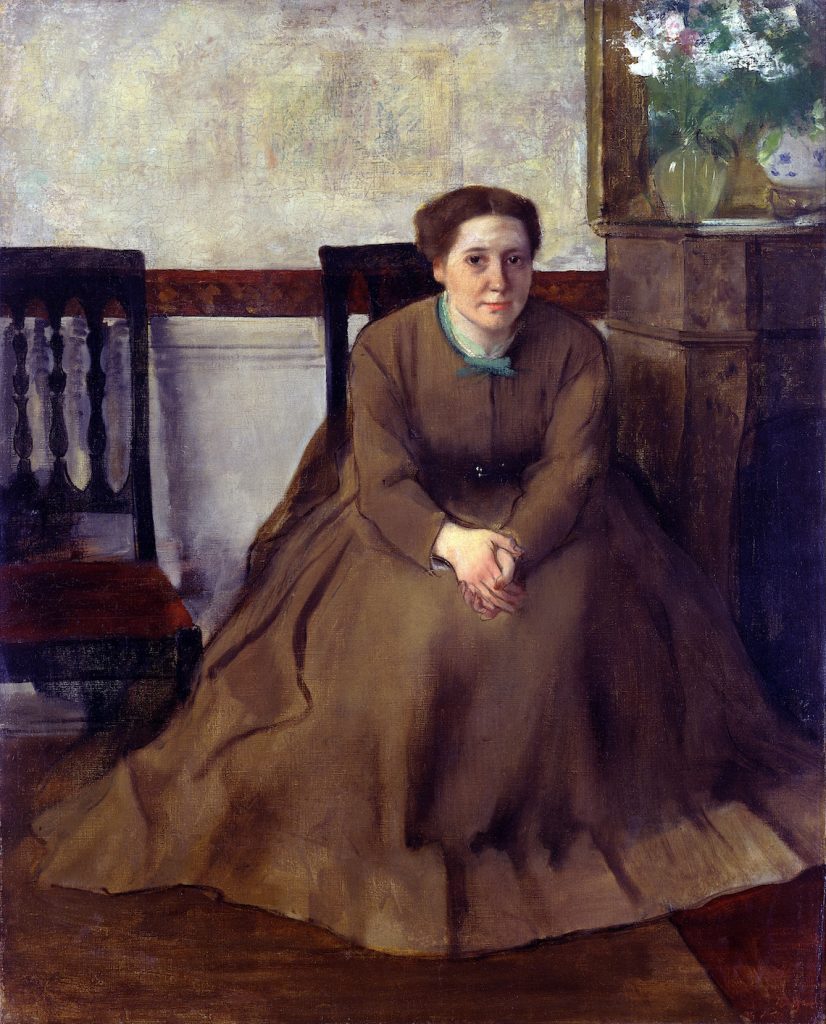
Degas’s portraits of female figures fall within the large number of works he produced of women, over half of his oeuvre, although substantially fewer single portraits exist than group portraits.
Between 1853 and 1873, Degas’s focus was predominantly on portraiture. His portrait of Victoria Dubourg, a contemporary still-life painter who would later wed Henri Fantin-Latour exemplifies his early interest in capturing his subjects in their circumstances by paying attention to background settings.
Here, Degas does not explicitly refer to Dubourg as a painter by placing her in a studio setting. But she is shown leaning forward, entering the viewers’ space and holding their gaze. Centrally positioned, she conveys assertiveness, alertness, and intelligence. Her hands are a central focal point of the composition, communicating her craft and artistic competence. The mantelpiece to her left holds flowers in a vase, the spray of green stems mirroring the green ribbon around her neck. The flower arrangement hints at the art practice of Dubourg, as does the empty chair, which may suggest the absent presence of her fiancé and painting collaborator, Fantin-Latour.
Isabella Holland, curatorial assistant of European paintings at the Fine Arts Museums of San Francisco, provides the following brief introduction to this little-known woman artist (https://legionofhonor.famsf.org/blog/Victoria-Dubourg-and-the-Louvre):
Dubourg trained privately in the studio of artist Fanny Chéron and established her independent practice in Paris by the early 1860s. Archival records place Dubourg at the Louvre in 1866, when she received an 800 franc commission from the Ministry of Fine Arts to execute a replica of Pietro da Cortona’s 17th-century painting Virgin and Child with Saint Martina. This assignment coincided with an extensive arts initiative undertaken during the reign of Napoleon III to expand and reorganize the Louvre’s collection. As part of the state’s oversight, the institution’s holdings were copied and sent to churches and administrative offices throughout the country. Dubourg later fulfilled a similar request to copy Titian’s Pilgrims of Emmaus, no doubt granting her some financial independence to study and copy artworks in the Louvre’s collection for her own personal development.
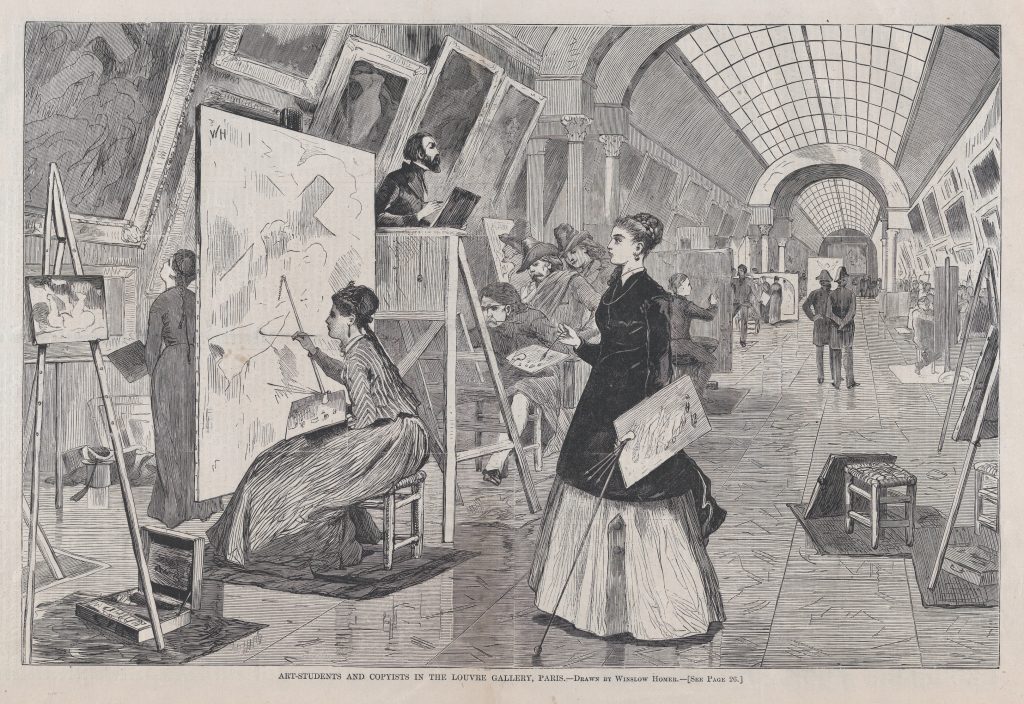
For female artists who were barred from attending the École des Beaux-Arts until 1897, studying at the Louvre provided access to the art world and opportunities to form connections with other artists. Dubourg met Fantin-Latour, while they copied Correggio’s The Mystic Marriage of Saint Catherine of Alexandria at the Louvre in 1869. Both artists socialized with a circle of progressive artists who frequented the museum, including Édouard Manet, a guest at their wedding in 1875, Berthe Morisot, and Edgar Degas.
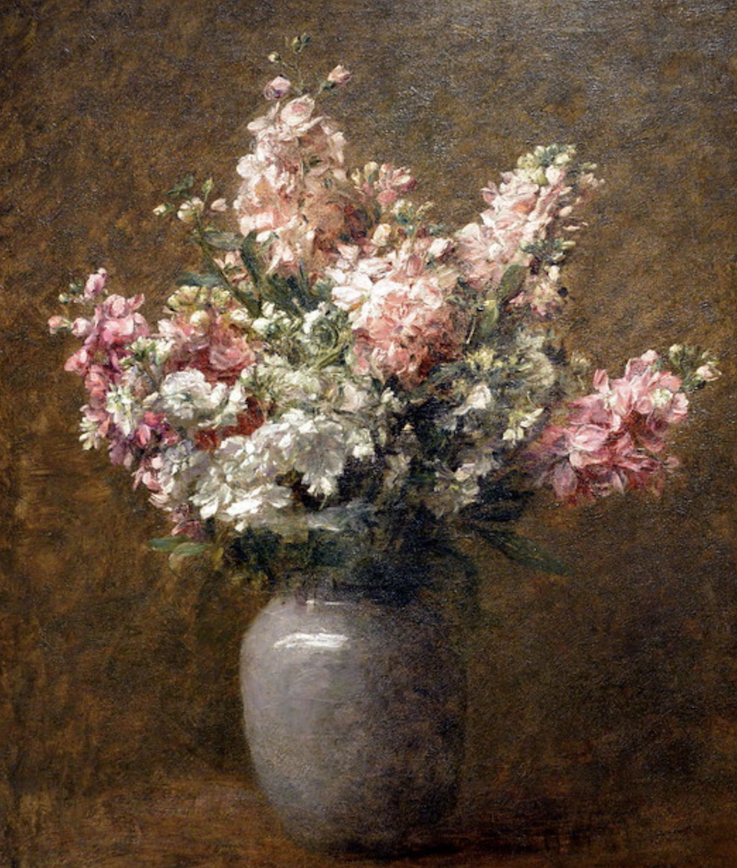
An example of the pair’s interest in Chardin may be found in Victoria Dubourg, Fantin-Latour, Still Life with Pink and White Stock, in which a simple, frothy arrangement of garden flowers seems to float out from a sombre background.
As collaborators, Dubourg and Fantin-Latour produced some of the most important flower painters of the later part of the 19th century, despite having a well-documented interest in religious painting from the Italian Renaissance.
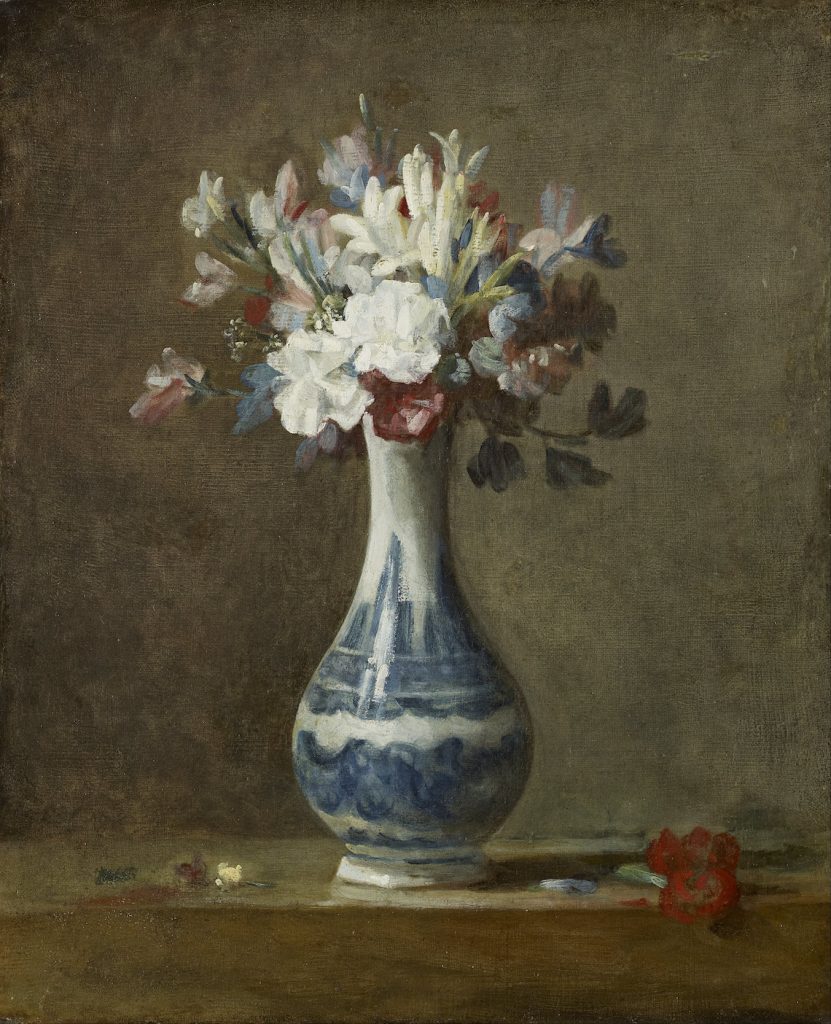
The artists’ attraction to still-life painting, particularly works by the 18th-century still-life painter Jean Baptiste Siméon Chardin, paralleled the genre’s resurgence throughout the 1850s and 1860s.
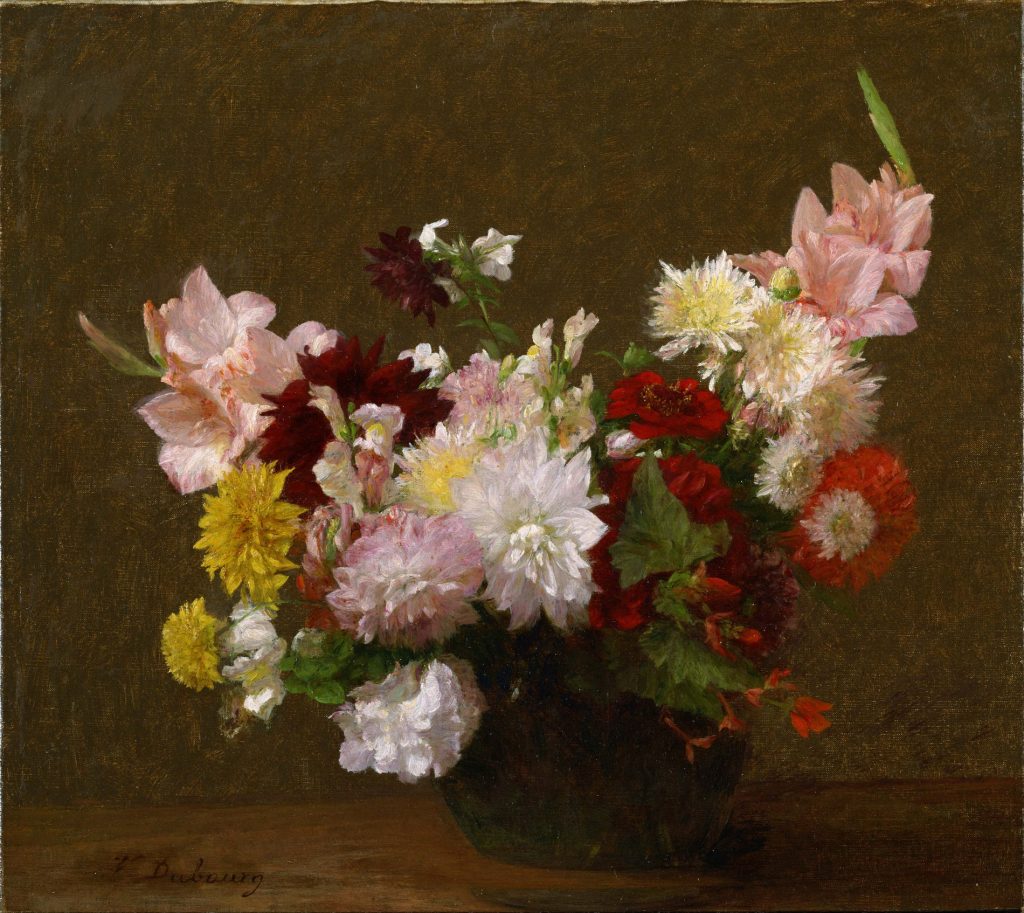
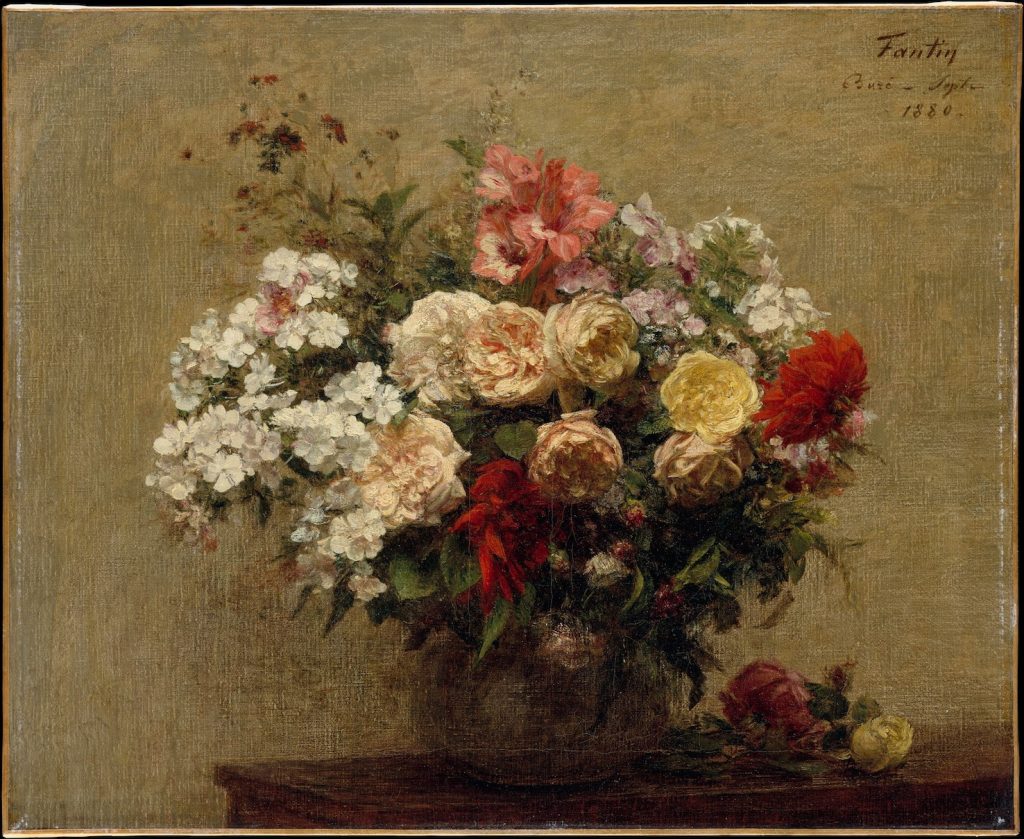
Dubourg and Fantin-Latour shared studio space at 8 Rue des Beaux-Arts in Paris. Their interest in floral still-life was facilitated by their access to fresh blooms to paint from an inherited family estate in Buré, Normandy. Dubourg and Fantin-Latour developed a similar style from working side by side, and a comprehensive understanding of Dubourg’s practice remains unrealized; her biography has been limited to the events around her marital relationship. Holland writes, “Dubourg signed the prodigious number of pictures she displayed at the annual Paris Salon and other international art exhibitions with her maiden name, perhaps in an effort to hold on to a discrete artistic identity.”
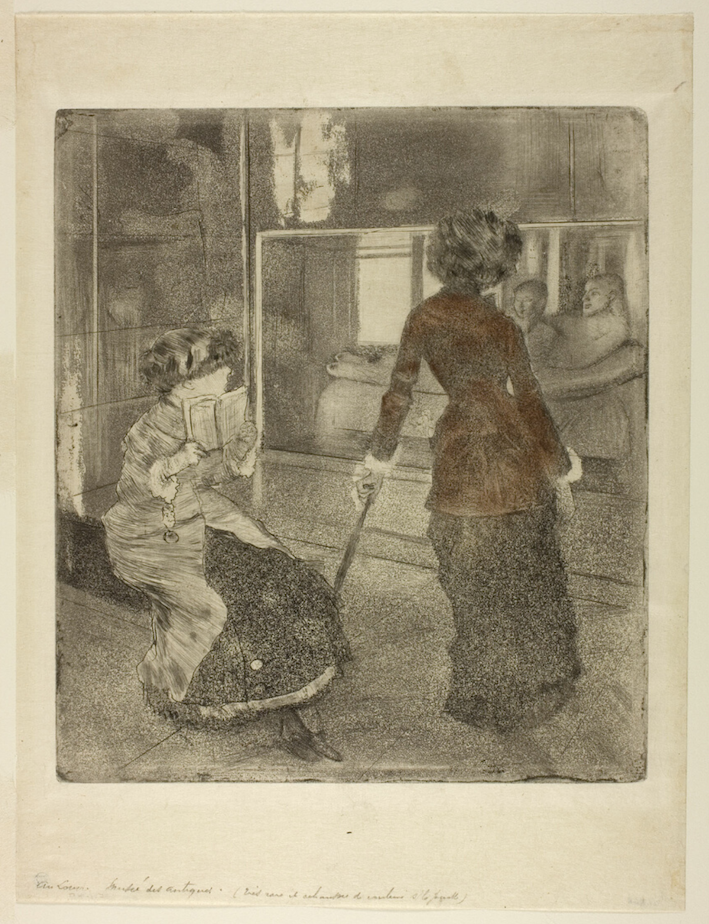
Degas’s images of his friend and fellow artist Mary Cassatt are strikingly different from his representation of Dubourg. In Mary Cassatt at the Louvre: The Etruscan Gallery, a pictorial informality initially masks the wealth of information contained within the work. Degas’s understanding of body language inspires a work that communicates the female artist’s mood even though her back is turned to the viewer.
Degas sought to call attention to Cassatt as a practicing artist out and about in the world, and to capture her critical eye. While her face is not visible, Degas achieves his objective through the subtle juts and angles of her stance as she examines the artworks on view at the Louvre. Her posture is distinctly different from that of her sister Lydia who is seated as she half-heartedly glances at the display of artifacts.
In 2014, a Degas/Cassatt exhibition at the National Gallery of Art in Washington included a number of Degas’s works depicting Mary Cassatt at the Louvre. It was accompanied by the following online text (https://www.nga.gov/content/dam/ngaweb/exhibitions/pdfs/2014/degas-cassatt-brochure.pdf):
Cassatt once remarked that she posed for Degas “only once in a while when he finds the movement difficult and the model cannot seem to get his idea.” Yet the theme of Cassatt strolling through the Louvre clearly fascinated him, resulting in a rich body of work produced in a range of media over a number of years.
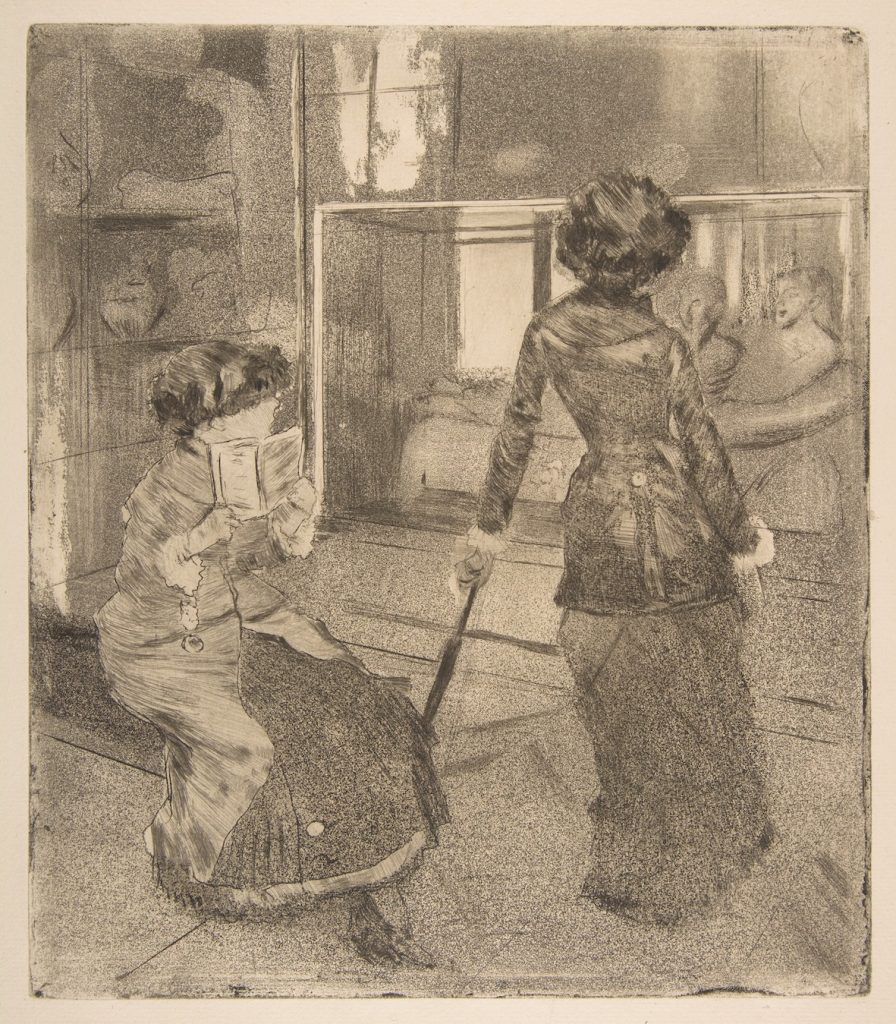
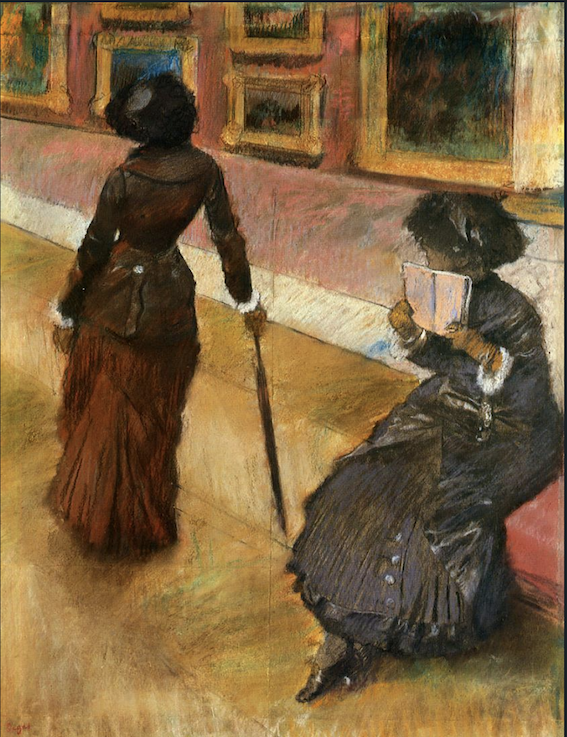
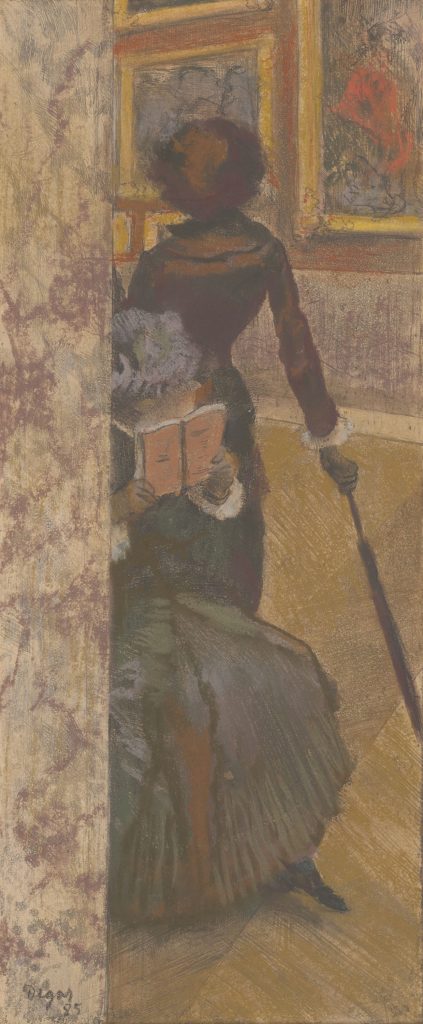
Encompassing two prints, at least five drawings, a half-dozen pastels, and two paintings, the series marks one of Degas’s most intense and sustained meditations upon a single motif.
Degas’s choice of the Louvre as the setting for this group of works spoke to the two friends’ mutual appreciation for art and its tradition. In the series, he depicted Cassatt as an elegantly dressed museum goer, wholly absorbed in her study of art. Nearby, a seated companion (usually identified as Cassatt’s sister Lydia) looks up from her guidebook. Cassatt, with her back turned fully to the viewer, balances against an umbrella in a pose that highlights the curve of her body and underscores her air of assurance. Although the precise relationship between the various works is not entirely certain, Degas most likely began with drawings and pastels of individual figures that served as references for the series as a whole.
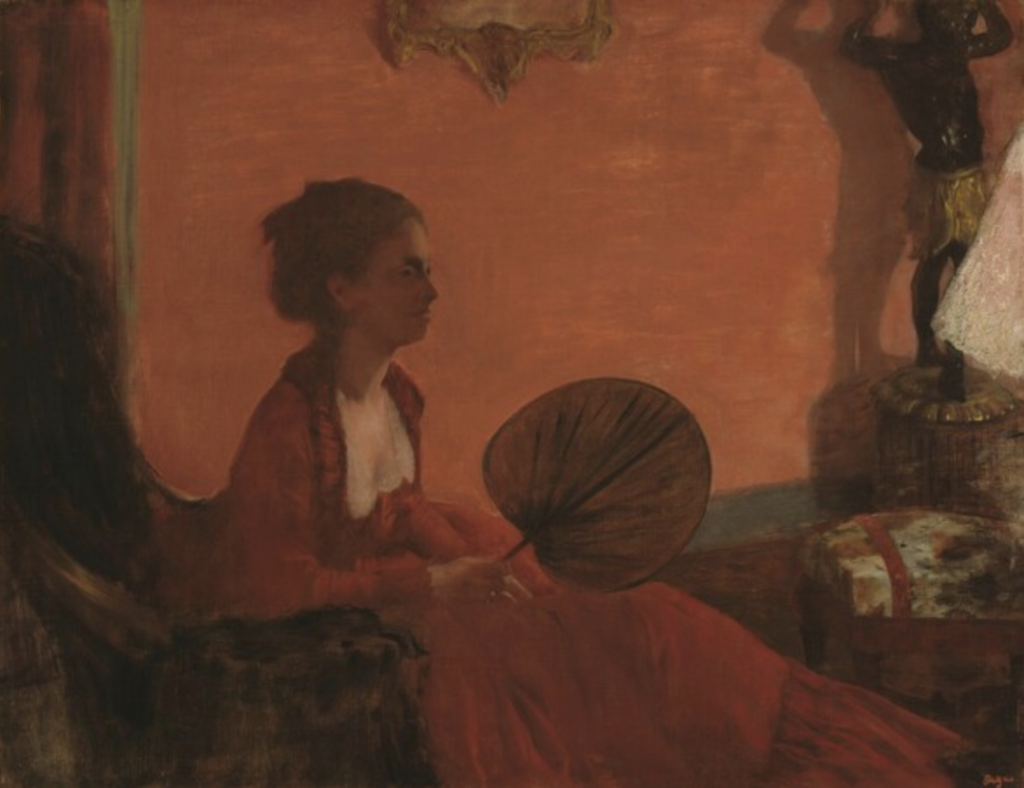
Degas’s portraits of Cassatt visiting the Louvre speak to the experience of an artist’s appreciation of fine art. With his portrait of Madame Camus, Degas extends the thematic allusion to a musician’s pleasure in music.
Madame Camus was the wife of Degas’s physician and a highly regarded pianist. In this portrait, she is shown dressed in a gown of rich red, holding a large fan and gazing intently into the distance. Her engaged attention is aural, however, not visual. Degas’s synaesthetic suggestion of a sensuous, enveloping musical experience is rendered through the play of formal elements: the atmospheric treatment of the space, the deep palette, and the rhythmic articulation of forms and contours.
Degas used the technique of chiaroscuro, balancing the strong contrast of light and shade to create his dramatic effect. More importantly, he achieves this impression while also capturing the very essence of Mme Camus.
When Madame Camus was exhibited in the Salon of 1870, it was praised by Théodore Duret, the journalist, author and art critic, whose Critique d’Avant Garde (Paris, 1885), written in support of the Impressionists, was among his best-known works. He described the painting in the Electeur Libre (2 June 1870) as a “picture that escapes from the well-trodden ways…the lady in the picture…is a credible, a real, very alive, very feminine, very Parisian.”
Years later, in her recollections, Jeanne Raunay, a French mezzo-soprano opera singer, described Mme Camus as a beautiful young woman, her “eyes charged with languour and wit, which she barely opened, letting their fire gently pass through half-closed eyelids, and her complexion and hair were dream-like” (“Degas, souvenirs anecdotiques,” La Revue de France, March 15, 1931: 213-321, and April 11931: 619-32).
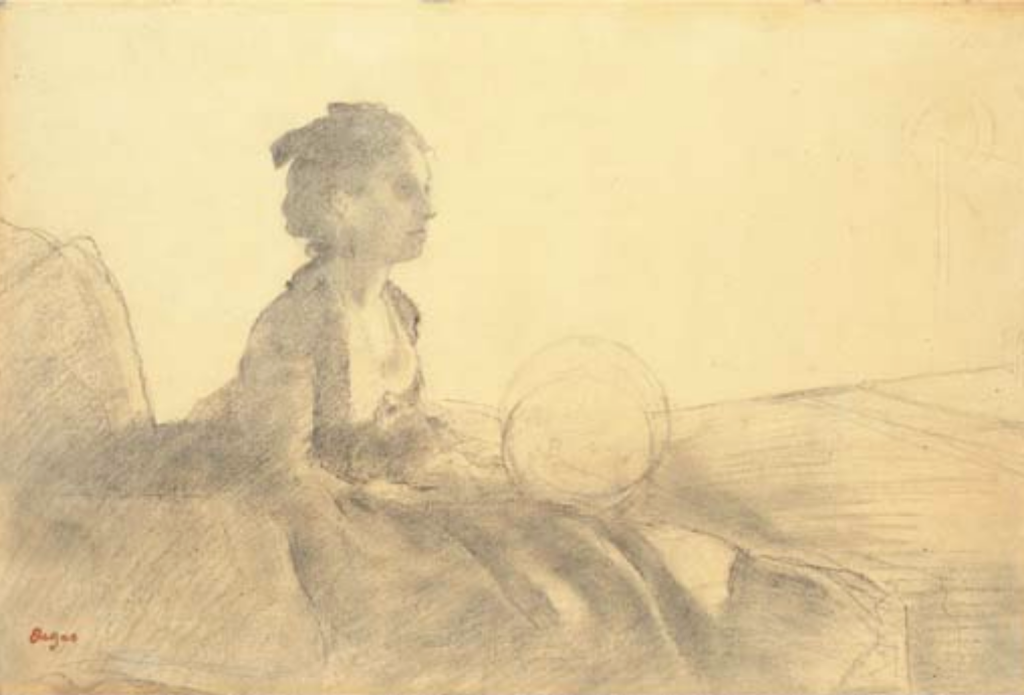
Comparing the preliminary drawing Madame Camus with a Fan with the completed painting reveals how Degas transformed the picture in charcoal and pencil into a fully realized composition that effectively describes the character and mood of his subject.
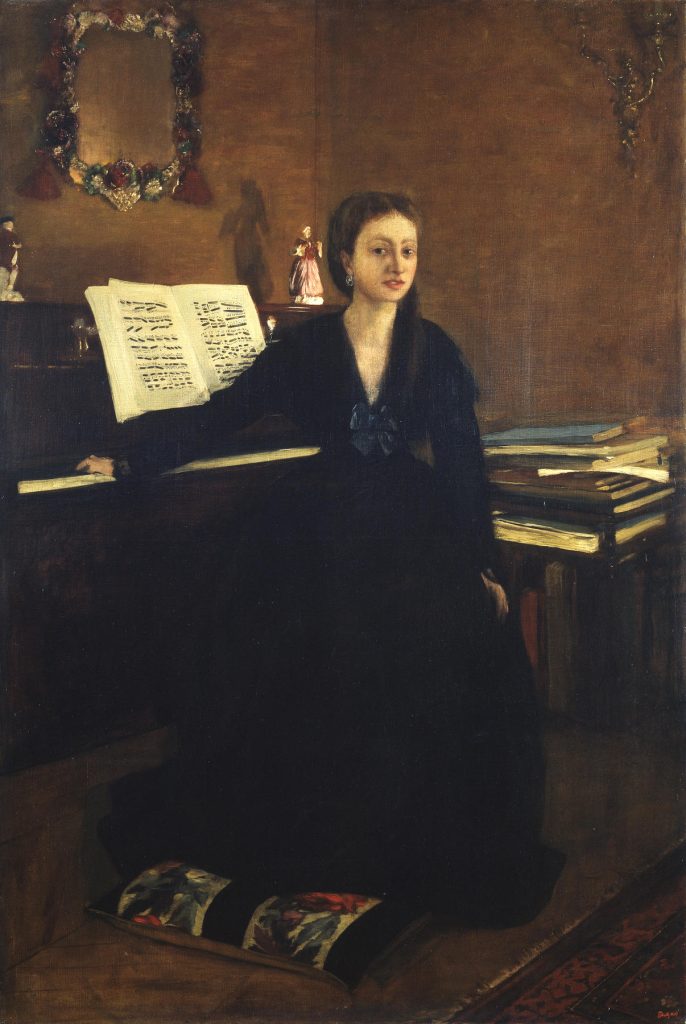
Degas painted another portrait of Mme Camus during the same period. This time the piano, the instrument she excelled at, is an integral part of the composition, symbolizing her active engagement with music and her identity as a performer.
Much has been made of how differently male and female sitters were represented in Impressionist portraiture. And while differences do exist, they are reflective of the markedly different lived realities of males and females. Social customs governed behaviour and appearance, and it is unsurprising to see such strictures represented in paintings. Impressionist portraiture, however, frequently challenged gender-based stereotypes in subtle ways.
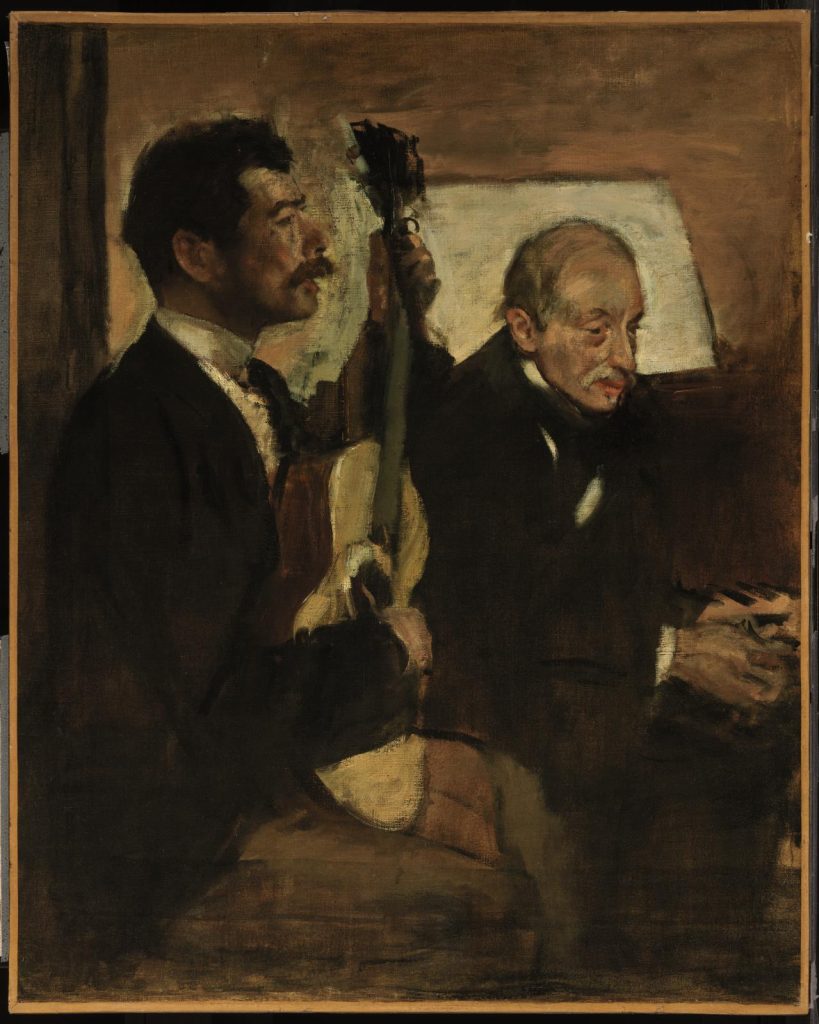
If passively listening to music, for example, was stereotypically a female experience, then portraying a man doing so was a means by which to sabotage this ascribed meaning.
Degas engaged with this trope on several occasions. For example, he portrayed his father listening to the singer Pagans more than once.
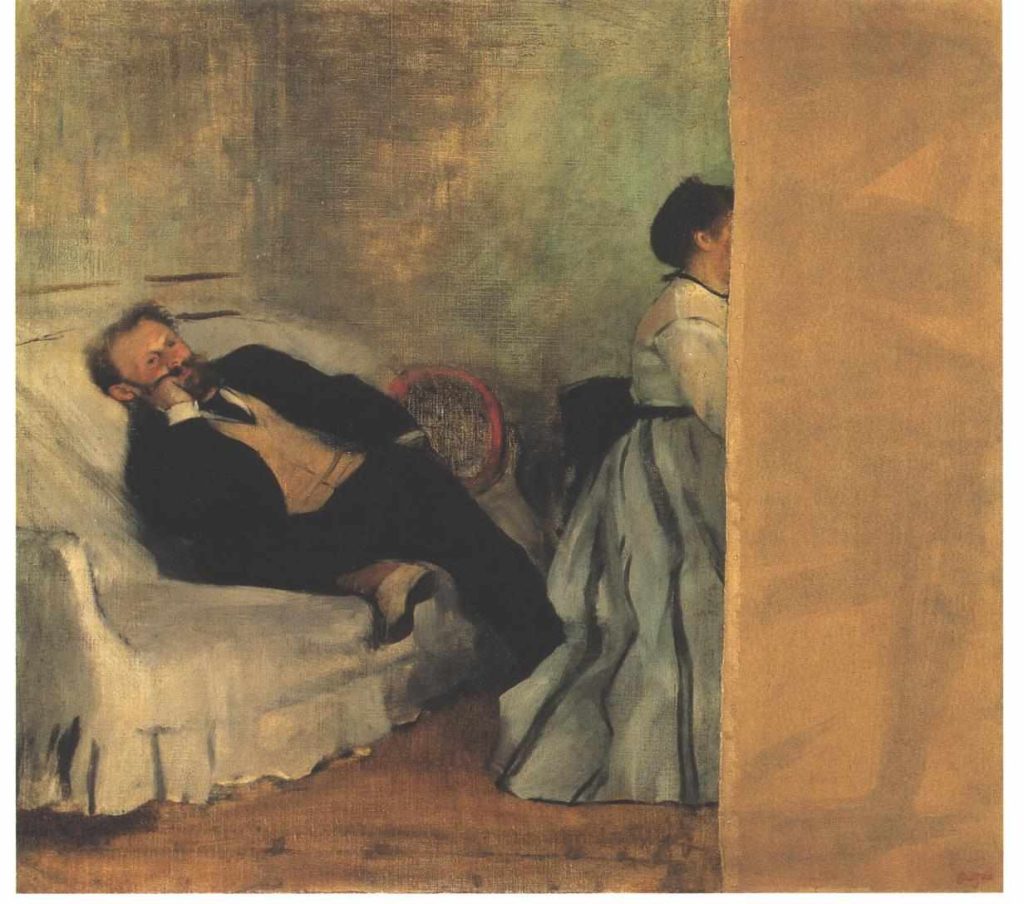
The painting Edouard Manet and his Wife also reflects his interest in the theme. It is a double portrait of Manet and Suzanne which shows the artist reclining on a sofa, intently listening to his wife playing the piano. Besides his suited figure, there is little attempt at conveying his social and artistic status or his reputation as a dandy. The pose is unflattering; Manet is sprawled out in a way that emphasizes his stockiness, a foot drawn up beneath his body. While he is leaning back, there is a deliberate sense of connection between the two figures whose garments extend one into the other. However, we cannot discern much more about Mme Manet as the entire front portion of her body was cut away by Manet, who felt that Degas had distorted his wife’s features.
Degas reclaimed the work to restore Suzanne’s likeness but never did. He kept the vandalized painting on his wall, as is visible in a photo of his apartment taken around 1895, now in the Bibliotheque Nationale de Paris.
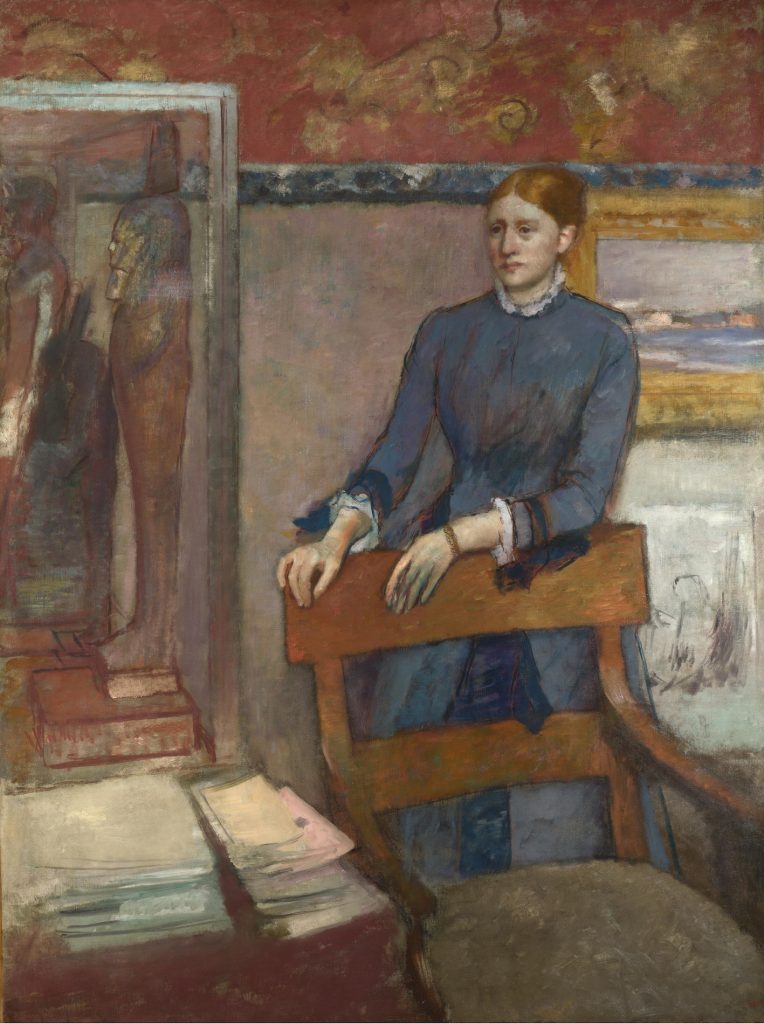
Degas’s ability to employ formal dynamics to convey individuality, or alter an individual’s perception, is clearly at work in Hélène Rouart in her Father’s Study. The young woman, ill at ease in her surroundings, appears physically and emotionally trapped in her father’s study. She is hemmed in by paintings on one side and sculptures on the other, an empty chair pressing against her front. She is literally and figuratively out of her element, her industrialist father being the actual subject in absentia.
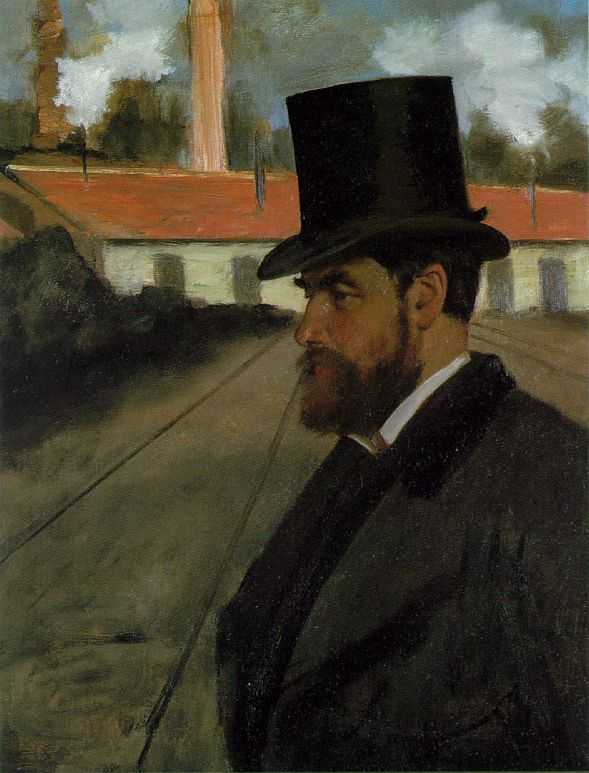
Hélène’s father was an engineer, industrialist, amateur painter and friend of Degas. In his portrait Henri Rouart in front of his Factory, Degas utilizes the affectation of the portrait d’apparat—a device of incorporating symbolic objects in portraiture—to underscore Rouart’s status as a wealthy industrialist. He is solemn and regal as he stands in front of one of his factories. He is dressed smartly and wears a top hat. The heavily smoking smokestacks and the railroad lines zooming into the canvas and converging just behind his head infer the connection between his intellectual acumen and his success.
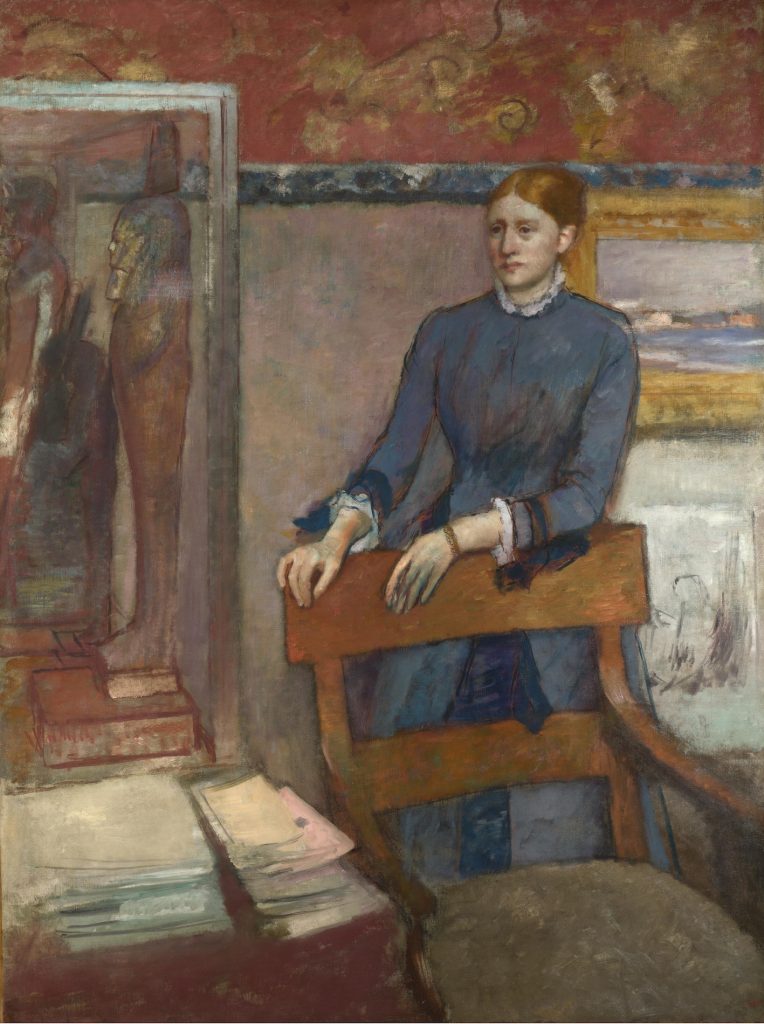
Was Hélène an unhappy daughter, burdened by her successful father and possibly relegated to the role of office secretary and clerk, attending to the considerable paperwork of her father’s enterprises?
Jonathan Jones, the British art critic for The Guardian (June 24, 2000, https://www.theguardian.com/culture/2000/jun/24/art), sees her this way:
Hélène is a strange portrait. It is supposed to be of Hélène Rouart, but she is utterly overwhelmed by signs of her father. She stands in his study surrounded by his art collection, posing behind his chair, which is colossal compared with her, as if behind a restraining fence. She is diminished by the imagined presence of her father, who might be just outside the room – though actually he was travelling in Venice when this was painted.
Hélène has a pasty complexion, her hair is flattened, her dress encases her. She lists like a passenger on a swaying deck. This is the ailing, unhappy daughter of a 19th-century patriarch, so subjugated to the fetishised, massive presence of her father – images of his taste, his wealth – that she seems half-dead. To her left is a landscape of Naples by Corot, and lower down a drawing by Millet, and she is juxtaposed with them as another of her father’s treasures. To her right is the glass case containing her father’s collection of Egyptian funerary artefacts. She too is mummified and entombed in this room. Degas makes Hélène show the ringless fingers of her left hand. The only man in her life, this painting says in a brutal way, is her father.
…What a fall to earth is in this painting. Hélène Rouart, the well-behaved daughter of the bourgeoisie, is repressed, dulled in a way that Degas’s proletarian performers are not. She’s painted to make her as lifeless as possible: her hands drape weakly over the chair back, her face is passionless. This is middle-class depression, the crisis of the 19th-century individual that Freud would later diagnose. But it would not be true to say there’s no desire in this painting. It is unbelievably luxurious: Degas kept repainting and retouching it over many years, making the reds ever richer, the texture more opulent. The sexuality that is absent from Hélène’s demeanour becomes the glint of silver on the mummies’ vitrine, the luxury of a Chinese silk hanging. The painting is suspenseful: possibilities, unacknowledged desires, circulate in its tense space, between the painter, the young woman and her father.
Hélène Rouart married and left home soon after posing for Degas. As for Degas, he died 30 years later with this canvas still in his studio.
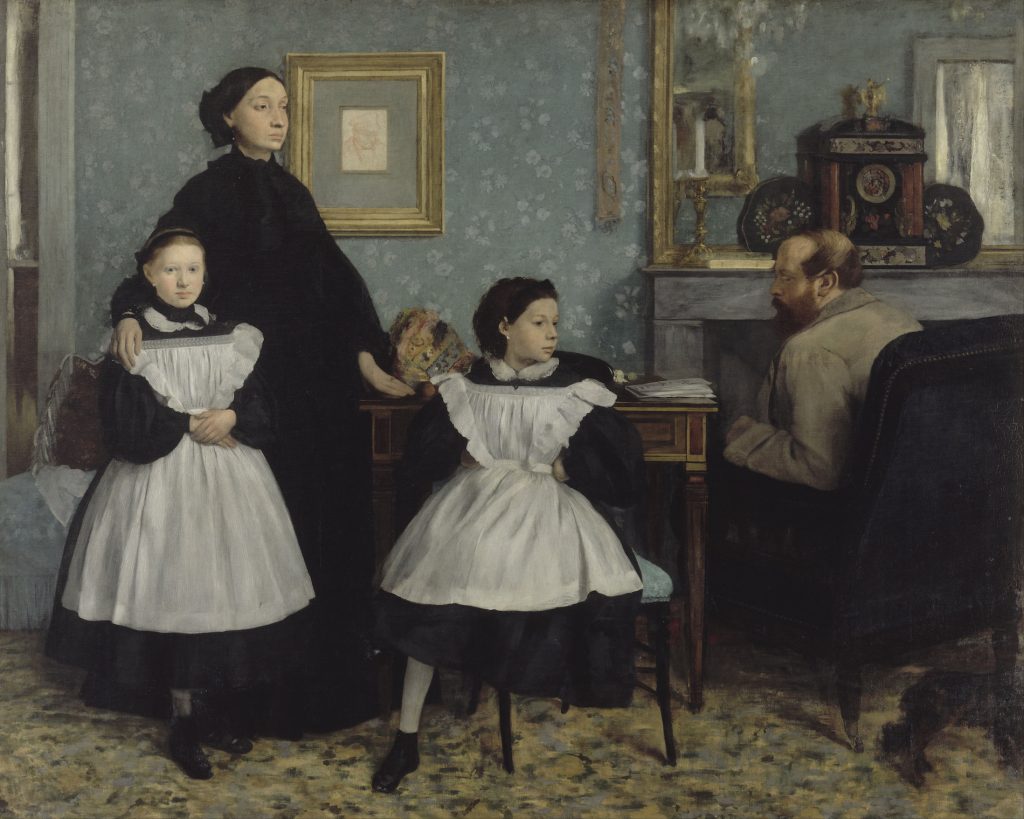
Degas was always sensitive to family dynamics, relationships that shape individuals and the contributing factors that inform those relationships. The Bellelli Family is an early work begun during a stay in Italy. It shows his paternal aunt Laure, her husband, Gennaro Bellelli, and their two daughters, Giovanna and Guilia. At first glance, it appears to be a conventional, finely painted and well-composed family portrait.
Jean S. Boggs describes the interior setting in “Edgar Degas and the Bellellis” (Art Bulletin 37, no. 2 (June 1955): 127-136):
Here is a dignified middle-class family, virtuously in mourning [in I864 the baron Bellelli died] painted in its drawing room. A dog, a newspaper, a basket of mending and a bassinet further testify to respectability. Even the scale of painting, so large that the figures are approximately life-size is somehow reassuring. We are ready to be enchanted with the ingredients of the setting, lovingly to absorb the candles, the clock, the books on the mantelpiece; the painting, open door and chandelier, reflected in the mirror; and the soft blue wallpaper, the bell-pull and the chalk portrait of Degas’s father on the wall; prosaic details out of which the painter created the atmosphere of a bourgeois living room. The light also carries us dreamily back to the past. It is dappled by the flowered wallpaper, the spotted rug and the broken reflections of the mirror. Most of it comes from one source: the open door we can see in the mirror. Where it does not penetrate, on the upper part of the wall, in the left hand corner of the room under the furniture, there are dusky shadows, which make it more positive still. However, it always remains the quiet light of a dimly lit room, a room seemingly remembered from our nineteenth-century past.
That being said, the monumental Portrait de famille, as it was called when it was first exhibited at the Salon of 1867, is a depiction of a family drama. The painting highlights the mother’s stature: she stands straight and dignified, while the father is seated inward-facing on the other side of the room.
Mother and daughters are in dark clothing, alluding to the recent death of the Baroness’s father. On the wall hangs a small portrait of him by Degas (a nod to the aristocratic tradition of portraiture), underscoring his presence in the scene and reinforcing the heavy atmosphere.
Degas was undoubtedly aware of the strains between Gennaro Bellelli and his wife and the tensions at play while painting the family portrait. However, his ambition was to create a significant painting which captures, in the words of the French painter, art critic and museum curator Paul Jamot “his taste for domestic drama, a tendency to discover hidden bitterness in the relationships between individuals…. even when they seem to be presented merely as figures in a portrait.” (Paul Jamot, Degas (XIX Siecle) (Geneva: Editions d’Art Albert Skira, 1947)
That he successfully portrayed the disequilibrium through pictorial means without compromising a superficial reading of a family scene is laudable. In fact, the insertion of signs of dissension and instability rendered the portrait more interesting.
In pictorial terms, the tensions are not confined to the postures of the father and mother, one slouched in a seat, the other standing overly erect, but also by the figure that both separates and connects them, the awkwardly posed Giulia pictured between them. In addition, the small dog seen moving out of the picture plane on the right creates further fragmentation. With a wave of its fluffy tail and a kind of cheeky je m’en foutisme (I don’t-give-a-damn attitude) that is entirely at odds with the seriousness of the painting, the dog works to undermine the solemn balance and traditional formality of Degas’s monumental and tensely harmonized family-group structure.
Thus, Degas offers a contra version of a conventional bourgeois domestic scene, as much about the contradictions inherent in the idea of a bourgeois family in the middle of the 19th century as it was a family portrait.
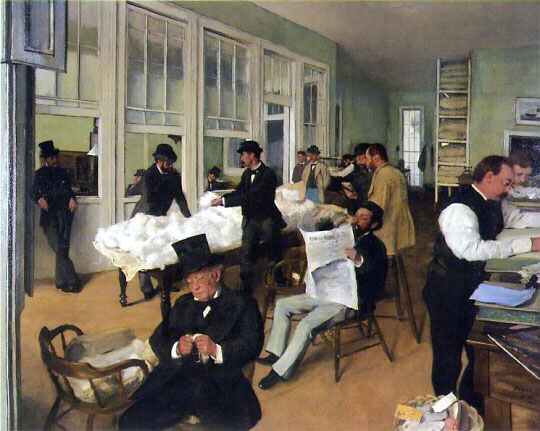
In October 1872, Degas travelled to New Orleans, where he stayed for five months with his late mother’s brother Michel Musson and the extended Musson family at 2306 Esplanade Avenue. The artist’s younger brothers, René and Achille, were by then settled in the United States, running a wine importation business financed by the Parisian Degas family bank. From the second-floor front gallery of the house on Esplanade, Degas painted A Cotton Office in New Orleans, an image of the office of Musson’s factorage firm at what is now 407 Carondelet Street. A Cotton Office in New Orleans stands as both a family portrait and a portrait of the new universe of American commerce.
In the foreground, Degas portrays top-hatted broker Michel Musson carefully examining a fibre sample between his thumb and forefinger. Degas’s brother René is seated reading the Daily Picayune, and his cousin Achille looks over at the accountants as he lounges against a window. Prominently posed at the front is the cashier John Livaudais standing over a large register. Degas has captured the characteristic disposition of each of the men in the office in myriad small details while effectively conveying the atmosphere of places of business such as the cotton office.
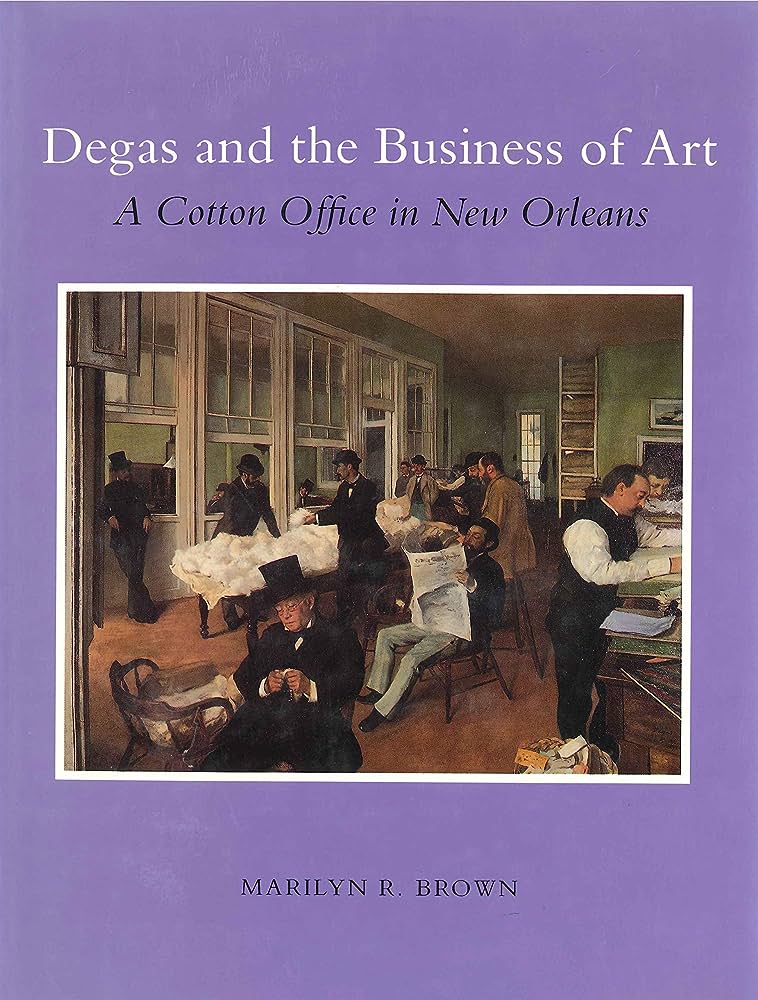
Degas’s A Cotton Office in New Orleans (Pennsylvania State University Press, 1994) by Marilyn R. Brown is an important portrayal of nineteenth-century capitalism that explores the artist’s complicated relationship to the art business.
Jerah Johnson’s book review, “Degas and the Business of Art: A Cotton Office in New Orleans by Marilyn R. Brown” considers Brown’s historical description of the painting (Louisiana History: The Journal of the Louisiana Historical Association 36, no. 3 (Summer 1995): 345-347):
Degas himself noted that his painting was “Louisiana art” not “Parisian art” and that it was “a picture of the local vintage, if there ever was one.” The languor of the cotton office Degas depicted — of the fourteen figures in the painting, only half are, in Degas’s own words, even “more or less busy”— suggests the oppressive heat and slow pace of life in New Orleans. Some critics have argued, Brown reports, that the general inactivity in the office also implies a contrast to the hustle and bustle of the New Orleans Cotton Exchange, which had been established around the corner on Gravier Street only two years before and which was rapidly putting old-fashioned factors such as Mussonout of business. Musson’s firm, in fact, went bankrupt while Degas was painting the picture.
Degas designed the Cotton Office with a particular buyer in mind, an English textile magnate and art collector in Manchester. But Degas’s agent could not negotiate the Manchester sale, so Degas put the Cotton Office in the second Impressionist exhibition in Paris in 1876. The piece got a mixed critical reception that, on balance, represented a qualified success, particularly with politically right-wing critics, who liked both the bourgeois subject and the traditional surface finish of the picture, so unlike the finish of Degas’s more ‘modern’ works. But no one offered to buy it. Needing money badly and desperate to sell his cotton, as he now called the piece, Degas had his dealer send it to Pau for exhibition in 1877-78. Pau was an old textile manufacturing center in remote southwestern France, a sort of minor Manchester, but with some important differences. It had a museum that was closely associated with a local Society of the Friends of Art, the membership of which included the town’s political, banking, and manufacturing elite. The Society was one of the most active, successful, and progressive of France’s many provincial friends-of-art associations, all of which had developed connections with Paris dealers and agents. And Pau had also become a winter resort for large numbers of rich Americans.
…It was the ideal market for Degas’s cotton, and the Pau museum bought his piece when the 1878 exhibit closed. It was not only the first of Degas’s paintings purchased by a museum, but the first painting by any member of the Impressionist group purchased by a museum. Thus the sale marked turning points in both Degas’s career and in the Impressionist movement as a whole. And it exemplified, as well as anything could, the new business of art.
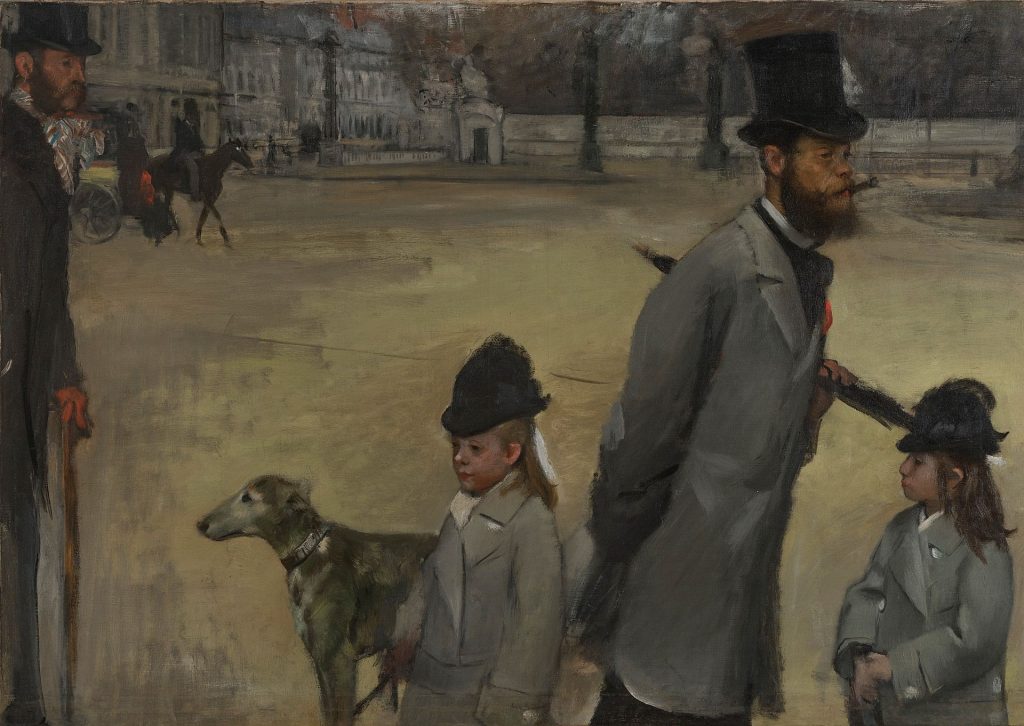
Two years later, Degas decided to embark on another atypical family portrait set within a remarkably strikingly unusual perspectival space. In Place de la Concorde, Vicomte Ludovic-Napoleon Lepic, aristocrat, artist, museum curator and père de famille, is depicted in the extreme foreground as he strolls across the Place de la Concorde, top hat set at a jaunty angle, cigar thrust between his lips and a furled umbrella tucked beneath his arm. He is accompanied by his two young, fashionably dressed daughters, Eylau and Janine, and their well-bred borzoi, Albrecht.
Place is virtually unpopulated otherwise, with just a few small figures in the background and a marginally placed figure at the left. This is Degas’s friend Ludovic Halévy, well-dressed and carrying a walking stick. His role as a bystander, rather than a subject, is further stressed in how he is pictured turning to take in the group.
The family easily dominates the picture plane’s expanse, alluding to Lepic’s equally prominent and privileged position in the heart of urban Paris. The space is near empty, alluding to the influence of photographic aesthetics in the vastness of the negative space, the cropping of the composition and the overall random quality of the event.
Nancy Forgione in “Everyday Life in Motion: The Art of Walking in Late-Nineteenth-Century Paris” (Art Bulletin 87, no. 4 (December 2005): 664-687) connects photographs of people walking in Paris with Degas’s painting of the Lepic family:
Interest in the analysis of physical movement grew rapidly during the nineteenth century, encouraged and aided by the new medium of photography. Though, initially, lengthy exposure times meant that moving objects were precisely what photography left out, within a few short years the documentation of movement became one of its most impressive accomplishments.
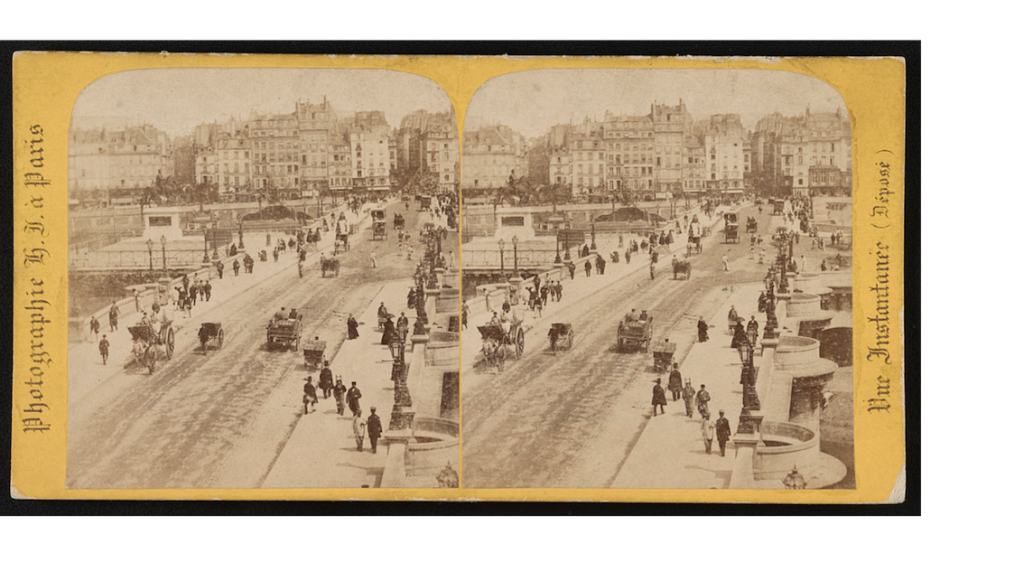
For example, in this stereograph photograph two nearly identical photographs or photomechanical prints are paired to produce the illusion of a single three-dimensional image.
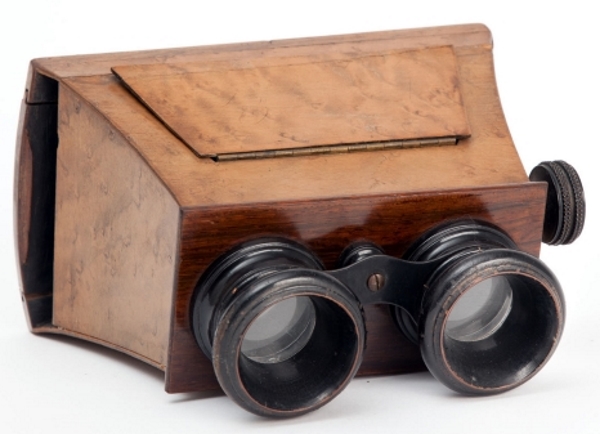
The photographic image was usually viewed through a stereoscope, such as the “Brewster” pictured above.
Pedestrian street scenes such as Hippolyte Jouvin’s The Pont Neuf Paris were influential during the 1860s and 70s because they were the best way to analyze actions such as walking or running. This new visible record of knowledge informed how paintings were made and how people appeared to move in space. Looking at Place de la Concorde, for example, we comprehend that the central figures in the square have just stopped walking. We know this even though the image is cut off, and their lower bodies are not visible. Forgione describes the painting in this way:
The Lepic family members pause rather unceremoniously in their progression across the Place de la Concorde. Though the bottom edge of the canvas cuts off our view of their legs, we assume they have stopped walking because the current orientations of their bodies would propel them in very different directions if they were still in motion. The nearly deserted square behind them contrasts with the impression that traffic fills the space before them that is, the space in front of the picture plane—for, as no other motivation for stopping can be discerned, it may be presumed that they stand on a traffic island awaiting an opportunity to cross the street. For a family group, they display a curious disjointedness. Just as the orientations of their bodies and their gazes radiate out at disparate angles, so, too, their minds seem to be idling in different directions, largely inattentive to each other and to the onlooker at the left, a partially visible man whose presence balances the human weight and the vertical rhythm of the composition. The family’s relation to their surroundings, like their relation to one another, implies not connection but disengagement, in part because of the broad stretch of open space that separates them from the backdrop of buildings and trees. Moreover, their radical proximity to the picture surface suggests that they are not in the depicted space so much as they are testing its frontal membrane, as if, when the traffic clears, they will resume walking and exit the pictorial space….
The three figures, arrayed in a shallow plane, do not interact or intersect, except where the father’s umbrella visually stabs the hat of the girl at the right. It is difficult to tell whether their preoccupation has an inward or outward focus, or no focus at all. The viewer, like the onlooker at the left, encounters this fragmented family dynamic as would a passerby, randomly observing such a group on a city sidewalk, yet the proximity of the figures to the surface permits no impression of physical access into the pictorial space. Place de la Concorde is rare among paintings of the period that feature walking in Paris in that, owing to its air of disconnection, it incorporates a feeling often described as alienation. ….However, considering that Degas also infused a number of his paintings of indoor scenes with a similar atmosphere of anomie, perhaps it is not the geographic location so much as the psychic territory his figures inhabit that primarily governs the mood. The dense but enigmatic psychology of the individuals and the lack of cohesiveness among them emphasize the distance that separates rather than the closeness that binds human relationships.
Adding to the vague unease of Place de la Concorde is the impression that the figures pass through but do not quite belong in their space, as if they withhold themselves from their environment as well as from one another.
Carol Armstrong also connects Degas’s paintings to photographs in “Reflections on the Mirror: Painting, Photography, and the Self-Portraits of Edgar Degas” (Representations no. 22 (Spring, 1988): 108-141). Her emphasis is on the fragmentation of the body:
A critic, writer, and friend of Degas’s, Edmond Duranty, author of one of the best 1870s accounts of Degas’s oeuvre, speaks to the notion of the aspect and links it to the concept of the fragment, characterizing both as fundamental to Degas’s work: If one takes a person in a room or in turn in the street, he is not always at an equal distance from two parallel objects, in a straight line…. He is not always in the center of the canvas, in the center of the setting. . . He is not always shown complete, since sometimes he appears cut at mid-leg, mid-body, sliced longitudinally…. The detailed description of all of these cuts would be infinite. Bodily fragments, “coupes d’aspect”. Duranty ties the fragmentation of the body to a particular mode of seeing-the moving point of view and the taking in of the world as a series of partial aspects. Indeed, the two are simultaneous and synonymous: the body is cut at the same time as the world is submitted to the photographic crop-to view in this way is to slice the world into pieces, to dis member bodies as well as spaces. And indeed, this is the most noticeable characteristic of Degas’s oeuvre-today, when we debate about the relationship between photography and his painting, and during the artist’s lifetime, when critics, Duranty and others, repeatedly singled out Degas’s use of fragmentation as the signature of his work. Unexpected points of view, the human body never seen as a whole or as a unity, a way of framing that is to crop and cut into and never to close off, and seriality: these are notions that still capture better than any others Degas’s paintings and pastels of horses, dancers, and bathers-even now they describe no other painter’s pictures as well as they describe Degas’s. (We do not even need, as Duranty evidently did not need, to refer to particular pictures in order to recognize their aptness.) In Degas’s work fragmentation is fundamental, and the artist’s simple piece of advice to himself about seeing from above and below belongs to a whole partializing way of seeing the body. It also suggests the medium of photography.
Portrait artist Jacques-Emile Blanche’s tribute to Degas soon after his death anticipates Armstrong’s analysis. Blanche wrote: “His system of composition was new: Perhaps he will one day be reproached with having anticipated the cinema and the snapshot and of having above all between 1870 and 1885 come close to the genre picture. The instantaneous photograph, with its unexpected cutting-off, shocking differences in scale, has become so familiar to us that the easel-paintings of that period no longer astonish us…no one before Degas ever thought of doing this, no one since has put such ‘gravity’…into the kind of composition.” (Scharf, Art and Photography, 184)

Linda Nochlin, in “Impressionist Portraits and the Construction of Modern Identity” (initially published in Renoir’s Portraits: Impressions of an Age (New Haven and London: Yale University Press, 1997), 53-75), writes that Place de la Concorde compels an examination of the complexities and ambiguities it offers as a portrait-image. For example, the image moves beyond the traditional genre of portraiture in that it operates not only as a representation of Vicomte Lepic and his children but also as a social portrait meant to capture a specific class in Paris at a particular moment in history.
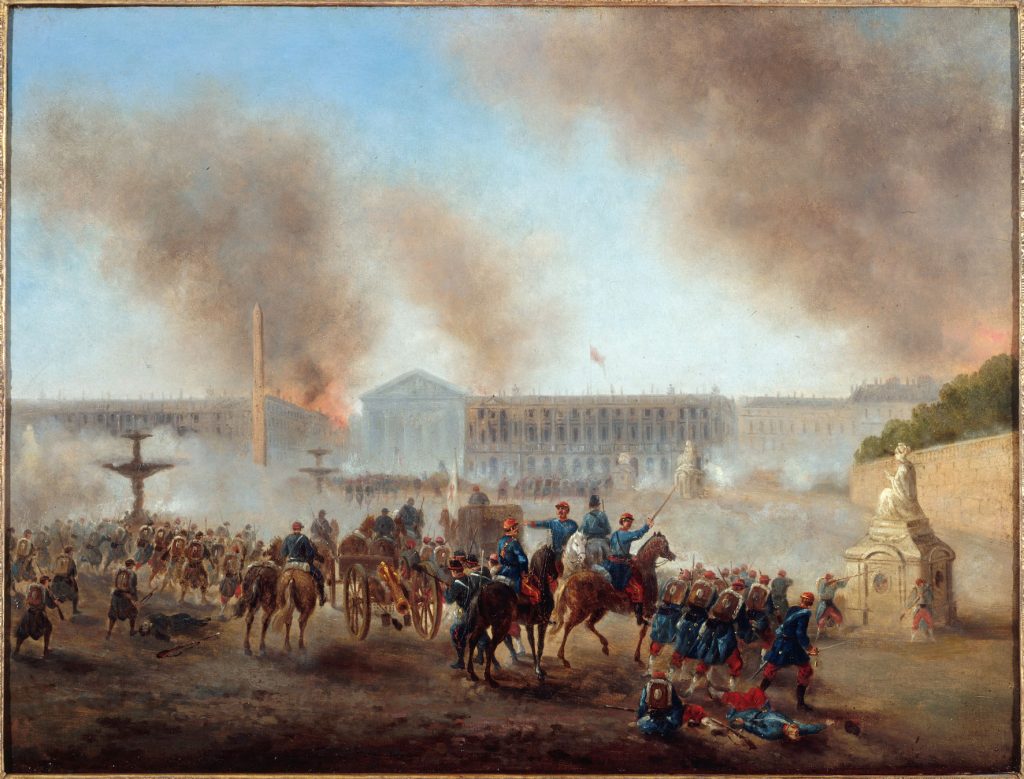
There are discreet references to the recent loss of Alsace to the Germans after the Franco-Prussian War, for instance, in the vaguely adumbrated statue of Strasbourg in the Tuileries decked out with mourning banners.
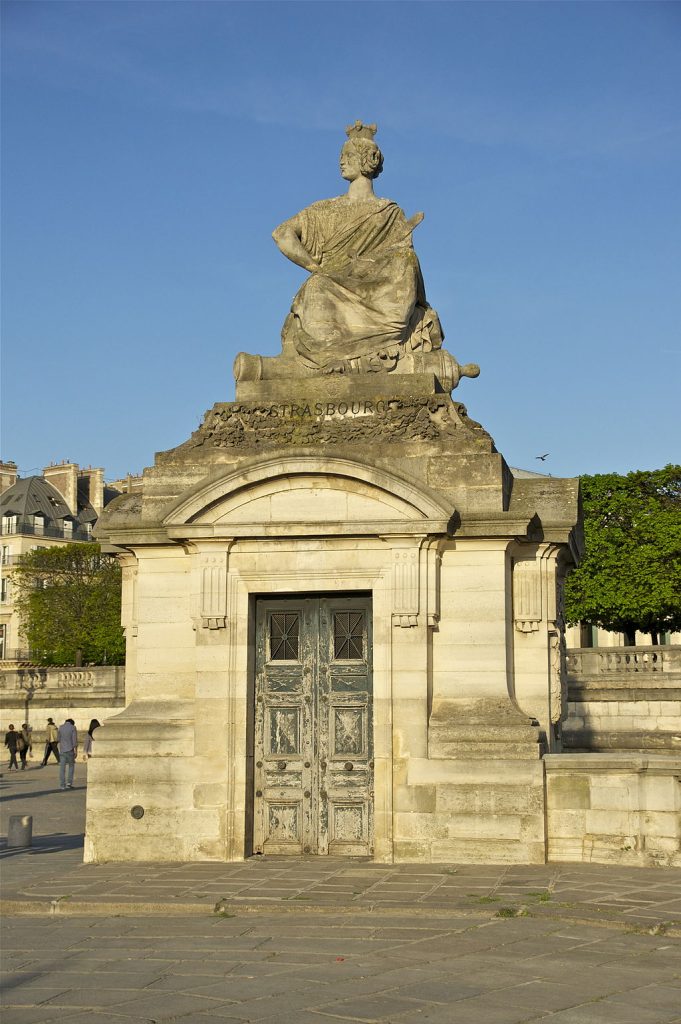
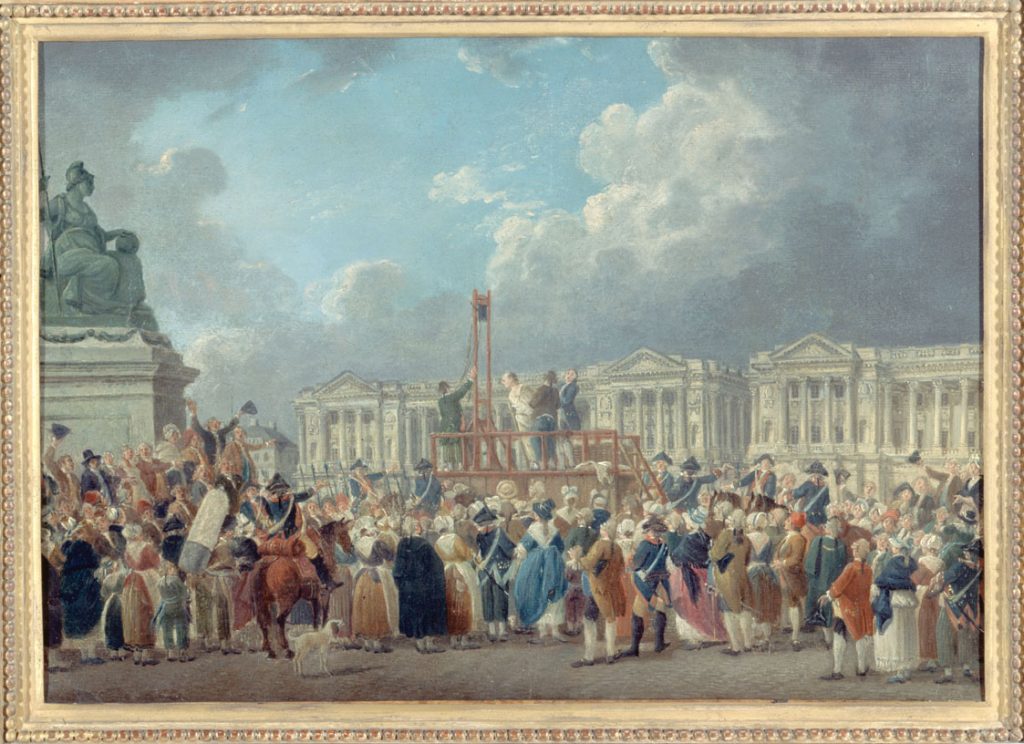
Place de la Concorde is an important historical location in France’s political and symbolic life. The square was named Concorde in 1830 to commemorate the French people’s reconciliation following the Terror’s excesses and the political upheavals at the end of the 18th and beginning of the 19th centuries.

While Degas’s Place de la Concorde closely resembles an established genre of group portraiture (despite its lack of a narrative thread connecting the characters), the work instils in the viewer an expectation of additional meaning, which it does not provide. This contradiction compels a reconsideration of its reading as a traditional portrait.
Among the questions it raises is the importance, or unimportance, of the subject’s identity. Lepic was, among other things, a prolific and technically skilled printmaker, an exhibitor in the first and second Impressionist exhibitions who shared an interest along with Degas in the so-called science of physiognomy and evolutionary theory, which furthered analogies between animals and humans and argued the idea of a God-given soul. How does this information insert itself into the work, and how does it impact visual meaning, if at all?
Place de la Concorde is a remarkable portrait, offering itself up to a wide variety of interpretive strategies. But the question remains, is it a portrait at all? Differing considerably from the conventional single portrait, it is hardly a family portrait in the usual sense of the term, even though the central subject was a friend of Degas, who likely participated in making the portrait.
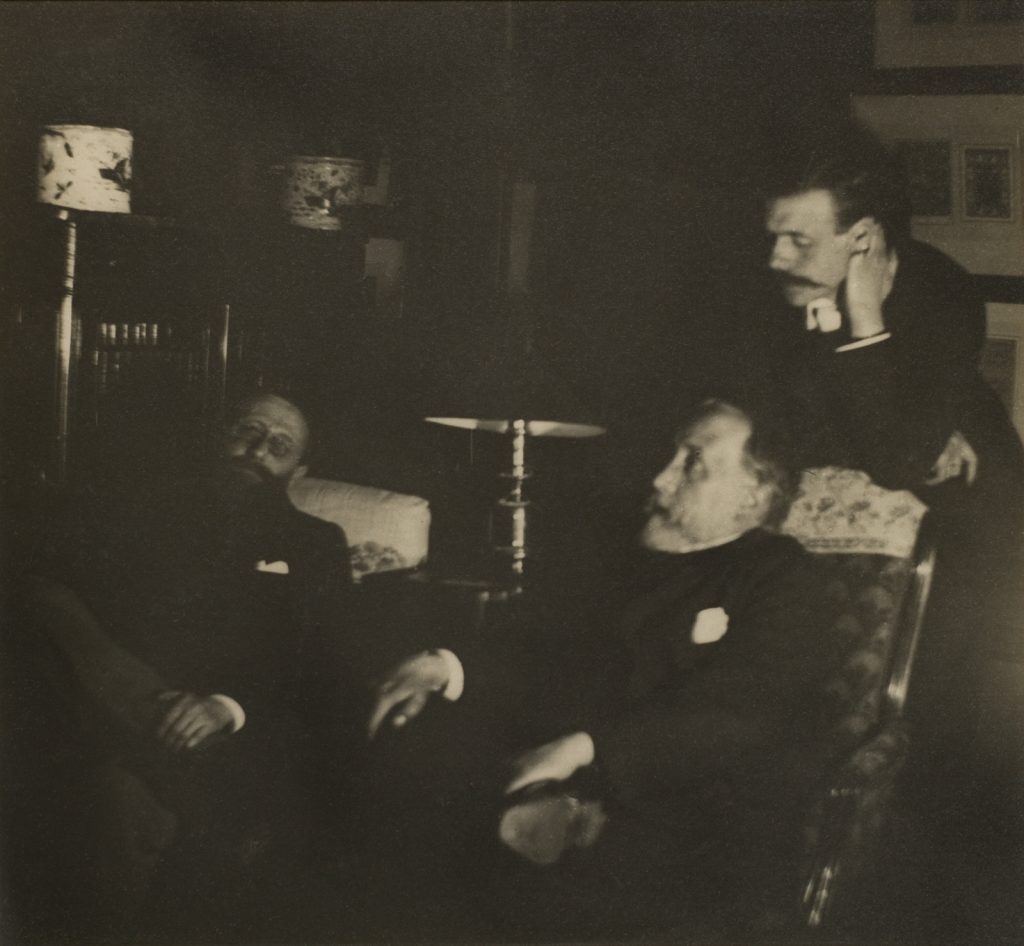
Despite the visual evidence, no direct link connects Degas’s paintings to photographs, although contemporaneous testimonials tell of his embrace of the medium.
However, Degas did describe his use of photographs to Ernest Rouart and their mutual friend Paul Valéry. Rouart later recounted a visit to Degas’s studio, where he was shown a monochromatic canvas in pastel made after a photograph, and the artist’s claim that he was among the first artists to “see what photography could teach the painter-and what the painter must be careful not to learn from it.” (Scharf, Art and Photography, 184)
Degas commonly photographed friends and family in the evenings, after dinner. He would arrange oil lamps and pose his dinner guests as models. “He went back and forth … running from one end of the room to the other with an expression of infinite happiness,” wrote Daniel Halévy, the son of Degas’s close friends Ludovic and Louise Halévy, describing one such evening.
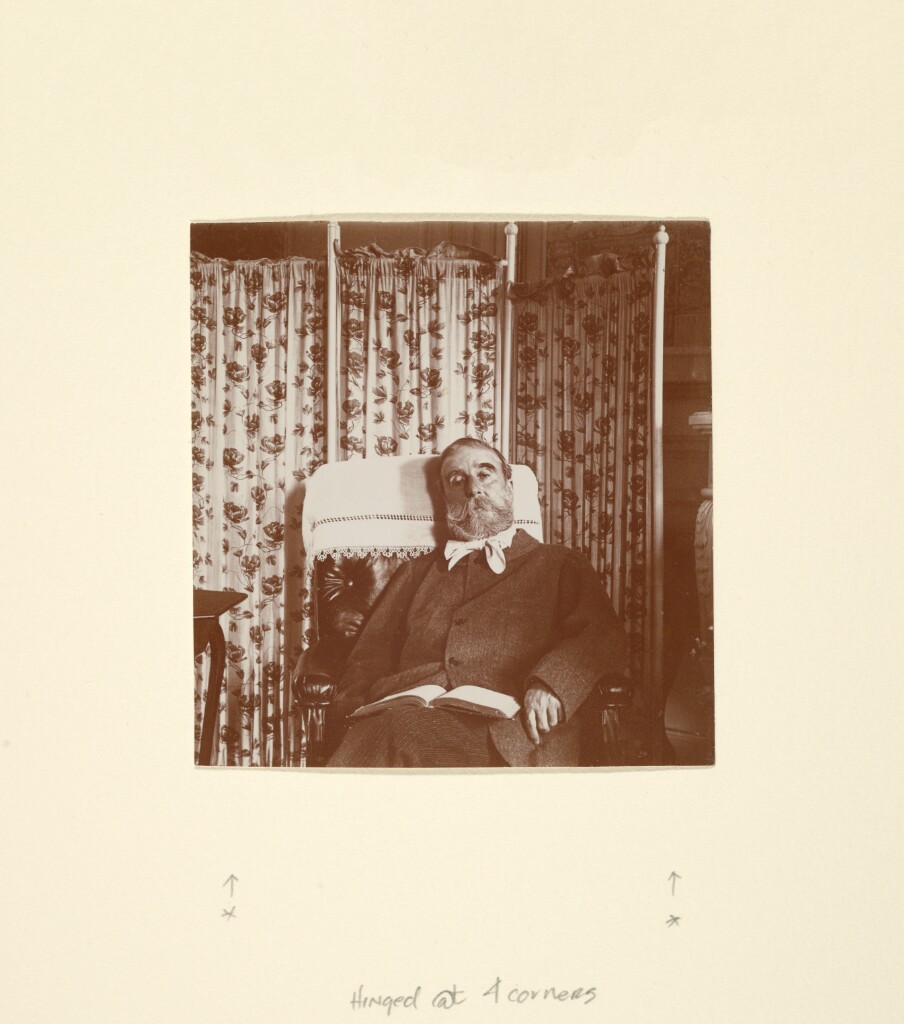
Degas lived near Halévy and dined with his family on Thursday evenings. “We have made him not just an intimate friend but a member of our family, his own being scattered all over the world,” wrote Daniel Halévy. This easy bond is apparent in Degas’s photograph of Halévy relaxing in his home.
In “Positive/Negative: A Note on Degas’s Photographs” (October (Summer 1978): 89-100), Douglas Crimp quotes the full text from Daniel Halévy:
In a passage from a journal kept in his youth, Daniel Halévy relates the events of “a charming dinner party” given on December 29, 1895. Among the guests was Edgar Degas (a regular at the Halévy household until their break over the Dreyfus affair) together with various members of the family, including Jules Taschereau and his daughter Henriette, Madame Niaudet and her daughter Mathilde. After dinner Degas went to get his camera, at which point, Halévy tells us, “the pleasure part of the evening was over,” and “the duty part of the evening began,” while everyone submitted to “Degas’s fierce will, his artist’s ferocity.” During this period in the mid-’90s inviting Degas to dinner meant, it seems, “two hours of military obedience.”
This is Halévy’s description of the posing session that evening:
He [Degas] seated Uncle Jules, Mathilde, and Henriette on the little sofa in front of the piano. He went back and forth in front of them running from one side of the room to the other with an expression of infinite happiness. He moved lamps, changed the reflectors, tried to light the legs by putting a lamp on the floor-to light Uncle Jules’s legs, those famous legs, the slenderest, most supple legs in Paris which Degas always mentions ecstatically.
‘Taschereau,’ he said, ‘hold onto that leg with your right arm, and pull it in there. Then look at that young person beside you. More affectionately-still more-come-come! You can smile so nicely when you want to. And you, Mademoiselle Henriette, bend your head-more-still more. Really bend it. Rest it on your neighbor’s shoulder.” And when she didn’t follow his orders to suit him, he caught her by the nape of the neck and posed her as he wished. He seized hold of Mathilde and turned her face towards her uncle. Then he stepped back and exclaimed happily, ‘That does it.’”
These photographs were taken within a specific timeframe in 1895. By then Degas was in his 50s and he had trouble reading and painting. Progressively, his paintings and prints became increasingly more abstract as his eyesight worsened.
5.8
| Impressionist Portraits of Colleagues and Friends
Nochlin writes in “Impressionist Portraits and the Construction of Modern Identity” that “Impressionist portraits should not on the whole be considered as portraits in the traditional sense, but rather should be seen as part of a broader attempt to reconfigure human identity by means of representation innovation, at times working within, at times transforming, and at times subverting this time-honored and seemingly unproblematic, indeed self-explanatory, pictorial genre.” An analysis of a number of portraits by Bazille, Renoir, and Monet serves to substantiate this view.
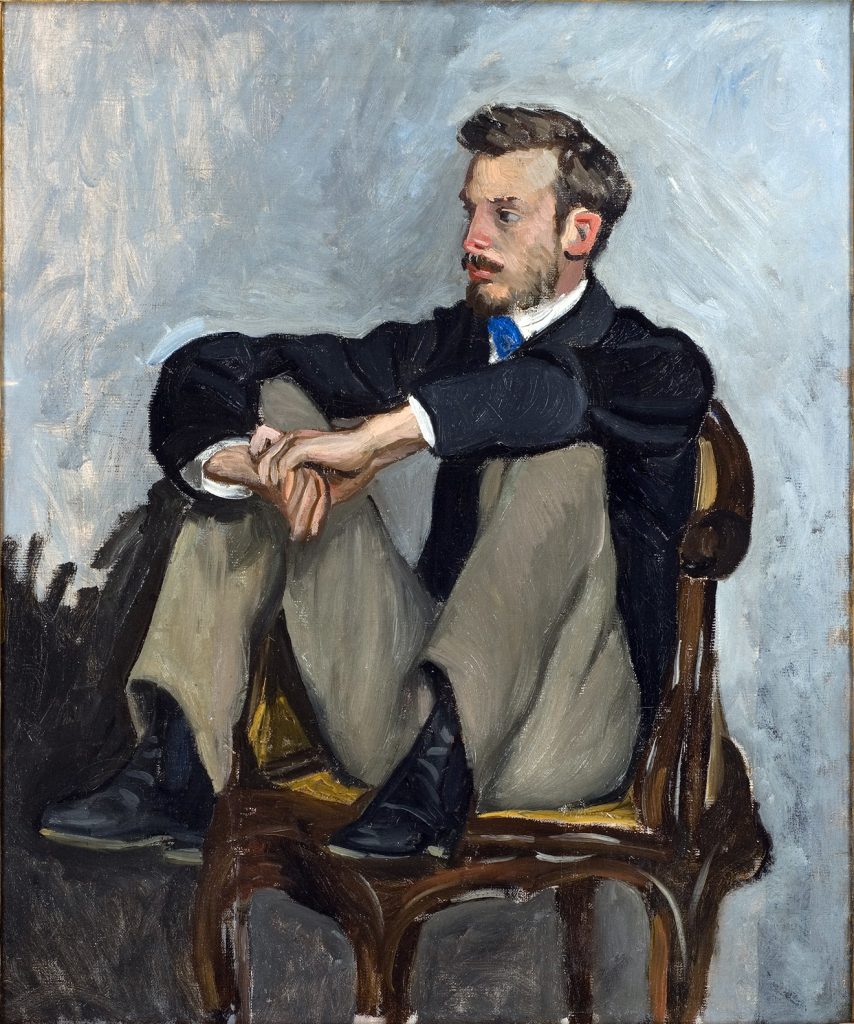
When the young Renoir chose to be portrayed by Bazille with his feet propped up on a chair, and his head turned distractedly in thought, all allusions to formality, or the artful conventions of portrait posing, were radically dismissed.
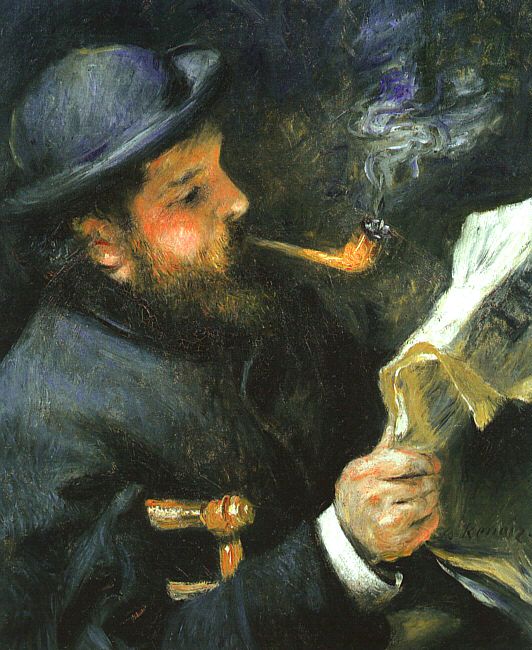
The traditional aspects of portrait painting are equally negated in a close-up image of Claude Monet reading a newspaper by Renoir. The shaggy beard, the smoking pipe, and the rumpled pages of the paper all repudiate the artifice of conventional portraiture, emphasizing an introspective dimension that echoes the self-absorbed activity of reading.
Renoir’s approach in this portrait is consistent with common contemporary portrayals of artists and writers, which present the sitter in a neutral or unspecified setting, relying on expressive, casual “poses” as the signifiers of personality and character.
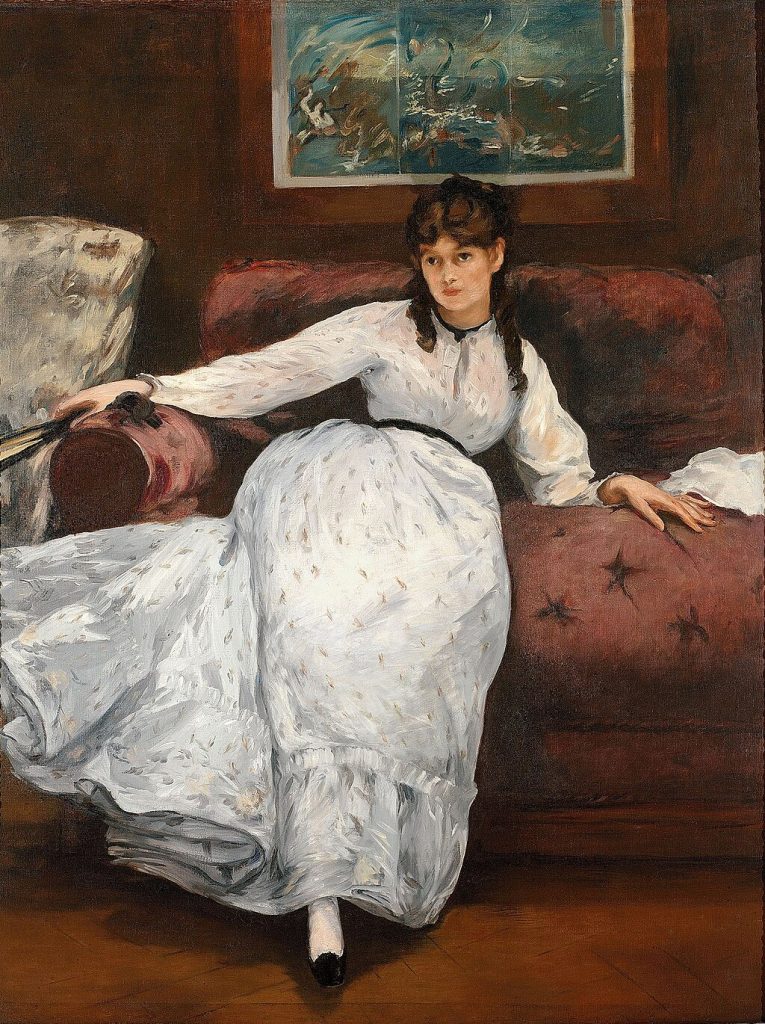
These include Manet’s Repose, a portrait of Berthe Morisot,

Degas’s Portrait of Mary Cassatt,
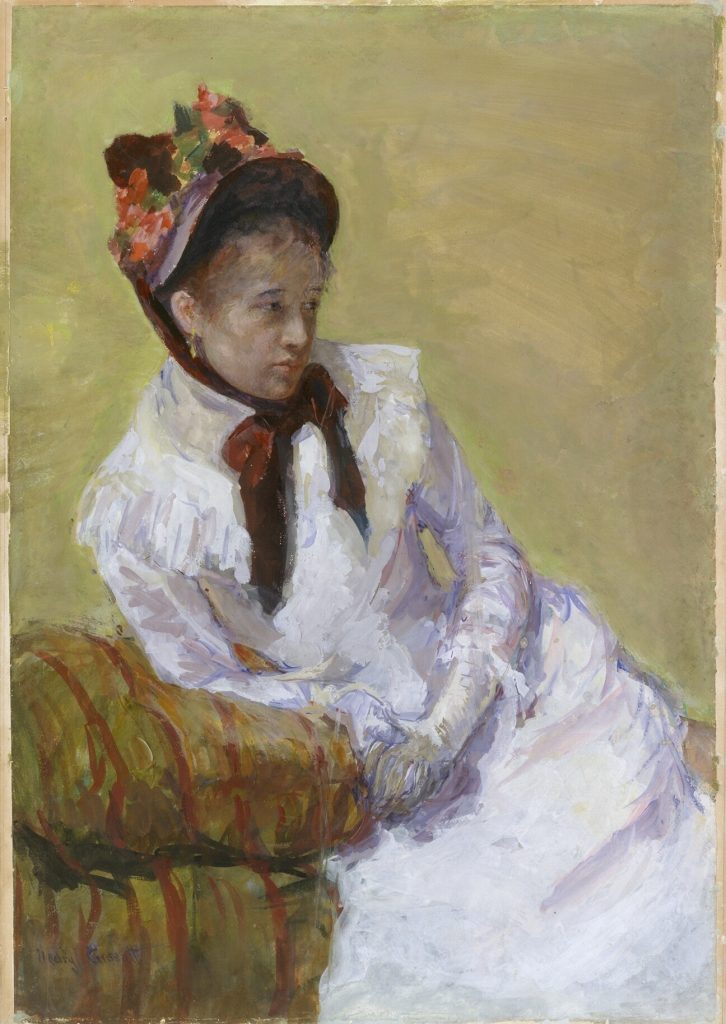
and Cassatt’s 1878 Self-Portrait.
Margaret Fitzgerald Farr, in “Impressionist Portraiture: A Study in Context and Meaning” (PhD diss., University of North Carolina at Chapel Hill, 1992), compares these portraits:
The poses in each of these portraits is different, but all are casual: seated, with legs drawn up; seated, almost reclining, with one leg tucked underneath; leaning forward; and leaning on a piece of furniture. Although each of these portraits depicts an artist, none, strictly speaking, represents their sitter as an artist. They neither emphasize the head as the source of the powers of invention nor include professional attributes. In each, the backgrounds are vague or minimized, enhancing the figure. But what is most striking about these poses is their absolute repudiation of artful, or even polite, pose.
For the Impressionist portraitist of the 1860s and 1870s, the question was not merely that of liberating portraiture from strict mimesis but also of overturning the conventions of the portrait pose. The strictures governing the portrait pose were historically connected to decorum and status. Furthermore, the portrait tradition, which assumed identity as dignified and morally upright, was pictorially translated into extreme posture alignment.
The casual poses the artists adopted for one another in works such as Renoir’s Claude Monet Reading or Degas’s Mary Cassatt were a means of asserting their youth, rebellious ideas, or friendship. Backgrounds were empty, abstracted or minimized to fix attention on the person. These portraits shunned the social etiquette of proper posture by repudiating the artful and poised image.
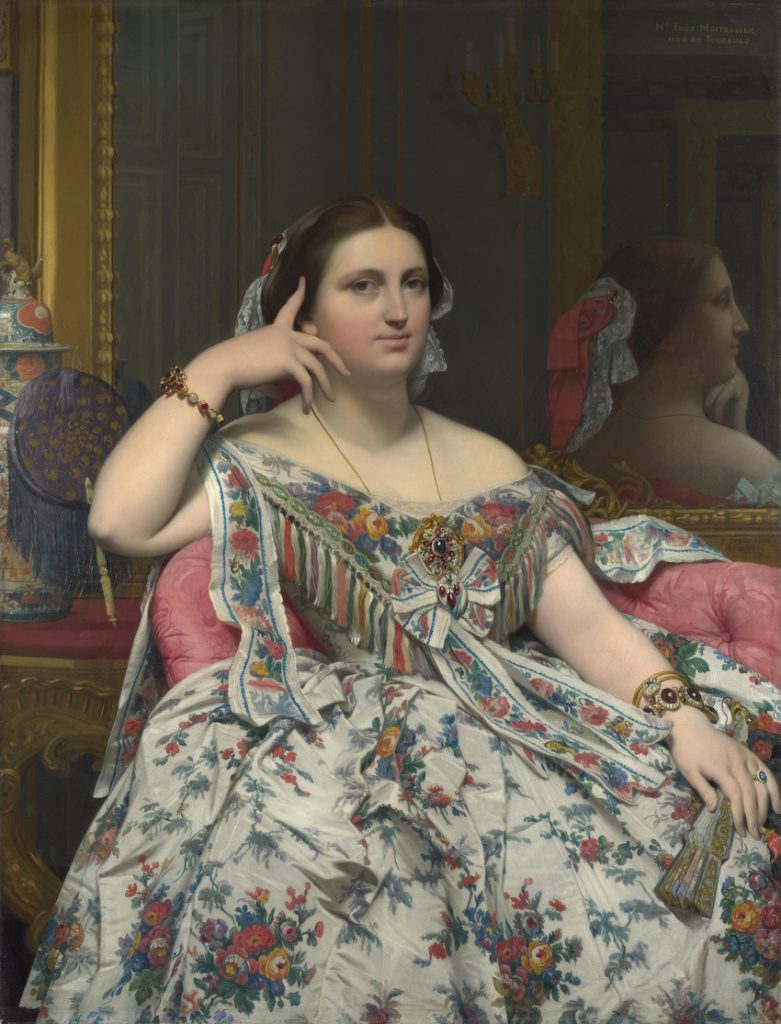
This represented a startling departure from the decorousness of traditional portraiture, which sought to elevate the haute bourgeoisie through controlled representational codes.
For example, an idealized neoclassical portrait of Madame Moitessier by Jean-Auguste-Dominique Ingres depicts the well-to-do lady dressed in fashionable era garments. The opulent flower-patterned dress she wears, the sparking diamonds, amethysts, garnets and opals on her neck and arms, the satin couch on which she sits and the Chinese jar behind her show off her wealth as the wife of the wealthy banker and lace merchant Sigisbert Moitessier.
The bourgeoisie, like Moitessier, had come to dominate politics and culture after the fall of the Ancien Regime, gaining power through commercial and industrial initiatives. The rise of the bourgeoisie was echoed by their rising demand for family portraits, which had been unavailable to them as lavish reflections of their social status before the 19th century.
Impressionist artists were well-familiar with the society portrait, from pose to props, as an expression of wealth and power, and with some exceptions (Renoir, for example), chose to paint friends and relatives instead of accepting portrait commissions. They focused on everyday events and activities, whether in domestic interiors, public spaces, or set out of doors, and approached their subjects in a non-idealizing way to establish a new form of portraiture.
5.9
| Frédéric Bazille
In “Impressionist Portraiture,” Farr compares two self-portraits by Bazille that “illustrate the changes wrought in the latter part of the decade as the Impressionists relied increasingly on the sincere and unmediated depiction of their visual sensations.”
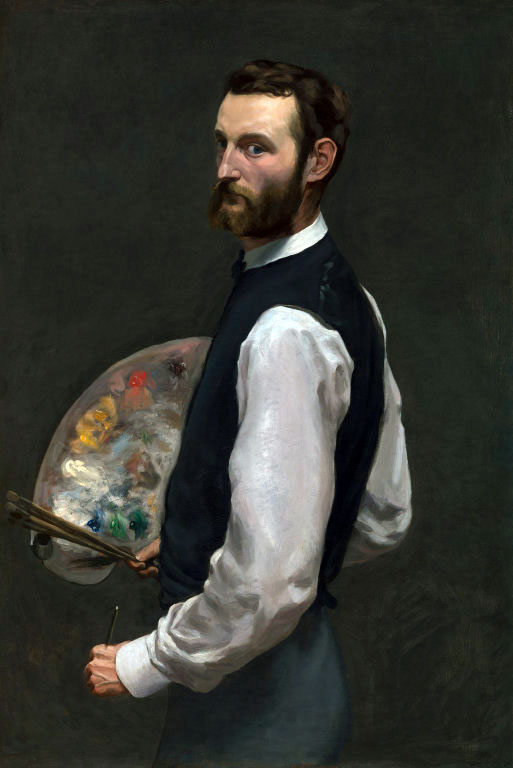
Farr writes:
Bazille’s self-portrait of 1865 presents the artist as painter, indeed as active in his own self-depiction since he holds a palette and brushes and turns toward the picture plane as towards a mirror. The way the artist holds the brush towards the surface confirms this active role. Bazille leaves the background undefined, but delineates his own clothing to the extent that we may describe him as bourgeois gentleman painter. He modulates light and shadow to convey three-dimensional form, seen particularly in his head and left arm. The brushstrokes and color are mostly uniform and muted throughout, with the warmest colors applied to the flesh tones of the head and hands. The artist’s palette acts as the notable exception to this schema, with saturated red, yellow, and green, and white liberally applied to much of the palette’s surface. Thus, the color and brushstrokes represented as being on the palette appear markedly different from the other areas of the painting with respect to their coloristic and tactile properties.
Just as the brushes and palette are accessories denoting the artist’s profession, the represented pictorial difference between the painted palette and the remainder of the canvas connotes the painting process. Bazille depicts two stages through which the artist transforms paint on canvas (represented here by the paint on the depicted palette, already one step removed from simply paint on canvas) into the mimetic illusion of a figure placed against a muted background. However, the manual means by which this transformation is effected is hidden (although its maker is illusionistically present); the viewer is expected to make the imaginative leap from touches of color to finished form, but willingly does so since Bazille’s clues all operate within the mimetic realm governed by contoured shapes and modeled forms.
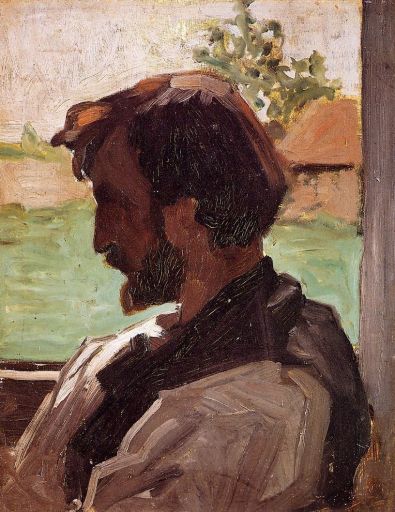
No such clarity or implied progression orders Bazille’s Self-Portrait at Saint-Sauveur dating three years later. The artist presents himself in profile, an unusual pose in this genre, and one which precludes the viewer’s engagement or identification with the subject.
Furthermore, the painter obscures his own features through a contre-jour effect produced by the brightness of the landscape situated behind the figure … Unlike the spatial effect created in the earlier self-portrait by placing the half-length figure at some distance from the picture plane, here the bust-length figure fills the foreground space, again precluding the entry of the spectator. The left arm, modeled with light and shadow in the earlier painting to convey the figure’s three-dimensionality, appears in the later portrait as a series of visible, directional strokes that remain assertively on the planar surface of the canvas rather than suggesting the turning of forms in space.
The ambiguity of the viewer’s position and the subject’s expression is enhanced by positioning the artist against a landscape background. Is this a real landscape with Bazille sitting before a window, or is it a painted landscape? The contre-jour lighting effect would seem to indicate the former, although a light horizontal stroke adjacent to his shoulder perhaps delineates a frame. The brushstrokes within the figure are set down one next to another without transition just as the figure is situated against its ground. Competition between figure and ground arises from the lighter tones of the landscape drawing the viewer’s eye back, and from the visual connection made between Bazille’s hair and the background foliage which result from the tactile fusion between the two.
Consequently, in this 1868 painting Bazille abrogates the implied narrative of the earlier self-portrait by valorizing touch over other pictorial devices. Touch suggests forms, or at least their tactility, their movement; it also unifies the surface of the canvas. In short, this later self-portrait materializes the very manual processes implied, but not depicted, in the earlier work—the placement of marks on the canvas, the movement of the artist’s hand, the sometimes awkward fashioning of forms (as in the right shoulder).
While it may be argued that the differences between these two works have to do with their relative states of completion, I contend that the terrain Bazille charted in the second work came to be pursued by many of the Impressionists in their portraits (and possibly would have been continued by Bazille himself, were it not for his death during the Franco-Prussian War).
This terrain is marked by a predominant emphasis upon the means and processes of representation, and most significantly for the portrait genre, by an emphasis on self-expression at the expense of depiction. Instead of implying a narrative of artistic practice that takes place outside of the painting, as Bazille’s early self-portrait demonstrates, many Impressionist portraits exhibit that mediating, heretofore presumed but unrepresented stage of execution. The earlier work posits the artist as transforming raw materials along a predictable course towards the end of illusionism, the later one as exploiting these materials toward no preconceived end. The earlier painting suggests timelessness (meaning that the caught moment extends into infinite time), whereas the later image connotes process and therefore “real” time.
Bazille’s paintings demonstrate how Impressionist self-portraits were embedded within the history of self-portraiture, reflecting genre precedents while instilling new imagery, poses, and composition to communicate their identities.
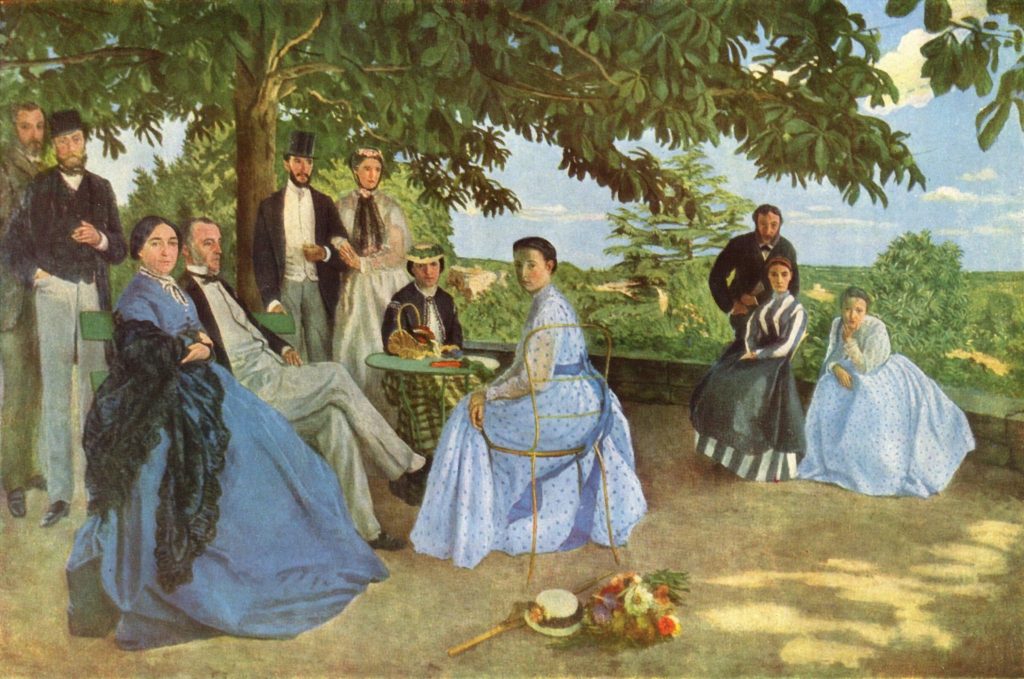
A comparison of two group portraits by Bazille further reveals an extended meditation on the nature of the genre and how, as a portraitist, Bazille was determined to negotiate a very different terrain from that of his predecessors.
Réunion de famille, also called Portraits de famille (Family Reunion also called Family Portraits), shows Bazille’s extended family gathered at the family’s country estate at Méric, near Montpellier, a few days before or after the wedding of his brother Frédéric.
Bazille’s relatives are seated on a terrace on a sunny day. A large tree hovers above them, its spreading foliage filtering the sunlight and creating shadows that inspire an exploration of the effects of light and shadow on the people’s faces and clothing, the landscape and the sky. The family is posed rather stiffly, staring ahead as if into a camera lens. There is no interaction between the ten people or Bazille himself, who positions himself at the far left as if reluctant to include himself in the painting.
Dianne Pitman in Bazille: Purity, Pose and Painting in the 1860s (Pennsylvania State University Press, 1998) critiques the notion that Bazille’s Family Reunion closely resembles André-Adolphe-Eugène Disdéri’s carte- de-visite portraits.
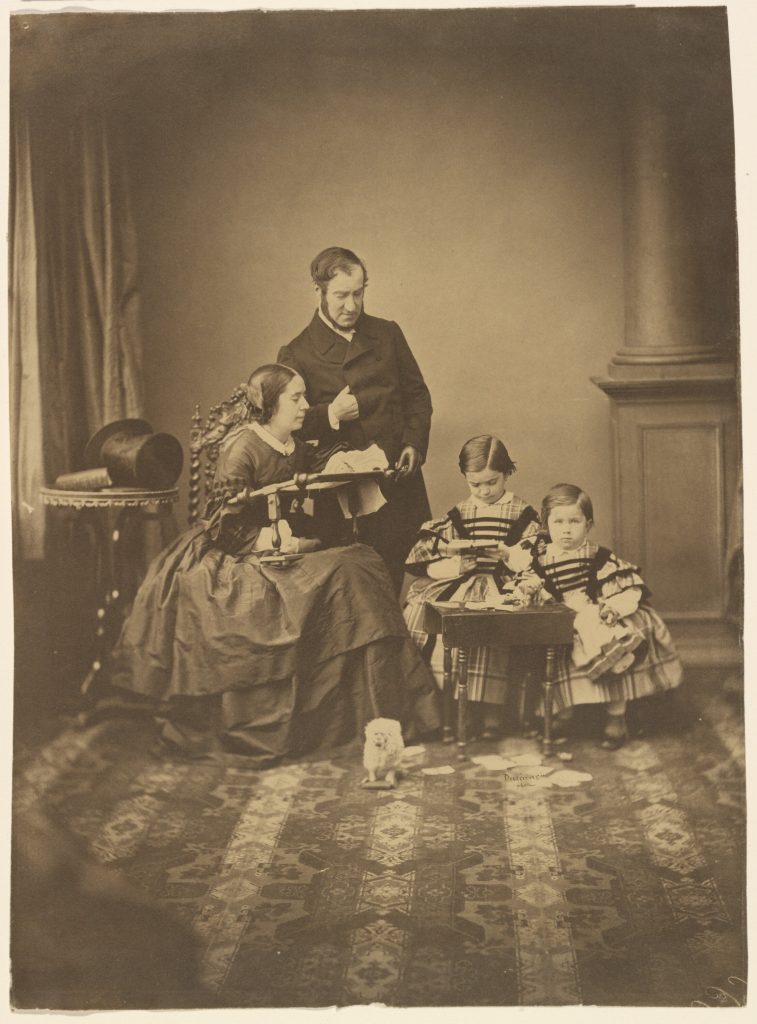
Bazille’s Family Gathering, I propose, can be seen as succeeding where Disdéri himself, limited by the photographic materials and practices of the time, was bound to fail. Bazille creates a group portrait, that, in Disdéri’s terms, avoid both stiffness and dramatic pretense. He seems to accomplish this by the means Disdéri specified, by simultaneously allowing the sitters a sustained period of time in which to relax and be themselves, and providing some narrative structure, a mild unifying action that brings them together in a single moment.
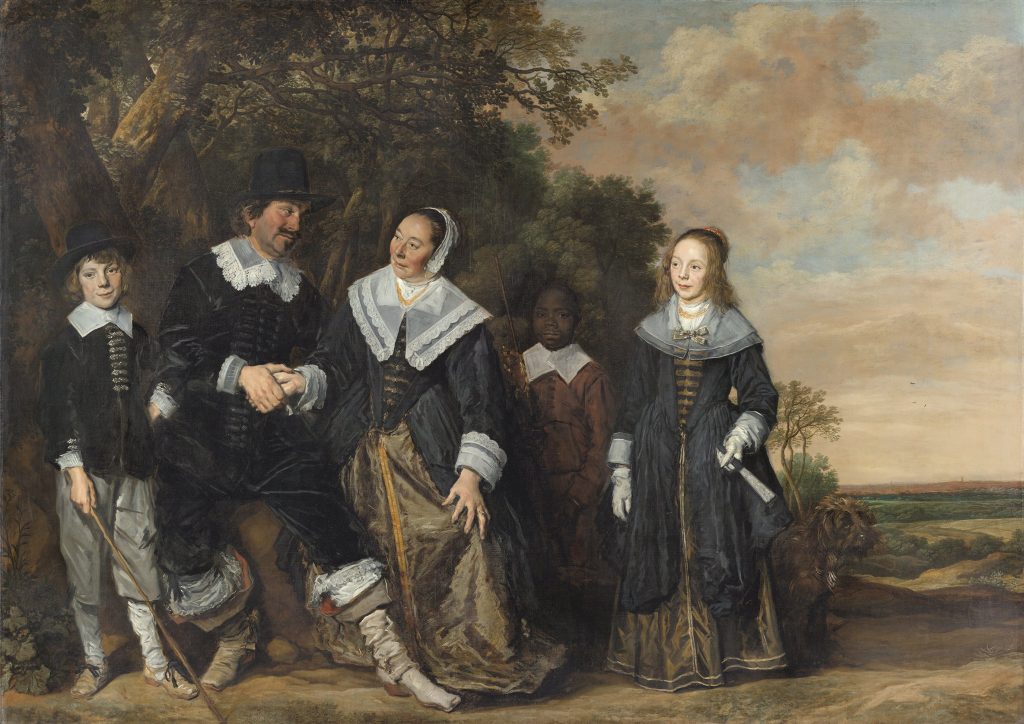
Pitman emphasizes the similarity of Bazille’s group portrait with precedents painted before the invention of photography, such as the group images portrayed by Frans Hals,
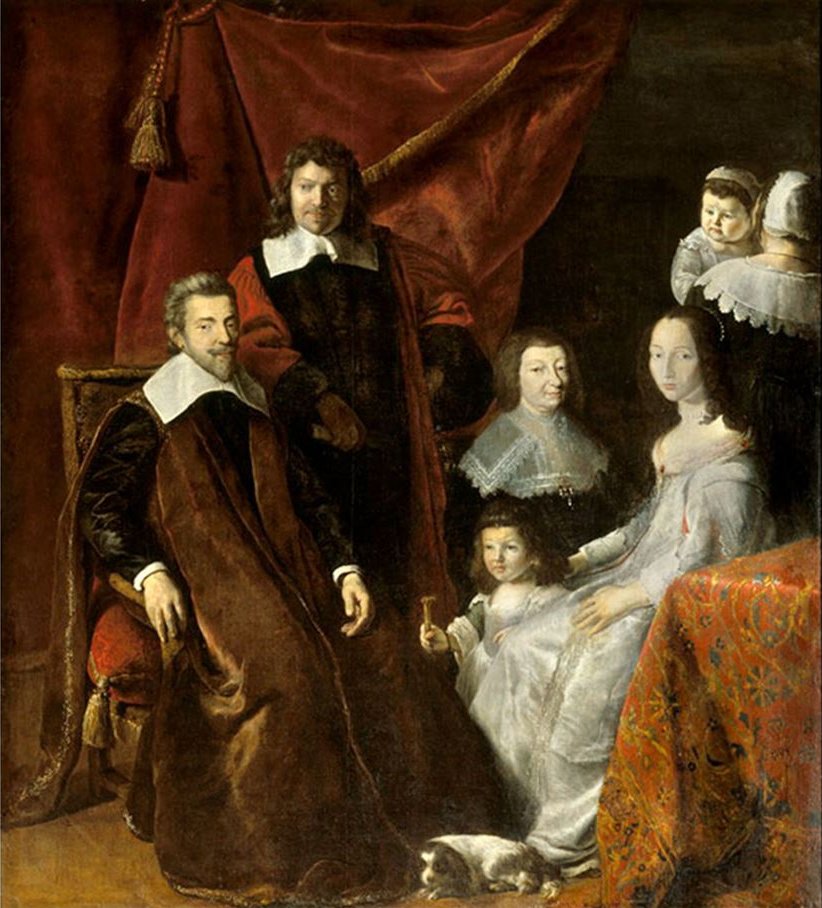
and Philippe de Champaigne, that served as prototypes for his contemporary Fantin-Latour.
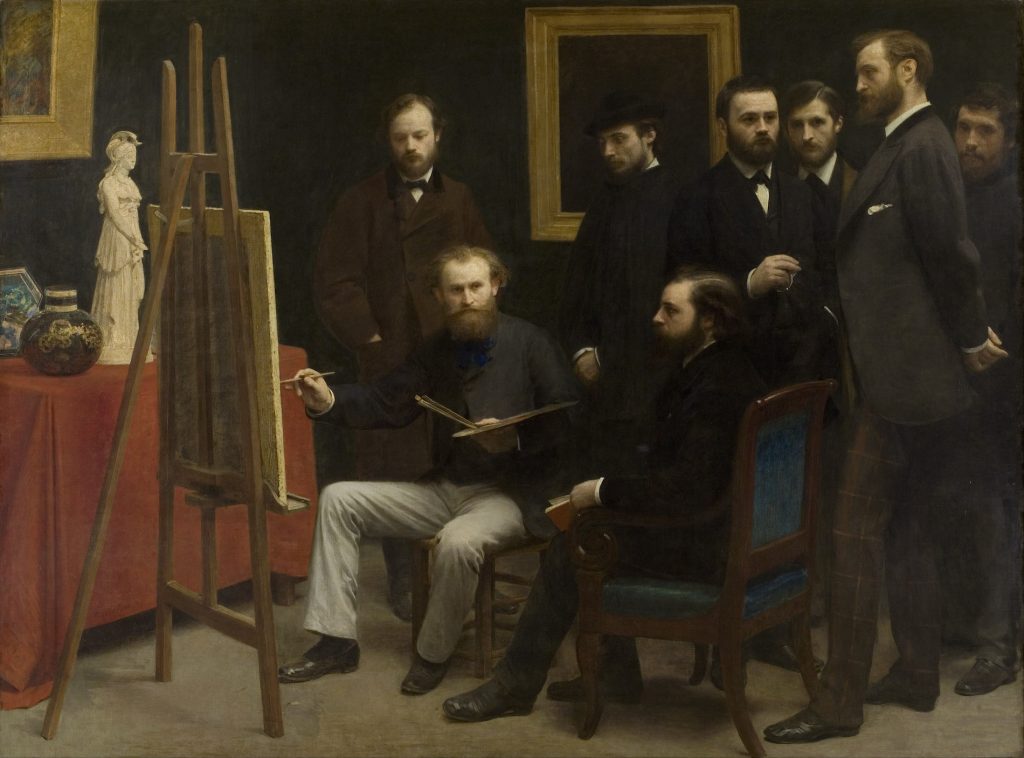
Fantin-Latour’s A Studio at Les Batignolles depicts a group of Impressionist painters and others of the Batignolles Group, including Scholderer, Renoir, Astruc, Zola, Maitre, Bazille and Monet. They are gathered around Manet, who is seated at his easel painting a portrait of Astruc. It is a deliberate and solemn representation. In their demeanour and dress, the artists convey a sense of decorum meant to belie the negative bohemian characterization bestowed on them by their critics. Dressed in bourgeois attire, they claim respectability, despite having broken with the academic status quo. In this painting, Fantin-Latour sought to legitimize those artists discriminated against in official circles.
Fantin-Latour became prominent in the era of Impressionism and had personal and professional connections to the group, but he was not an Impressionist. He preferred to exhibit at the Salon rather than with the group. Three genres of painting marked his career: portraiture, still-life painting, and imaginative or mythological scenes. He received the most critical attention for his group portraits of renowned artists, writers, and musicians.
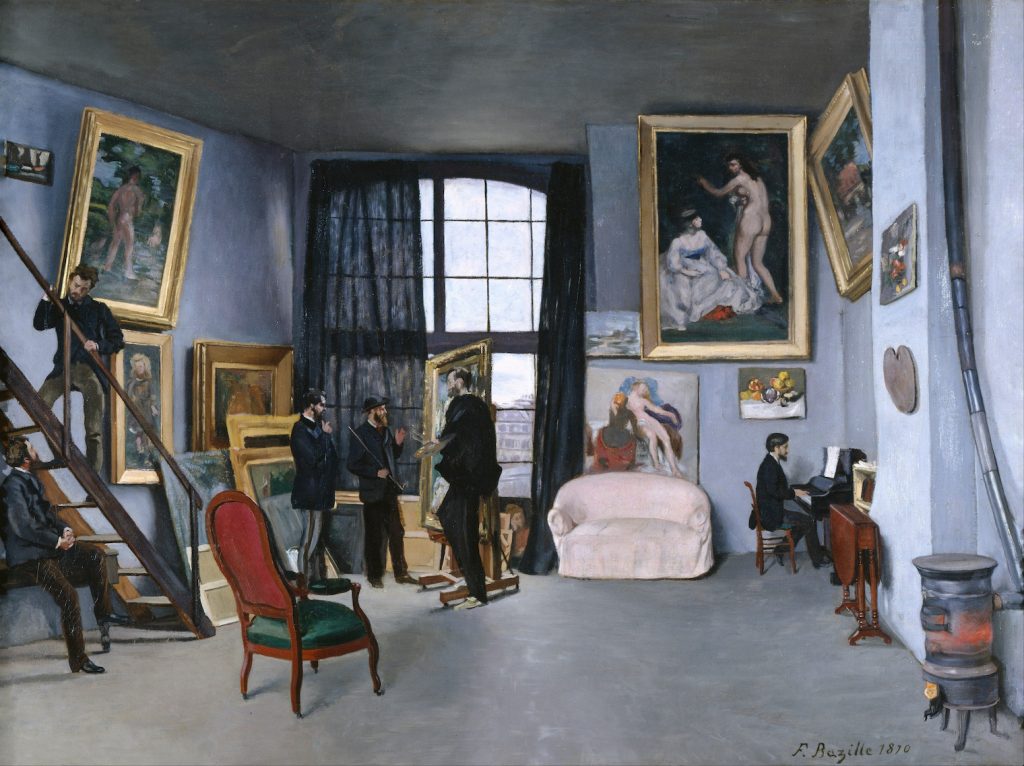
In contrast to the rigid conventionality of Fantin-Latour’s A Studio at Les Batignolles, Bazille’s The Studio in the Rue La Condamine is unpretentious and informal. The painting depicts his atelier, which was typical of the Batignolles district in the 1870s: spacious and lit by bay windows facing north, maintaining constant light throughout the day. A sense of spontaneity permeates the scene. The figures are not posed, nor are the objects arranged in a contrived manner. Bazille, Manet and Astruc are gathered around his canvas, framed in readiness for the Salon. Zola and Monet are shown in conversation on the left, and Sisley, seen playing the piano, reinforces the notion of the studio as a social space.
The painting reads as a spontaneous snapshot. But it is a carefully constructed image meant to convey aesthetic, moral, and social values visually. Implied in the topos of the artist’s studio is a subtext that claims special status for the artists and for art’s distinctive role in society. In this way, images of artists’ ateliers offered opportunities to show off the reality and mythology of art in the making and to underscore the notion of the studio as a locus of creativity. This was also where the fantasized identity of the artist was constructed and, as a social space, where ideas were conceived and exchanged.
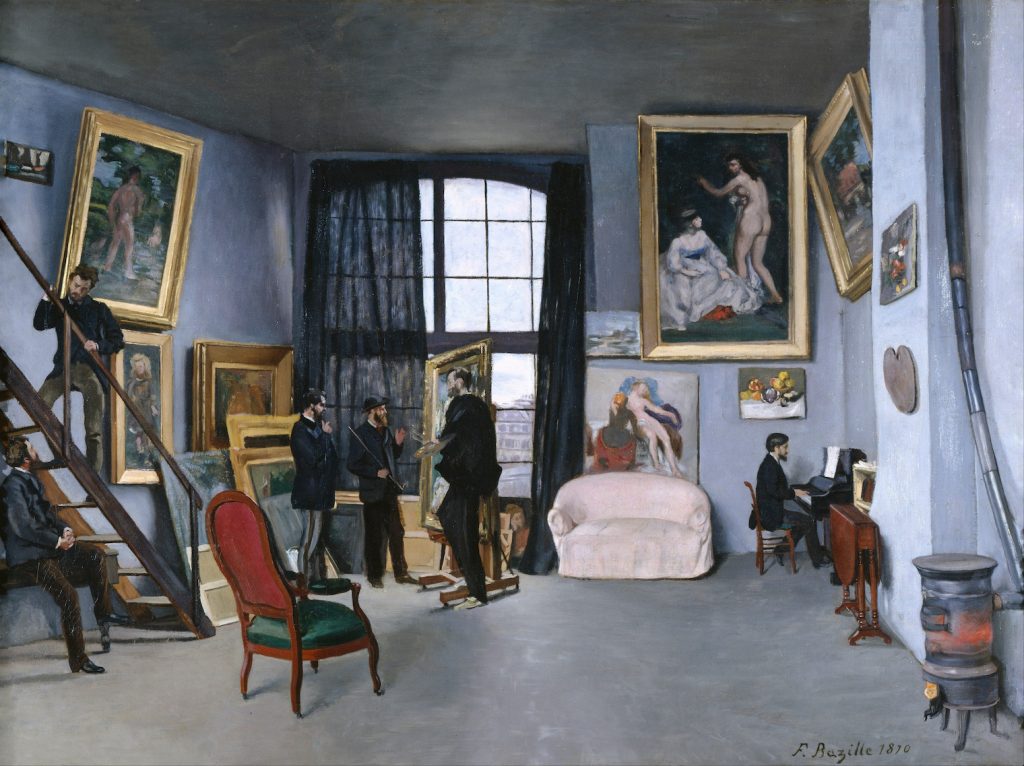
In “Realist Quandaries: Posing Professional and Proprietary Models in the 1860s” (Art Bulletin 89, no. 2 (June 2007): 239-26), Susan Waller considers Bazille’s artist’s studio as a “Realist atelier”:
During the period when Bazille, Renoir, Monet, and Manet were posing for Fantin-Latour, Bazille began his own painting of a Realist atelier, Studio in the Rue de La Condamine…. Its scale is smaller, consistent with the more informal grouping of the figures and with Bazille’s more modest ambitions for the painting: he never planned to send it to the Salon, although he considered exhibiting it in Montpellier, not far from his family home in Méric. This shift from the studio as a working space to the studio as a social space has been seen as consistent with the Impressionists’ preference for themes of bourgeois leisure. A close reading of Bazille’s painting, though, reveals that it is simultaneously more programmatic and conflicted than this characterization indicates. The image is programmatic in that it serves as a manifesto of the younger generation’s aesthetic concerns. The paintings by Bazille and Renoir that Bazille introduces prominently on the studio walls assert the group’s commitment to abandoning the studio and the posed model for figures arranged casually in natural daylight.
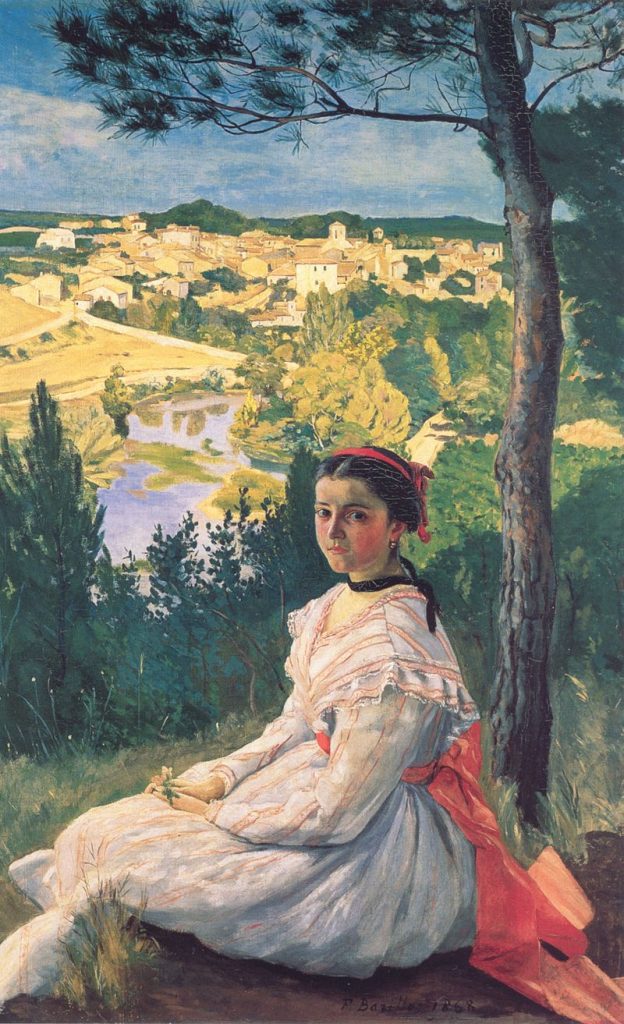
The work on the easel set next to the window, which is the focus of Monet’s, Manet’s, and Bazille’s attention, is Bazille’s View of the Village. Of this work, which depicts a young girl in a pink dress seated under a tree on a hillside was also begun at Méric. Morisot said, when it was exhibited at the Salon of 1869: “There is much light and sun in it. He has tried to do what we have so often attempted, a figure in the outdoor light, and this time he has been successful.”
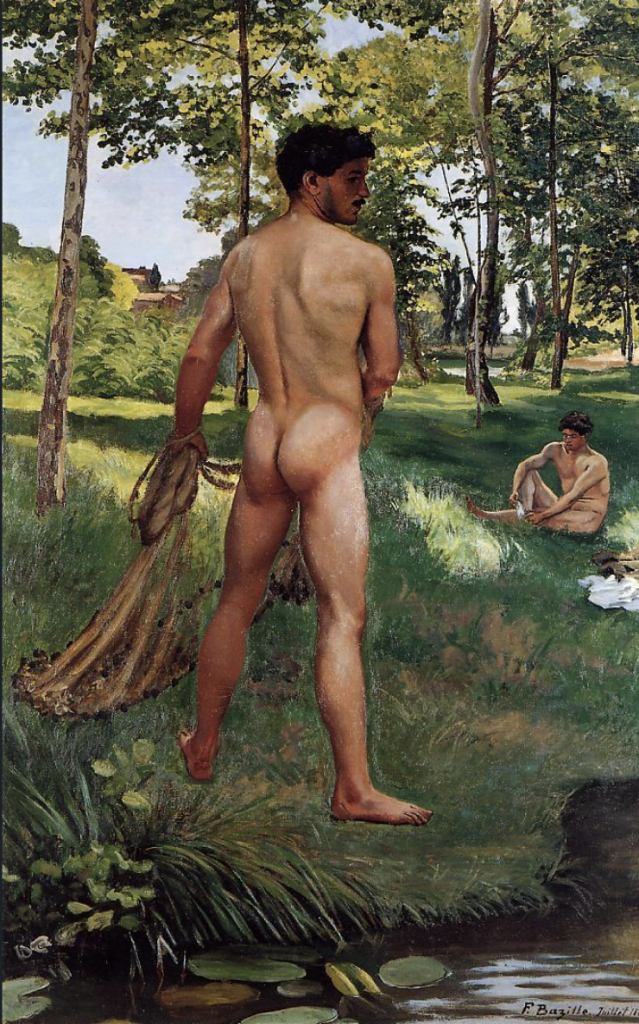
The paintings on the wall also signal the artists’ distance from official institutions. Two of the most prominent works, Renoir’s 1866 painting of two women and Bazille’s fisherman, had been rejected from the Salon.
The composition also asserts the primacy of their innovative praxis. By representing Manet visiting his studio and admiring his plein air canvas, Bazille reverses the intergenerational dynamic of Fantin’s painting: Manet takes the role of the visitor, whether patron or monarch, that is a traditional motif in atelier paintings. In fact, Manet seems to have genuinely appreciated Bazille’s work, since he graciously painted Bazille’s figure.
Bazille, arguably one of the most important exponents of the new painting style that inspired Impressionism, was killed in the Franco-Prussian War four years before the first Impressionist exhibition. He was twenty-eight years old when he joined a Zouave regiment in August 1870, a month after the outbreak of the War. He died on the battlefield on November 28.
5.10
| Pierre-Auguste Renoir and the Group Portrait
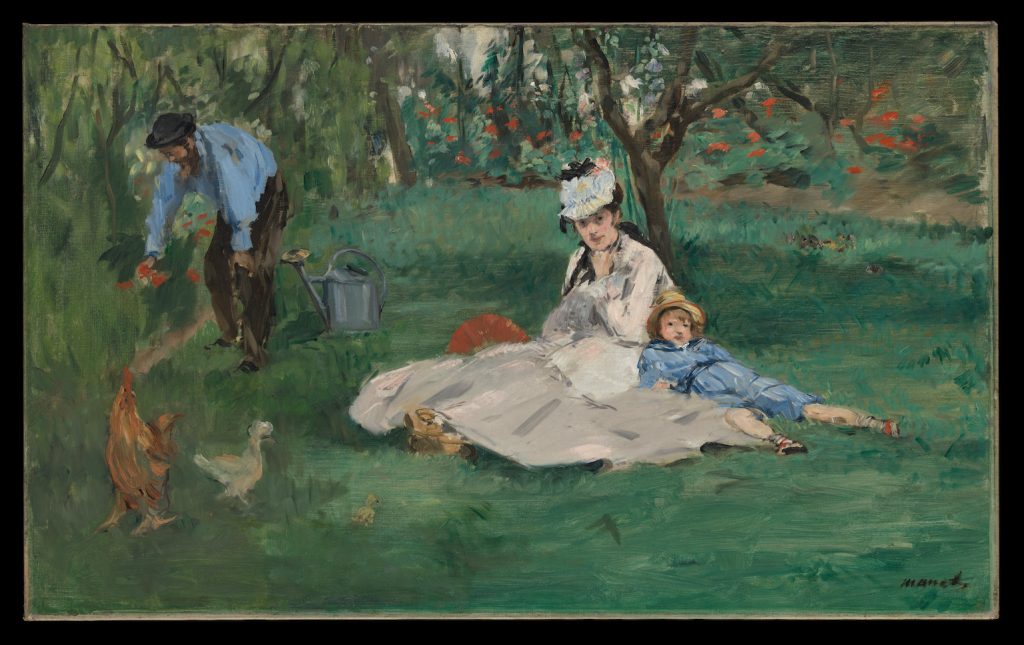
In July and August of 1874, Manet vacationed at his family’s house in Gennevilliers, across the Seine from Monet at Argenteuil. The two artists often saw each other that summer, and Renoir occasionally visited.
Manet’s portrait of the Monet family enjoying a lazy afternoon in the countryside portrays the artist tending to his garden while Camille and her son lounge on the grass nearby. The scene is unpretentious, filled with naturalistic elements, and spontaneously executed, typifying the Impressionist approach to portraiture. Allusions to family dynamics and country life are reiterated by including a rooster, a mother hen, and a chick in the left foreground.
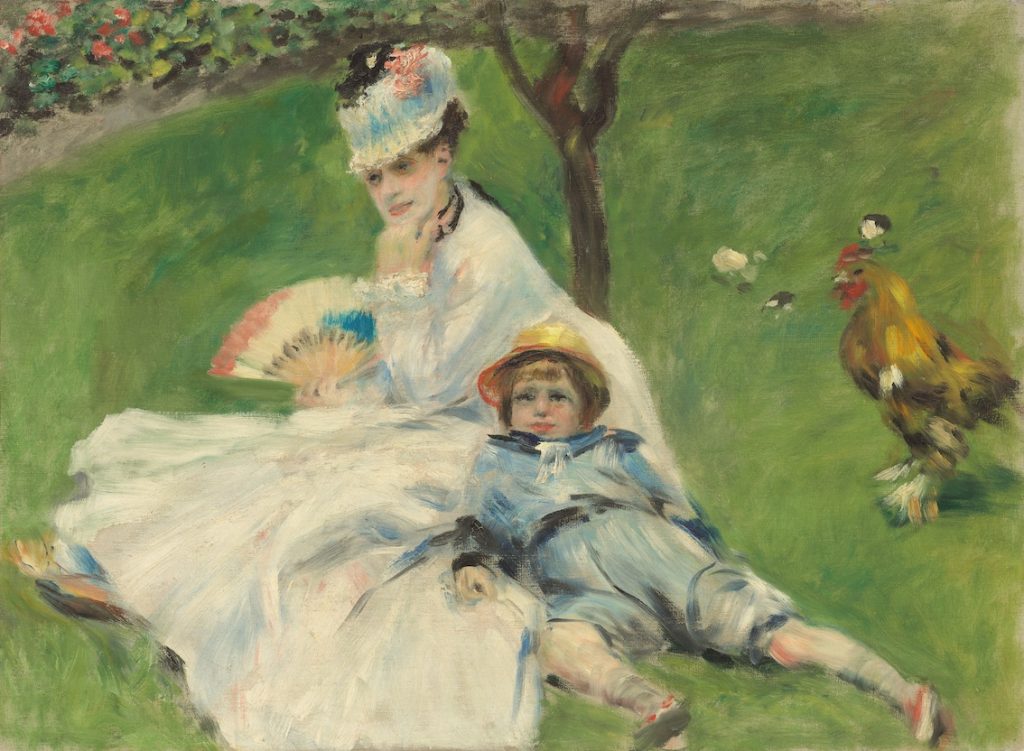
Renoir, who arrived as Manet was beginning to work, borrowed paint, brushes, and canvas, positioned himself next to Manet and proceeded to paint Madame Monet and Her Son. The simultaneously created paintings are distinctly different. While Manet’s artwork offers a generalized view of the family enjoying a laidback summer’s day, Renoir’s telescopic focus on mother, child and hen offers a more personalized portrait.
Farr, in “Impressionist Portraiture,” compares the two paintings:
Unlike Manet’s more unified, pyramidal grouping of the two and the repetition of curving shapes in all three figures that serves, despite the spatial separation, to unite them, Renoir’s composition emphasizes the angularity of both figures, particularly Jean’s awkward pose, so that the two appear more distinctly dissimilar … In Manet’s painting, the informal poses make sense within the context of the family at leisure in their garden. On the other hand, by isolating the figures, Renoir calls attention to the pose as indicative of the sitter’s state of mind, their boredom or lassitude.
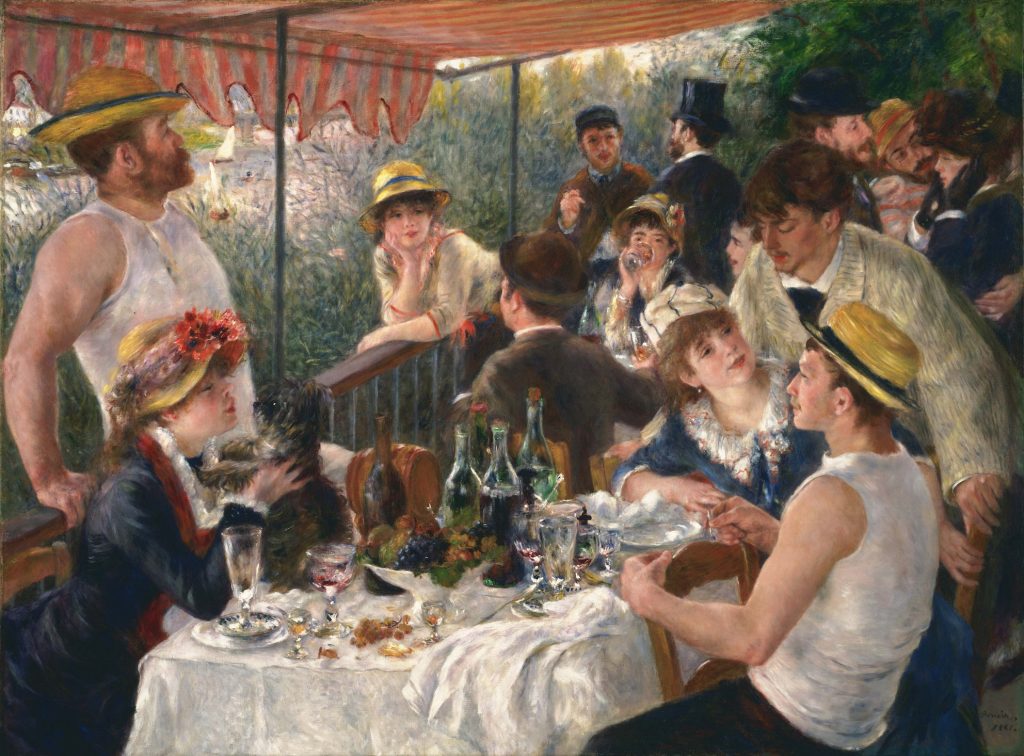
Renoir’s interest in the particularities of individuals within a group portrait is perhaps more noticeable in the many images of social gatherings he painted. Luncheon of the Boating Party, which celebrates the simple pleasures of modern life, shows a large party of friends lunching on a boat. The mood is casual and convivial. The scene is a veritable who’s who of Renoir’s entourage. Each of them, including Ellen Andree, the actress and model, smartly dressed, salubrious and flirtatious, transmits an essential individuality, despite Renoir’s facile, painterly rendering. The persona of the group as a whole is articulated through the mannerisms of each of the group, including Aline Charigot, Renoir’s future wife, the wealthy and gifted painter Gustave Caillebotte, bare-armed, straw-hatted and full of masculine sex appeal in the right foreground, and the attractive Alphonse Fournaise Jr., son of the restaurant owner leaning back on the railing to the left dressed in the same casual bare-armed rower’s outfit worn by Caillebotte.
It is a group portrait of friendship and the easy pleasures of food, wine, flirtation, and conversation.
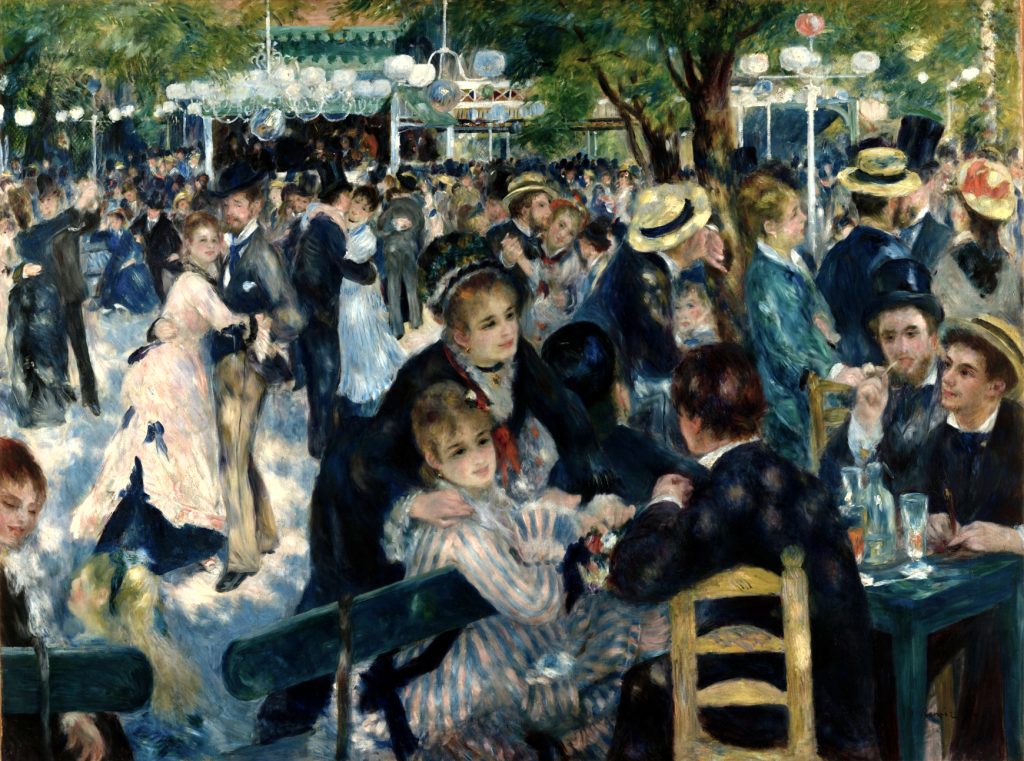
Renoir’s Dance at Le Moulin de la Galette may also be regarded as a group portrait, a snapshot of an everyday event in fashionable Montmartre where the Moulin de la Galette was located. Here, in the courtyard, society gathered to dance, drink, and dine.
The significance of the setting at Montmartre, a place associated with radical or anarchist political tendencies, has been analyzed by Nicolas Kenny in“Je Cherche Fortune: Identity, Counterculture, and Profit in Fin-de-siècle Montmartre” (Urban History Review / Revue d’histoire urbaine 32, no. 2 (Spring 2004): 21-32):
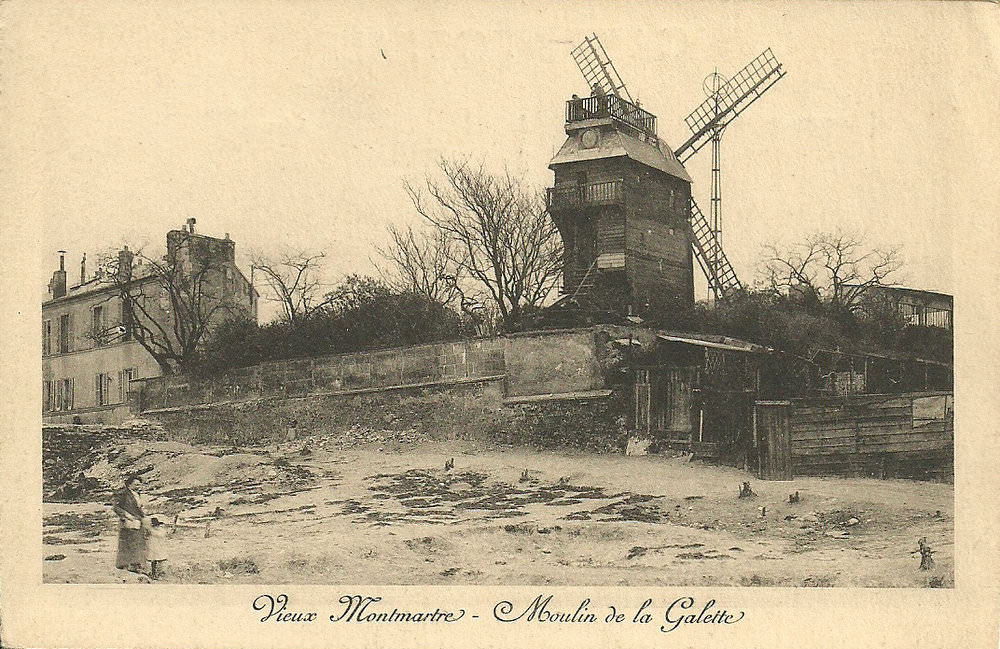
Montmartre’s location, until 1860, outside of the city’s excise tax limits had already contributed to its festive reputation, and its cheap wine made it a favoured Sunday afternoon destination for many workers and petit bourgeois alike. In establishments like the Moulin de la Galette, made famous by painters like Renoir and Toulouse-Lautrec, workers and their families sought diversion from the stress of daily life while artists and writers discussed and elaborated upon the countercultural ideas that shaped both their sense of self and their challenge to hegemonic forms of artistic and literary expression. Fin-de-siècle consumers of popular entertainment became increasingly curious about what was happening far atop that mysterious hill, and amusement venues of all sorts — from the dingiest, most ephemeral cabarets to the still-successful Moulin Rouge.
…
Thirty-five years earlier, a poet and art critic with whom Montmartre’s bohemians were very familiar had urged that writers and artists open their eyes to the “spectacle de la vie élégante et des milliers d’existances flottantes qui circulent dans les souterrains d’une grande ville – criminels et filles entretenues.” Charles Baudelaire’s influential argument that being modern entailed finding beauty in an urban underworld of prostitutes and criminals helps relate Montmartre’s countercultural personality to the artists’ and poets’ collective yet personal quest for self-understanding.
Renoir approached the multidimensional subject by opting for a larger-than-average canvas (over four-by-six feet) and separating the crowded scene into several vignettes that were unified through the formal elements of fluttering dappled light, bright colour and busy brushwork. In this way, the artist could create personal portrait impressions while capturing the overall sense of a festive urban gathering.
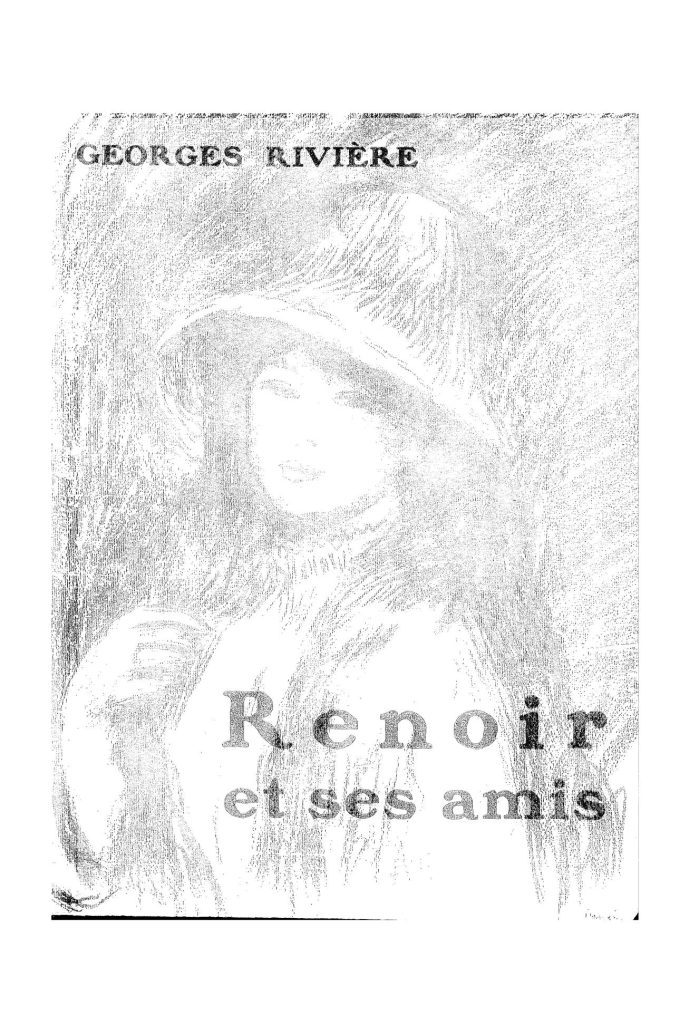
The portraits in Dance at Le Moulin de la Galette were identified by Georges Rivière in his memoir Renoir et ses amis (Paris: H. Floury, 1921). Rivière published a short-lived journal, L’Impressionisme in support of the movement, in which he praised Renoir for his unique ability to capture the spirit of Parisian life.
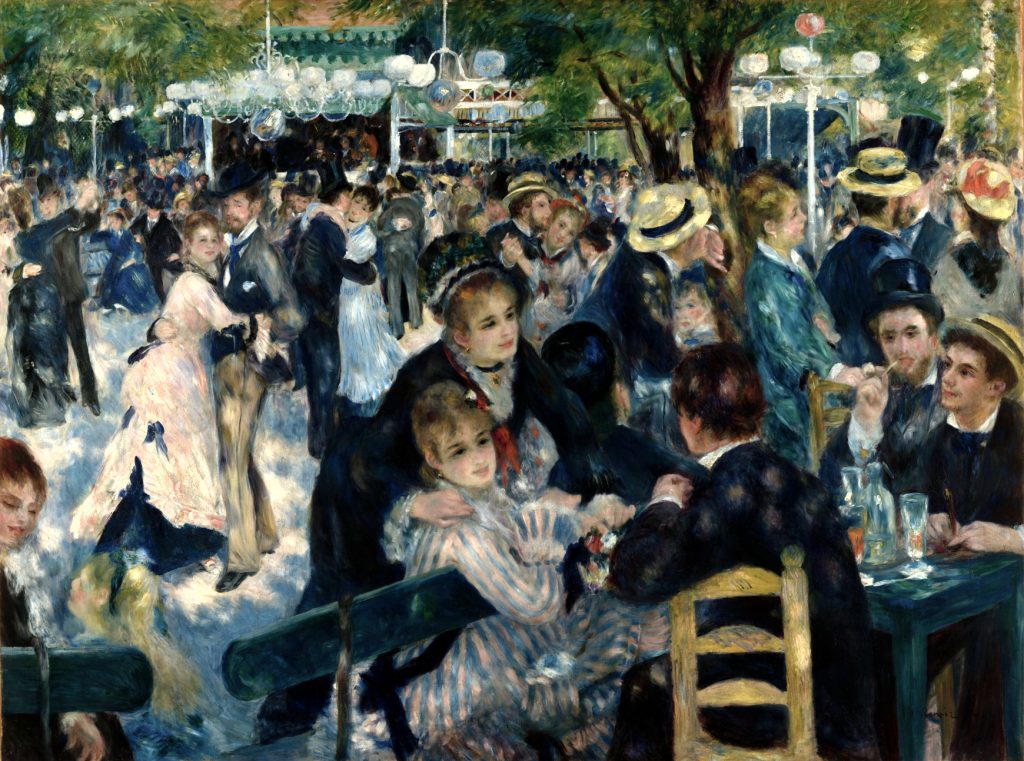
Estelle Samary is the young woman in the foreground wearing a blue and pink striped dress. She and her sister Jeanne visited Le Moulin on Sundays with their parents. Beside Estelle are fellow artists Pierre-Franc Lamy and Norbert Goeneutte and Rivière himself. Behind her, amongst the dancers, is another artist Henri Gervex, Eugène Pierre Lestringuez, a civil servant, and Paul Lhote, an official in the navy and journalist and in the middle distance is Cuban painter Don Pedro Vidal de Solares y Cardenass dancing with Renoir’s model Margot (Marguerite Legrand) with whom Renoir had a brief romance. Margot was one of Renoir’s favourite models from 1875 until she died tragically of typhoid fever in 1879, leaving him distraught and temporarily unable to paint.
According to Rivière, the painting was mainly executed on-site, although Renoir is known to have set up a studio in an abandoned cottage with a large garden near Le Moulin.
It is helpful to remember that while Impressionism was still a nascent art movement, artists such as Renoir, Monet, Degas, and Pissarro had already developed their unique styles and techniques.
Kelly Richman-Abdou describes Renoir’s developing technique in My Modern Met (https://mymodernmet.com/renoir-bal-du-moulin-de-la-galette/)
Renoir, for example, is known for his gauzy brushwork, vivid color palette, and interest in light—all of which he used to produce paintings of his favorite subject matter: people. This approach is evident in Bal du moulin de la Galette; dappled by sunlight, the figures are rendered in loose, luminous brushstrokes. Though many of the subjects are clad in black suits and dresses, a closer look reveals that even these darker hues are made up of a kaleidoscopic collection of colors. “I’ve been 40 years discovering that the queen of all colors was black,” he famously explained.

Renoir’s radical approach to the color black is even more evident in another version of Bal du moulin de la Galette. Rendered in a more sketch-like style, this smaller (30″ by 44″) painting features looser brushwork that enables viewers to more easily identify the different tones that compose seemingly black subject matter. While it is unclear which piece is the original and which is a copy, the paintings are identical in terms of their iconography, from the sunlit setting to the individual subjects.

To understand Renoir’s particular approach to the group portrait, we need only compare Luncheon of the Boating Party and Dance at Le Moulin de la Galette to Manet’s Masked Ball at the Opera House.
This entry about the painting from the National Gallery of Art in Washington explains the fundamental contrast between the works (https://www.nga.gov/collection/art-object-page.61246.html):
Manet came from a well–to–do family, and this painting provides a glimpse of the sophisticated Parisian world he loved… These elegant men and coquettish young women are attending a masked ball held each year during Lent. “Imagine,” ran a description in the newspaper Figaro, “the opera house packed to the rafters, the boxes furnished out with all the pretty showgirls of Paris. . . .’” Manet sketched the scene on site, but painted it over a period of months in his studio. He posed several of his friends—noted writers, artists, and musicians—and even included himself in the crowded scene. He is probably the bearded blond man at right who looks out toward the viewer. At his feet, a fallen dance card bears the painter’s signature.
Renoir, unlike Manet, did not come from a wealthy family. His father, Léonard Renoir, was a modest tailor. At thirteen, he began to work as an apprentice at a porcelain factory. In 1858 when the porcelain factory turned to mechanical reproduction, Renoir earned a living by painting fans and hangings for overseas missionaries. Initially, Renoir took drawing lessons at an ecole gratuite de dessin (free drawing school). In the early 1860s, he attended Charles Gleyre’s studio, where he met Bazille, Alfred Sisley and Claude Monet.
Renoir’s relatively modest means led him to portrait commissions to make his living. His penchant for the genre attracted the attention of wealthy patrons with progressive artistic sensibilities.
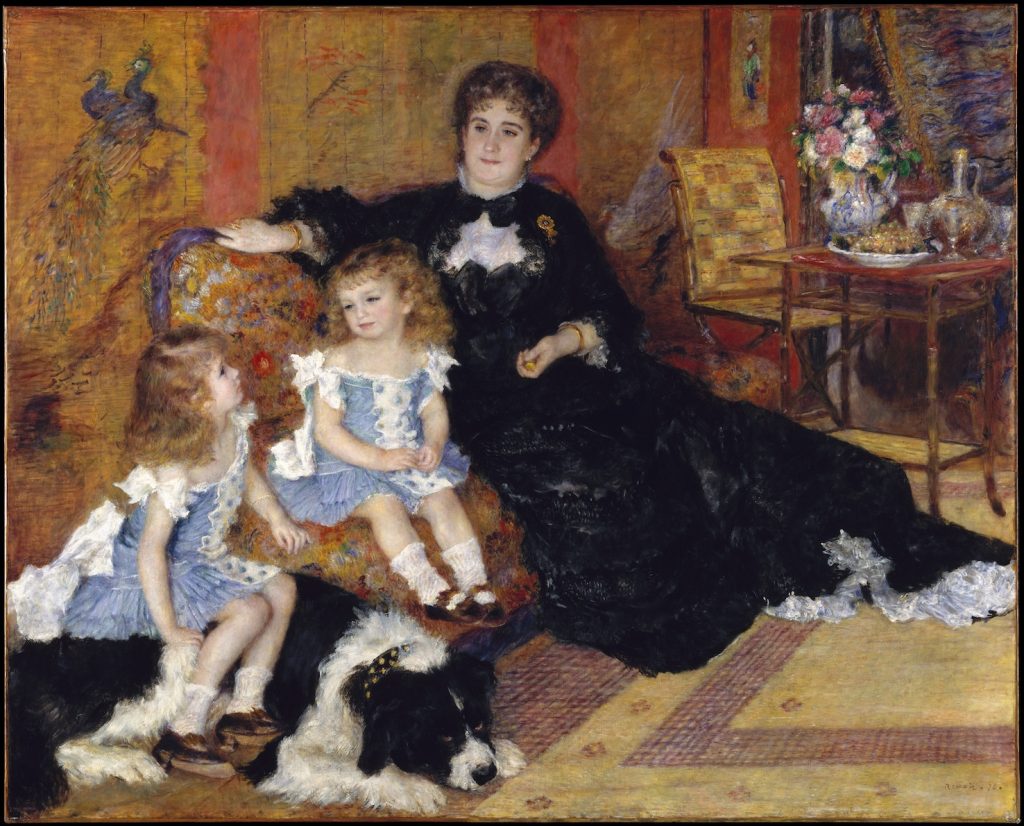
One of his most ambitious society portraits, and a pivotal commission within the context of Renoir’s career, was the portrait of Marguerite Charpentier and her children. It was commissioned by her husband, Georges Charpentier, a publisher who championed the writings of Émile Zola, Gustave Flaubert, and Guy de Maupassant. The couple supported Impressionist painters and collected their works. Renoir’s affiliation with the Charpentiers opened the door to successive portrait commissions within their social circle and lucrative introductions to writers, art critics, collectors and patrons at Marguerite’s elite evening salons.
When the work was exhibited at the Paris Salon, Madame Charpentier intervened to secure its prominent display. Renoir attained the status he sought as a result of his relationship with the distinguished sitter and the interest his work consequently elicited at the Salon.
Madame Charpentier and her Children is often regarded as a pivotal work in Renoir’s oeuvre, not just because it brought recognition and connections but also for the embedded pictorial information it provides. It is a portrait painting that invites us into a world of cultural ideas and beliefs. It is also an important example of Renoir’s adept application of texture and colour.
The family portrait is also a status painting with many luxury goods on display, including Mme Charpentier’s fashionable attire and accessories, furnishings, the tableware. Each object evokes the wealth and refined taste of Mme Charpentier; even her children, like expensive dolls, carry an aura of special value. Their elegant ease, the sensuality of their surroundings, and their very naturalness are signs of their mother’s elitist status. She and the painting as a whole signify the importance of Monsieur Charpentier in absentia.
Cheryl Kathleen Snay’s analysis of the work in “Renoir and the Charpentiers: The Symbiotic Nature of the Artist/Patron Relationship.” (M.A. Thesis, Michigan State University, 1991) is as follows:
The edge of the sofa extends from Mme. Charpentier’s right hand to Georgette’s head, locking the figures into a tight composition analogous to their tight family structure. Movement is emphasized with the sharp diagonal from the lower left to upper right. The white bow of Georgette’s dress, the angle of the peacock’s tail, the wing of the crane behind Mme. Charpentier, the pattern of the rug all point to Mme. Charpentier who dominates the composition as she dominated her salon and her family’s domestic life. The visual space is deep and keeps the viewer an ample distance from the family scene. The size of the canvas and the angle of the poses emphasize the portrait’s formality and monumentality. Viewed from the stairway where the portrait is believed to have been positioned at the Salon, the elevation of the family to the status of an icon would have been all the more prominent.
The painting can easily be seen as representing French nineteenth-century bourgeois society in microcosm for the Charpentiers embraced liberal politics and revolutionary art, published authors of the naturalist and realist school while operating within a very strict social order that revered conservative politics and academic art. The sense of dignified ease and opulent wealth of the picture exists in the painting as a reflection of the conservative side, but Renoir paints it in a freely-brushed, coloristic style that does much to create a tension within the picture reflecting this dichotomy.
At Mme Charpentier’s prompting, the portrait was well received by the critics. In Burty’s review of the Salon, he commented that the portrait was “ruled by a feeling of modern harmony,” and had the “bloom of an outsized pastel.” Pastel was a medium used in the eighteenth century and associated with images of the aristocracy. Renoir’s inclination to incorporate that style in his painting and Burty’s recognition of it was no doubt appreciated by the Charpentiers who sought to make a visual link between themselves and the former aristocracy. Huysmans wrote in his review that Renoir had achieved “exquisite flesh tones,” “ingenious sense of grouping,” and that the painting was executed with skill and daring. Castagnary also reviewed the exhibition and found Renoir’s figures slightly squat but the palette was extremely rich, and the execution free and spontaneous.
It is questionable whether the portrait actually merited all the praise it received, or if the reviewers were somewhat beholden to the sitter and did not want to risk her displeasure. Many were authors whose books Georges Charpentier published and who frequented the Charpentier salons. These may also have been critics who were favorably inclined to the cause of Impressionism anyway and saw Renoir’s participation in the Salon as a way to institutionalize and gain acceptance for their own cause. Renoir’s letters to the Charpentiers published by Michel Florisoone are replete with introductions and requests by Renoir of people who wanted to see the painting at the Charpentier house. The painting was already very popular by the time it was hung in the Salon.
Madame Charpentier and her Children is the most apparent manifestation of the symbiotic relationship between Renoir and Charpentier. Renoir benefitted financially as it was the highest paid commission he had received until that time … The portrait served a purpose for the Charpentiers as well. It asserted a new image of republican nobility and reaffirmed the bourgeois values of family and wealth. The publishing business was never free from economic worries, yet the portraits give the impression of affluence and security.
By examining Renoir’s work for the Charpentiers in all its various manifestations, the patron’s role in the creative process is demystified. Renoir cannot be viewed as a parasite or a passive recipient of his patron’s good will. Renoir was active in securing his own success and Charpentier’s motives were not entirely altruistic.
Success for both the artist and the patron depended on a keen sense of the public’s interests and needs and their own ability to compromise and adapt. In the new democratic society which emerged after 1870, this awareness of the public became crucial. Their relationship was cemented by the fact that they each lived by a similar philosophy. Both attempted to appeal to the public without offending it. They each sought to maintain a balance between the avant-garde and the conservative.
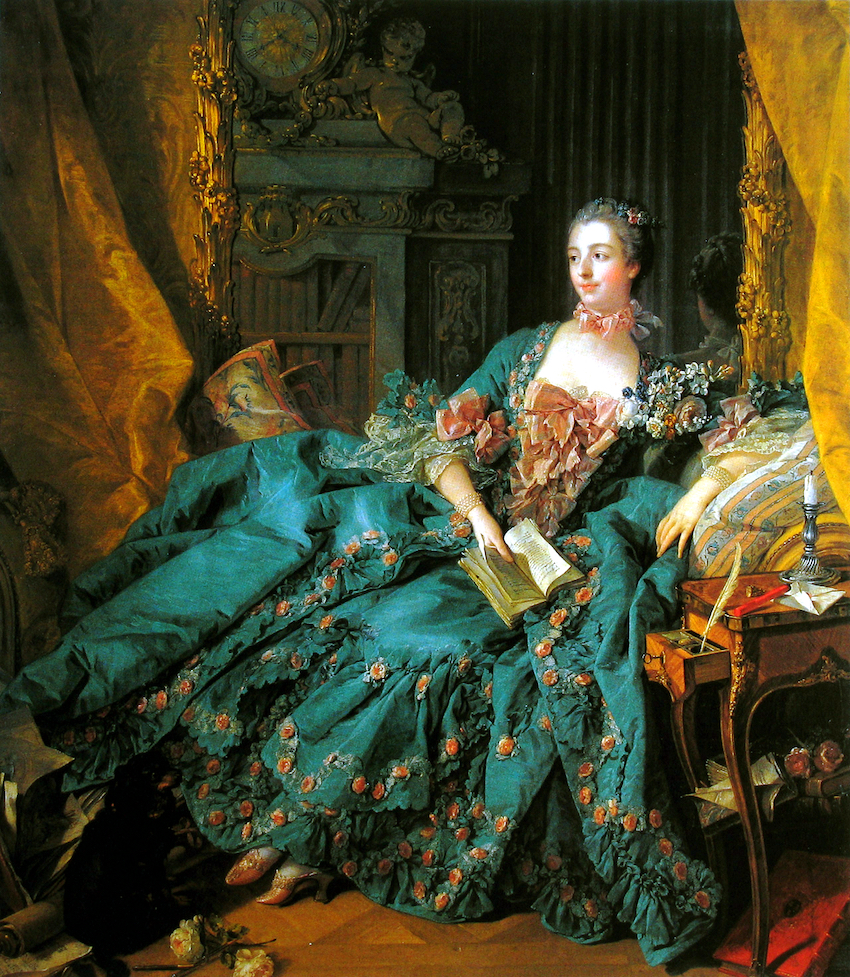
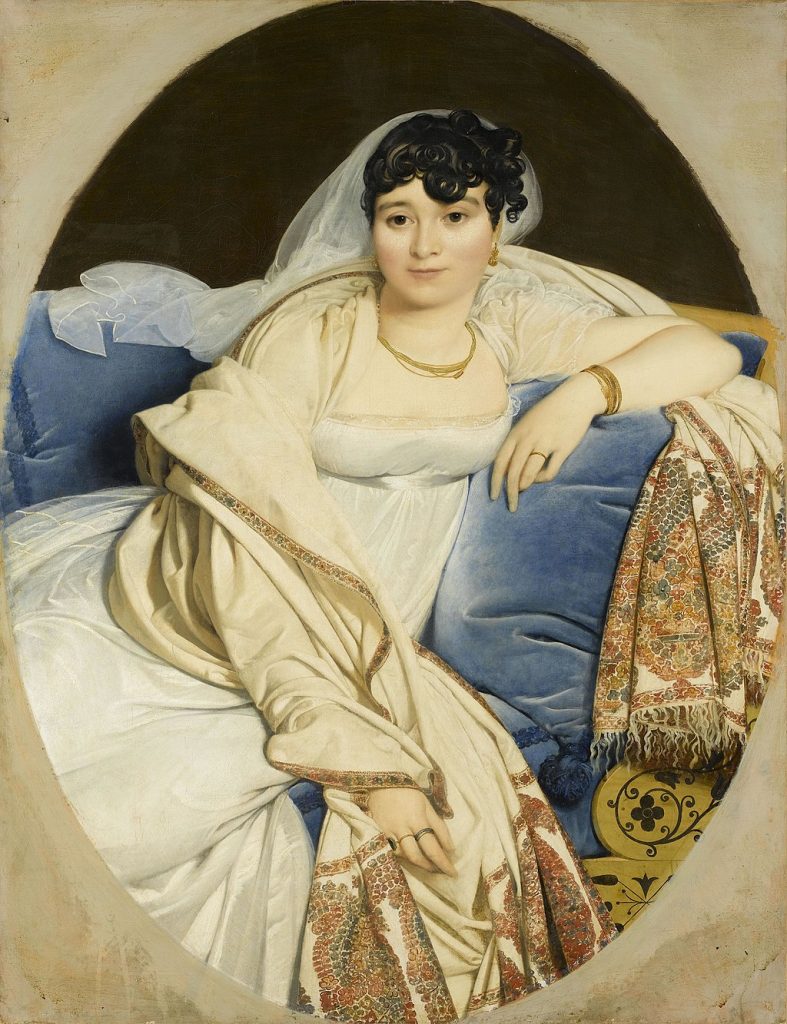
Renoir’s Mme Charpentier bears some resemblance to the opulent representations of Boucher’s Mme de Pompadour and Ingres’ Portrait of Marie-Françoise Rivière. Here, however, the portrayal is refreshingly modern.
5.11
| Renoir’s Images of Children
Renoir continued to be a popular portrait painter throughout the 1870s and 80s. His commissions of patrons’ children were plentiful and sustained him financially. He also frequently painted his own three children. This body of work provides insight into Renoir’s working methods and the stylistic evolution of his portrait practice.
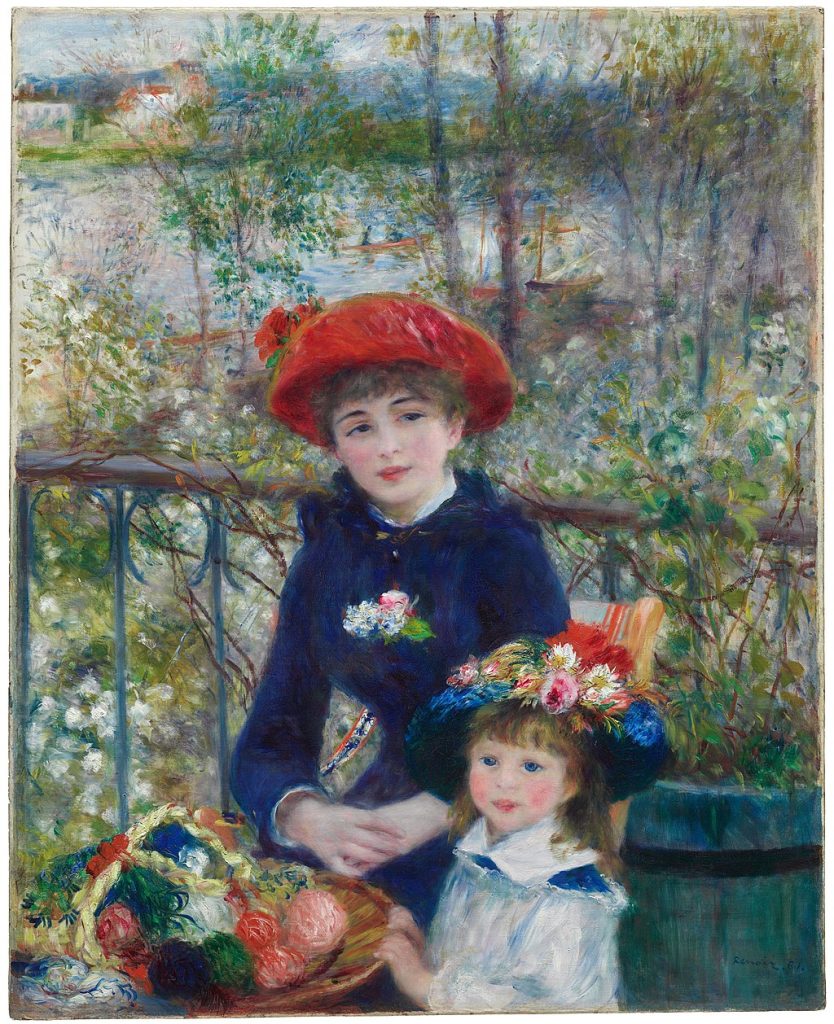
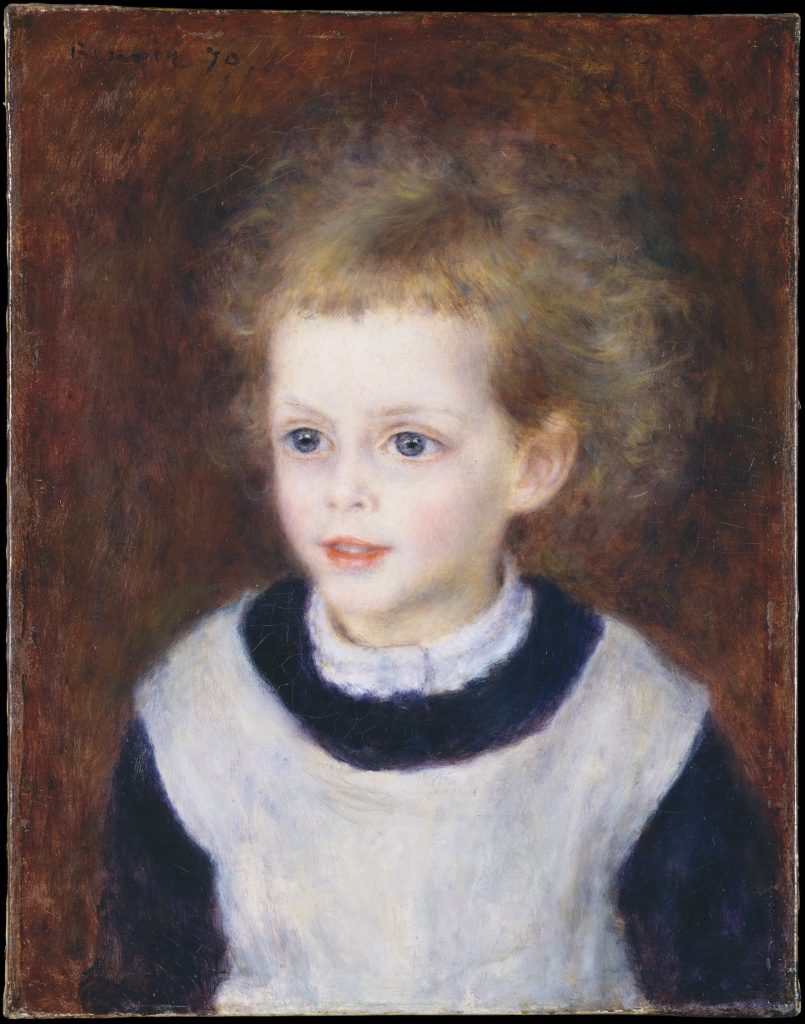
Renoir met one of his most important patrons, the diplomat and banker Paul Berard, at Mme Charpentier’s home in 1878. Berard commissioned a portrait of his daughter Marguerite-Thérèse (Margot), completed the following year. The artist often spent the summer at the Berards’ country home in Wargemont, near Dieppe, on the Normandy coast, where he painted decorative pictures for the house and portraits of the young Berards. The Metropolitan Museum’s collection description states that Renoir’s depictions “ranged from formal commissions to more intimate works that reflect a genuine fondness for the four Berard children. According to Margot’s nephew, Renoir painted this spirited portrait to ‘cheer her up’ after a disagreeable lesson with her German tutor had brought her to tears.”
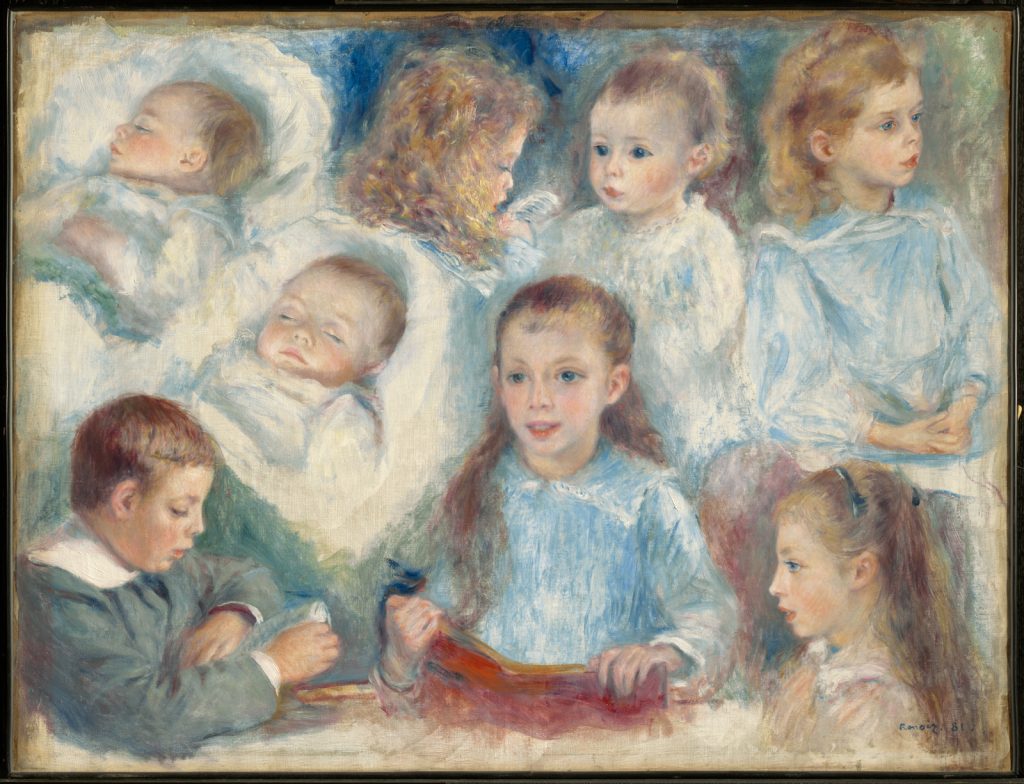
A painting of Berard’s children in the collection of the Clark Institute exemplifies the freedom with which Renoir approached portraits of children, a spontaneity of execution that enhanced the natural individuality of each child. Unposed and painted at different times, the images are made to inhabit an ambiguous space. Some children appear more than once, adding to the sense of a fragmented reality, an informality that suggests the preliminary sketch. Despite the unusual format, Renoir considered The Berard Children a finished painting and exhibited it as such in 1881.
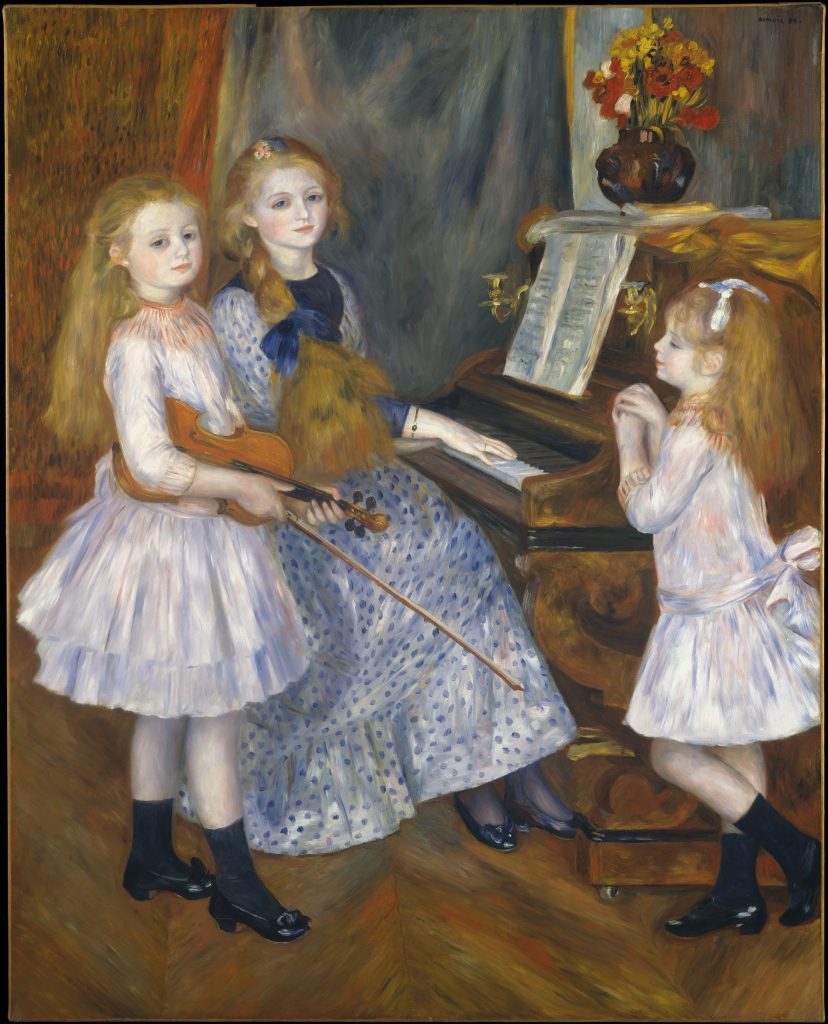
Renoir’s approach to the depiction of children altered over time, influenced by his developing interest in the Parnassian movement, his trip to Italy from 1881 to 1882, and the birth of his children.
Parnassianism, a literary style of 19th-century French poetry, was influenced by the French poet, dramatist, novelist, journalist, and art and literary critic. novelist Théophile Gautier’s doctrine of art for art’s sake, the belief that art should be valued for its formal and aesthetic characteristics primarily. Renoir’s contact with the Parnassian literary movement is supported by his painting The Daughters of Catulle Mendès, which was made for his friend the poet Mendès, one of the protégés of Gautier whom Renoir had met at Mme Charpentier’s salon.
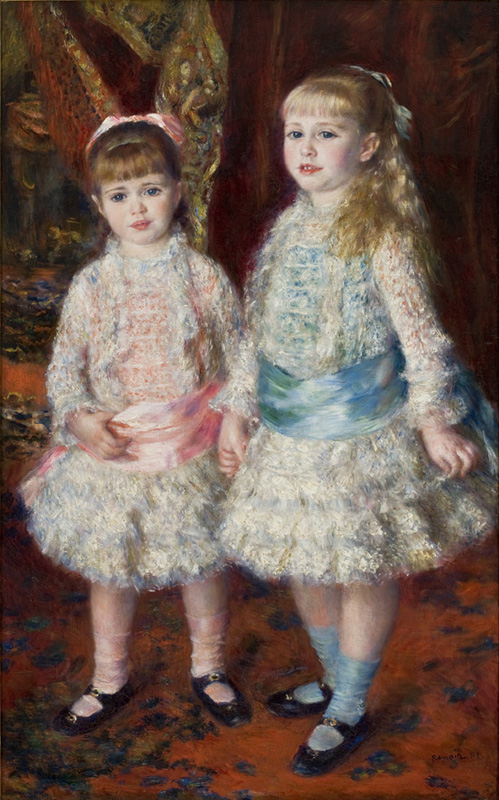
By the late 1870s Renoir was becoming dissatisfied with his work as an Impressionist figure painter. He had abstained from exhibiting his canvases in the fourth Impressionist exhibition in 1878 and had come to regard the formlessness of Impressionism as inadequate in regard to his portraits in particular, works he was increasingly uncertain about.
According to Barbara Ehrlich White in “Renoir’s Trip to Italy” (Art Bulletin 51 no. 4 (December 1969): 333-35), he wrote to the critic-collector Theodore Duret in March 1881 that “he didn’t know whether the portrait Mlles Cahen d’Anvers, which he sent to the Salon of 1881, was good or bad. Early in 1882, he wrote his patron Mme Georges Charpentier complaining that in Paris ‘on est oblige de se contenter de peu.’ [We have to settle for little]. He hoped that as a result of his Italian experiments his future figures would be better.”
By this time, Renoir had attained financial independence and decided to travel. His pilgrimage to Italy in 1881 led him towards more Classical ideas of draftsmanship, composition, modelling and a greater compositional unity.
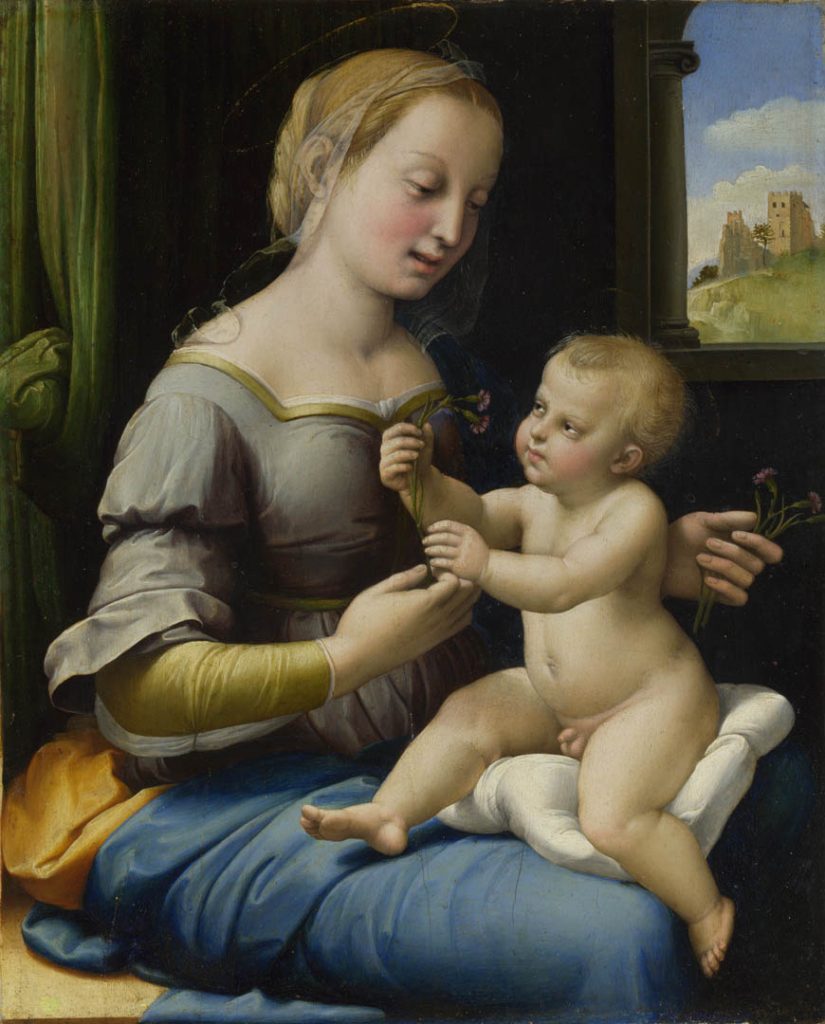

In Rome, Raphael’s paintings and frescoes at the Villa Farnesina significantly impacted Renoir, who wrote Durand-Ruel that: “I have seen the Raphaels. I

Renoir’s post-Italian portraits emphasize rigorous lines and structure yet still retain the chromatic vibrancy of his early works. The classical Impressionism which characterizes his later work is in full evidence in his images of children and his new-found interest in portraying mothers and nursemaids breastfeeding infants.
Alice Maggie Hazard, in “Renoir’s Children” (Apollo Magazine 174, no. 589 (July/August 2011): 50-55), writes that Renoir’s child portraits changed dramatically in his later works, particularly following the birth of his children. His paintings of Pierre, Jean and Claude reflect deep love and fatherly responsibility.
Pierre’s birth dramatically changed Renoir’s life and inspired ‘a true revolution’ in the way he viewed his world. He constantly sketched the baby, focusing on the appearance of his flesh.
This fascination continued with Jean’s birth in 1894 and Claude’s in 1901… In Maternity or Child at the Breast [Mother Nursing her Child] Renoir painted Aline breastfeeding Pierre outside in the garden, indicating the importance the artist placed on this natural method of feeding. … He held that bottle feeding would produce men who were anti-social, lacked any kind of gentle feelings and took drugs to calm their nerves. Moreover, Renoir liked to think of a baby gazing at the bright coloured bodice of a woman, and on cheerful objects such as flowers, as well as on a healthy mother’s face.
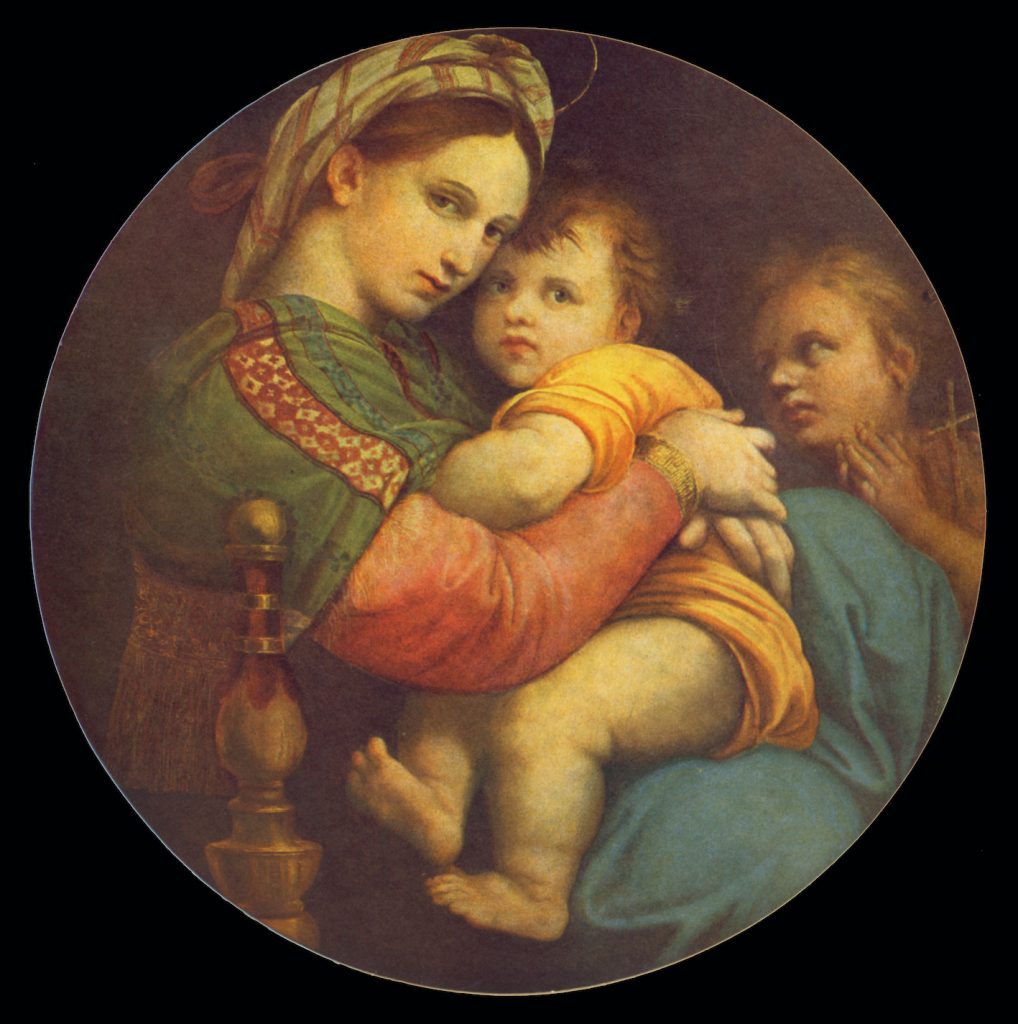
Renoir’s Mother Nursing her Child reflects the influence of Raphael’s Virgin and Child paintings in its compositional balance and the centralized and focused positioning of the figures. His son Jean explained that “Raphael’s paintings came to represent for him the image of motherhood: in Italy, he remembered, ‘every woman nursing a child is a Virgin by Raphael.’” (Renoir, My Father, New York: Little Brown, 1952, 225)
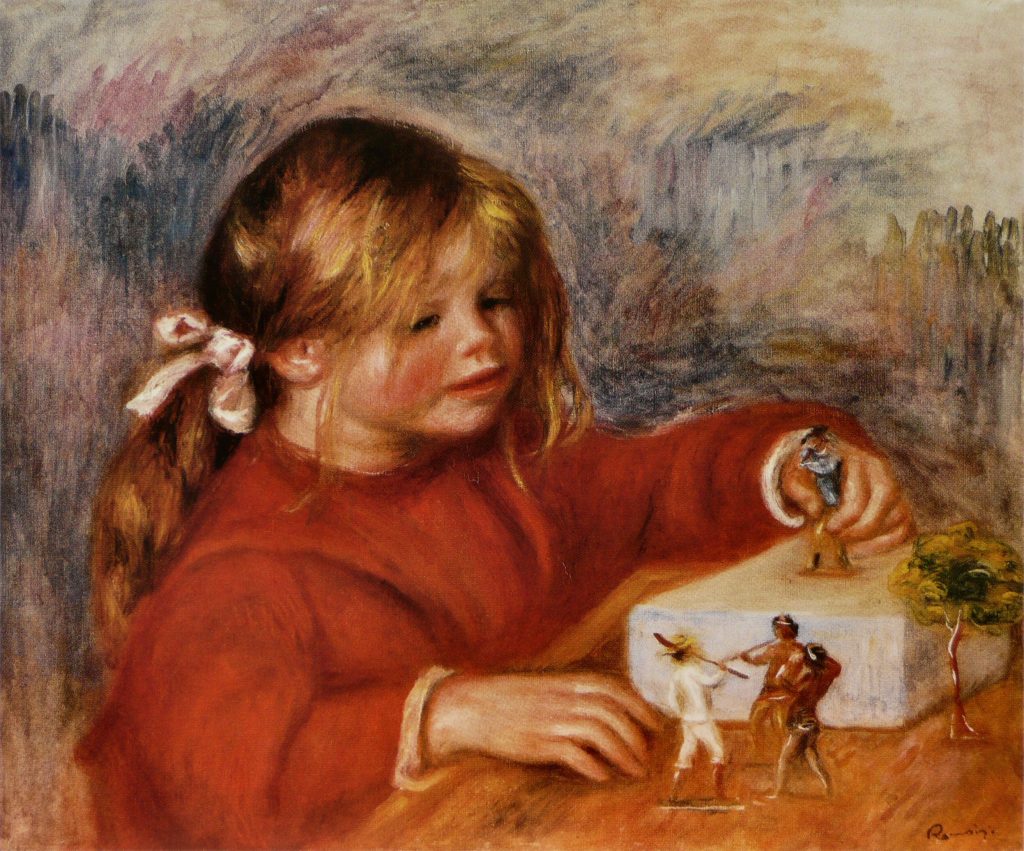
Renoir’s approach to painting his children’s likenesses reminds us of the profoundly personal complexities that inform portrait painting. As his son stated in his book, “Certain of Renoir’s biographers have maintained that the reason he [Renoir] insisted on keeping my hair long was that he liked to paint it. That is quite true, but there was another which had equal weight. A thick head of hair affords considerable protection against falls… as well as the danger from the sun’s rays.”
Although Renoir had proven his proficiency in depicting children earlier in works such as Madame Georges Charpentier and her Children, the difference in his formal attitude after Pierre’s birth is conspicuous. His depictions of children from then on suggest individuality and expressiveness, a significant transformation beyond their former role as accessories within constructed and status-driven formal portraits.
Modern portrait painting was influenced by the evolution of portrait photography. Both mediums were challenged and altered by each other aesthetically and ideologically, resulting in new forms of representation and a reshaping of the fundamental interactions between sitters, artists, and viewers.
By the end of the nineteenth century, portraits of people evolved from realistic representations to interpretive and symbolic renditions of character and inner life. The photographic picture became the most popular medium for capturing a likeness. At the same time, painters could now freely explore the expressive potential of visual art in the representation of the human subject.
The relationship between photography and painting became increasingly more complex than a simplistic notion of artistic influence can explain. Both media were grappling with problems related to the constructed, conventional image versus candid images, aesthetics versus media-specific concerns and dealing with the artist’s and viewer’s role in creating and interpreting images.
By the time portrait photographs became available to all population tiers, Impressionist painters had largely replaced high-status portrait subjects with people from their immediate entourage, using avant-garde techniques and processes to produce portraits that broke traditional rules of the genre. While for some late 19th-century art critics and academicians, the successful portrait was indelibly linked to likeness, this soon gave way to an expanded understanding of identity and its representation. At the same time, pictorial photographers challenged the medium’s original mimetic concerns to develop a style that would culminate in modern photography’s fine art status.


